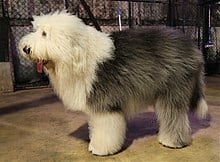185 Best Dog Breeds | Top Dog Breeds |
German Shepherd

The German Shepherd (German: Deutscher Schäferhund, German pronunciation: [ˈdɔʏtʃɐ ˈʃɛːfɐˌhʊnt]) is a breed of medium to large-sized working dog that originated in Germany. According to the FCI, the breed’s English language name is German Shepherd Dog. The breed name was officially known as the “Alsatian Wolf Dog” in the UK from after the First World War until 1977 when its name was changed back to German Shepherd. Despite its wolf-like appearance, the German Shepherd is a relatively modern breed of dog, with its origin dating to 1899.
As a herding dog, German Shepherds are working dogs developed originally for herding sheep. Since that time, however, because of their strength, intelligence, trainability, and obedience, German Shepherds around the world are often the preferred breed for many types of work, including disability assistance, search-and-rescue, police and military roles and acting. The German Shepherd was the third-most registered breed by the American Kennel Club in 2020, and seventh-most registered breed by The Kennel Club in the United Kingdom in 2016.
Read More About German Shepherd / Source
Portuguese Water Dog
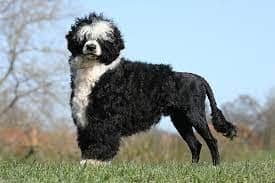
The Portuguese Water Dog originated from the Algarve region of Portugal. From there the breed expanded to all around Portugal’s coast, where they were taught to herd fish into fishermen’s nets, retrieve lost tackle or broken nets, and act as couriers from ship to ship, or ship to shore.
Portuguese Water Dogs rode in fishing trawlers as they worked their way from the Atlantic waters of Portugal to the waters off the coast of Iceland fishing for cod.In Portuguese, the breed is called cão de água (IPA: [ˈkɐ̃w dɨ ˈaɡwɐ]; literally ‘dog of water’). In Portugal, the dog is also known as the Algarvian Water Dog (cão de água algarvio), or Portuguese Fishing Dog (cão pescador português). cão de água de pêlo ondulado is the name given to the wavy-haired variety, and cão de água de pêlo encaracolado is the name for the curly-coated variety.The Portuguese Water Dog is a fairly rare breed; only 36 Portuguese Water Dogs were entered for Britain’s Crufts competition in 2013. Though some breeders claim they are a hypoallergenic dog breed, there is no scientific evidence to support the claim that hypoallergenic dog breeds exist. Their non-shedding qualities have made them more popular in recent years.
The Portuguese Water Dog has recently gained more fame by being the chosen breed of US President Barack Obama, who had two of them, Bo and Sunny. The Obama family chose Sunny for the breed’s comparatively hypoallergenic nature, while Bo was given to them by Senator Ted Kennedy.
Read More About Portuguese Water Dog / Source
Golden Retriever
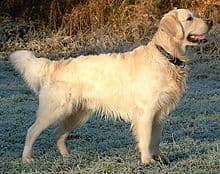
The Golden Retriever is a medium-sized breed of retriever developed in the United Kingdom. It is characterised by a gentle and affectionate nature and a striking golden coat. It is commonly kept as a pet and is among the most frequently registered breeds in several Western countries. It is a frequent competitor in dog shows and obedience trials; it is also used as a gundog, and may be trained for use as a guide dog.
The Golden Retriever was created by Sir Dudley Marjoribanks at his Scottish estate Guisachan in the late nineteenth century. He cross-bred Flat-coated Retrievers with Tweed Water Spaniels, with some further infusions of Red Setter, Labrador Retriever and Bloodhound. The breed was recognised by the Kennel Club in 1913, and during the interwar period spread to many parts of the world.
Read More About Golden Retriever / Source
Neapolitan Mastiff
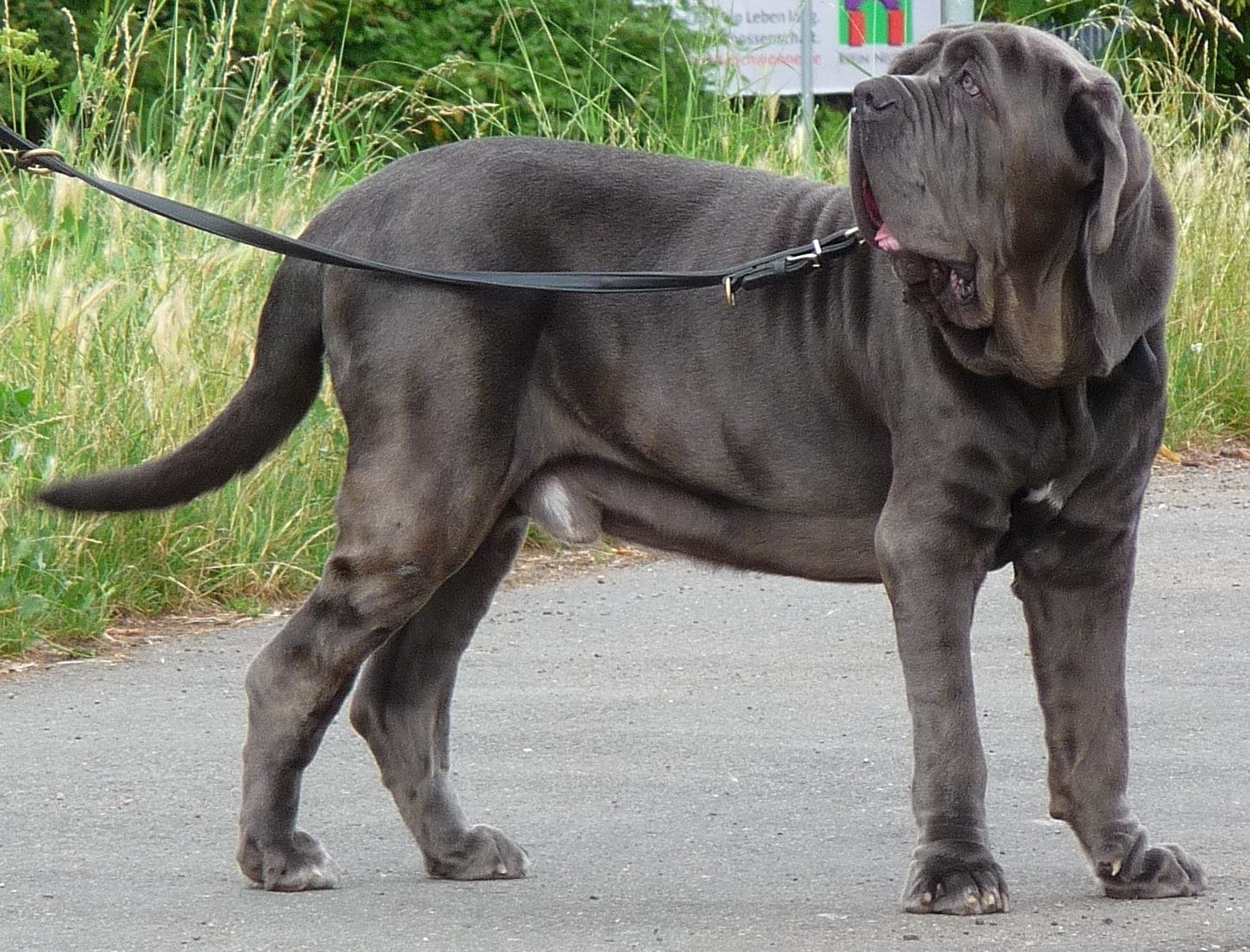
The Neapolitan Mastiff or Mastino Napoletano is an Italian breed of large dog. It descends from the traditional guard dogs of central Italy. It was recognised as a breed by the Ente Nazionale della Cinofilia Italiana in 1949, and accepted by the Fédération Cynologique Internationale in 1956.The breed is closely related to the Cane Corso.
Read More About Neapolitan Mastiff / Source
Pembroke Welsh Corgi

The Pembroke Welsh Corgi (; Welsh for “dwarf dog”) is a cattle herding dog breed that originated in Pembrokeshire, Wales. It is one of two breeds known as a Welsh Corgi. Pembroke Welsh Corgis descended from the Spitz family of dogs. The other is the Cardigan Welsh Corgi, which descend from the Teckel family of dogs, which also produced the Dachshund.
Pembroke Welsh Corgis are famous as the preferred breed of Queen Elizabeth II, who has owned more than 30 Royal corgis during her reign. Although these dogs have been favoured by British royalty for more than seventy years, among the British public they have recently fallen into decline in terms of popularity and demand. However, they remain very popular in the United States. Cities such as New York, Boston, Los Angeles, and San Francisco hold annual “Corgi Meetups” in which hundreds of dogs and their owners congregate to spend the day.The Pembroke Welsh Corgi has been ranked 11th in Stanley Coren’s The Intelligence of Dogs, which states that the breed is considered an excellent working dog.
According to the American Kennel Club, Pembroke Welsh Corgis were ranked 11th most popular breed of dog in 2020.
Read More About Pembroke Welsh Corgi / Source
Bulldog
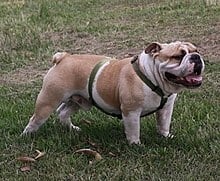
The Bulldog, also known as the English Bulldog or British Bulldog, is a medium-sized dog breed. It is a muscular, hefty dog with a wrinkled face and a distinctive pushed-in nose. The Kennel Club (UK), the American Kennel Club (US), and the United Kennel Club (US) oversee breeding records. Bulldogs are popular pets; they were the fifth most popular purebreed in the US in 2017 according to the American Kennel Club.Bulldogs have a longstanding association with British culture, as the BBC wrote: “to many the Bulldog is a national icon, symbolising pluck and determination.” During World War II, Bulldogs were often likened to Prime Minister Winston Churchill and his defiance of Nazi Germany. The Bulldog Club (England) was formed in 1878, and the Bulldog Club of America was formed in 1890.
Read More About Bulldog / Source
Dachshunds
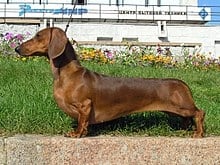
The dachshund (UK: DAKS-huund, -ənd, -huunt or US: DAHKS-huunt, -huund, -ənt; German: “badger dog”), also known as the wiener dog, badger dog, and sausage dog, is a short-legged, long-bodied, hound-type dog breed. They may be smooth-haired, wire-haired, or long-haired.
The standard-sized dachshund was developed to scent, chase, and flush out badgers and other burrow-dwelling animals, while the miniature dachshund was bred to hunt small animals such as rabbits and other smaller animals.According to the American Kennel Club, the dachshund was ranked 12th in popularity among dog breeds in the United States in 2018.
Read More About Dachshunds / Source
Pug
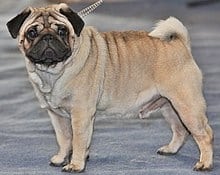
The pug is a breed of dog originally from China, with physically distinctive features of a wrinkly, short-muzzled face and curled tail. The breed has a fine, glossy coat that comes in a variety of colors, most often light brown (fawn) or black, and a compact, square body with well-developed muscles.
Pugs were brought from China to Europe in the sixteenth century and were popularized in Western Europe by the House of Orange of the Netherlands, and the House of Stuart. In the United Kingdom, in the nineteenth century, Queen Victoria developed a passion for pugs which she passed on to other members of the Royal family.
Pugs are known for being sociable and gentle companion dogs. The American Kennel Club describes the breed’s personality as “even-tempered and charming”. Pugs remain popular into the twenty-first century, with some famous celebrity owners.
Dalmatin
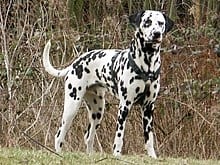
The Dalmatian is a breed of medium-sized dog, noted for its unique white coat marked with black or brown-colored spots. Originating as a hunting dog, it was also used as a carriage dog in its early days. The origins of this breed can be traced back to present-day Croatia and its historical region of Dalmatia. It is thought that early ancestors of the breed were certain breeds of pointers and a spotted Great Dane. Today, it is a popular family pet and many dog enthusiasts enter Dalmatians into kennel club competitions.
Read More About Dalmatin / Source
St. Bernard

The Saint Bernard or St. Bernard (UK: , US: ) is a breed of very large working dog from the Western Alps in Italy and Switzerland. They were originally bred for rescue work by the hospice of the Great St Bernard Pass on the Italian-Swiss border. The hospice, built by and named after Italian monk Bernard of Menthon, acquired its first dogs between 1660 and 1670. The breed has become famous through tales of Alpine rescues, as well as for its large size, and gentle temperament.
Read More About St. Bernard / Source
Beagle

The beagle is a breed of small scent hound, similar in appearance to the much larger foxhound. The beagle was developed primarily for hunting hare (beagling). Possessing a great sense of smell and superior tracking instincts, the beagle is the primary breed used as a detection dog for prohibited agricultural imports and foodstuffs in quarantine around the world. The beagle is intelligent. It is a popular pet due to its size, good temper, and a lack of inherited health problems.
The modern breed was developed in Great Britain around the 1830s from several breeds, including the Talbot Hound, the North Country Beagle, the Southern Hound, and possibly the Harrier.
Beagles have been depicted in popular culture since Elizabethan times in literature and paintings, and more recently in film, television, and comic books.
Read More About Beagle / Source
Rottweiler

The Rottweiler (, UK also ) is a breed of domestic dog, regarded as medium-to-large or large. The dogs were known in German as Rottweiler Metzgerhund, meaning Rottweil butchers’ dogs, because their main use was to herd livestock and pull carts laden with butchered meat to market. This continued until the mid-19th century when railways replaced droving. Although still used to herd stock in many parts of the world, Rottweilers are now also used as search and rescue dogs, guard dogs, and police dogs.
Read More About Rottweiler / Source
Dobermann Pinscher

The Dobermann, (; German pronunciation: [ˈdoːbɐman]) or Doberman Pinscher in the United States and Canada, is a medium-large breed of domestic dog that was originally developed around 1890 by Karl Friedrich Louis Dobermann, a tax collector from Germany. The Dobermann has a long muzzle. It stands on its pads and is not usually heavy-footed. Ideally, they have an even and graceful gait. Traditionally, the ears are cropped and posted and the tail is docked. However, in some countries, these procedures are now illegal. Dobermanns have markings on the chest, paws/legs, muzzle, above the eyes, and underneath the tail.
Dobermanns are known to be intelligent, alert, and tenaciously loyal companions and guard dogs. Personality varies a great deal between each individual but, if taken care of and properly trained, they are generally considered to be loving and devoted companions. The Dobermann is driven, strong, and sometimes stubborn. With a consistent approach, they can be easy to train and will learn very quickly.
Read More About Dobermann Pinscher / Source
English Springer
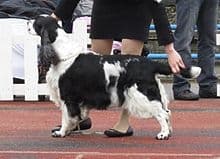
The English Springer Spaniel is a breed of gun dog in the Spaniel group traditionally used for flushing and retrieving game. It is an affectionate, excitable breed with a typical lifespan of twelve to fourteen years. They are very similar to the Welsh Springer Spaniel and are descended from the Norfolk or Shropshire Spaniels of the mid-19th century; the breed has diverged into separate show and working lines. The breed suffers from average health complaints. The show-bred version of the breed has been linked to “rage syndrome”, although the disorder is very rare. It is closely related to the Welsh Springer Spaniel and very closely to the English Cocker Spaniel; less than a century ago, springers and cockers would come from the same litter. The smaller “cockers” hunted woodcock while the larger littermates were used to flush, or “spring”, game. In 1902, The Kennel Club recognized the English Springer Spaniel as a distinct breed. They are used as sniffer dogs on a widespread basis. The term Springer comes from the historic hunting role, where the dog would flush (spring) birds into the air.
Read More About English Springer / Source
Spaniels(Cocker)

The English Cocker Spaniel is a breed of gun dog. It is noteworthy for producing one of the most varied numbers of pups in a litter among all dog breeds. The English Cocker Spaniel is an active, good-natured, sporting dog standing well up at the withers and compactly built. There are “field” or “working” cockers and “house” cockers. It is one of several varieties of spaniel and is the foundation of its American cousin, the American Cocker Spaniel. The English Cocker is closer to the working-dog form of the Field Spaniel and the English Springer Spaniel.
Outside the US, the breed is usually known simply as the Cocker Spaniel, as is the American Cocker Spaniel within the US. The word cocker is commonly held to stem from their use to hunt woodcock. The breed can have litters of anywhere from 3–12 puppies.
Read More About Spaniels(Cocker) / Source
Viszla

The Vizsla (Hungarian: [ˈviʒlɒ]) is a dog breed from Hungary and belongs to the Federation Cynologique Internationale (FCI) group 7 (Pointing Dogs), the Canadian Kennel Club (CKC) group 1 (Sporting group), and the American Kennel Club (Sporting group). The Hungarian or Magyar Vizsla or Smooth-Haired Vizsla are sporting dogs and loyal companions. The Vizsla’s medium size is one of the breed’s most appealing characteristics. As a hunter of fowl and upland game, the Vizsla has held a prominent position among sporting dogs – that of household companion and family dog.
The Vizsla is a natural hunter endowed with an excellent nose and outstanding trainability. It was bred to work in fields, forests or bodies of water. Although they are lively, gentle-mannered, demonstrably affectionate and sensitive, they are also fearless and possess a well-developed protective instinct.
Read More About Viszla / Source
Akita
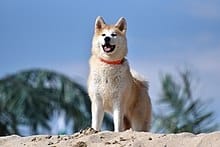
The Akita (秋田犬, Akita-inu, Japanese pronunciation: [akʲita.inɯ]) is a large breed of dog originating from the mountainous regions of northern Japan. The two separate varieties of Akita are a Japanese strain, commonly called Akita Inu (inu means dog in Japanese) or Japanese Akita, and an American strain, known as the Akita or American Akita. The Japanese strain occurs in a narrow palette of colors, with all other colors considered atypical of the breed, while the American strain comes in all dog colors. The Akita has a short double coat similar to that of many other northern spitz breeds such as the Siberian Husky, but long-coated dogs can also be found in many litters due to a recessive gene.
The Akita is a powerful, independent,and dominant breed, commonly aloof with strangers, but affectionate with family members. As a breed, Akitas are generally hardy.
In all countries except the United States, the Japanese and American strains of Akita are considered two separate breeds. In the United States, however, the two strains are considered a single breed with differences in type. For a while, the American strain of Akita was known in some countries as the Great Japanese Dog. Both forms of Akita are probably best known worldwide from the true story of Hachikō, a loyal Akita that lived in Japan before World War II.
Read More About Akita / Source
Samoyed

The Samoyed ( SAM-ə-yed or sə-MOY-ed; Russian: Самое́дская соба́ка or Самое́д) is a breed of medium-sized herding dogs with thick, white, double-layer coats. They are a spitz-type dog which takes its name from the Samoyedic peoples of Siberia.
Read More About Samoyed / Source
Cesky Terrier

The Cesky Terrier ( CHES-kee; Czech: Český teriér, lit. ‘Bohemian Terrier’ or ‘Czech Terrier’) is a small terrier type dog originating in Czechoslovakia.
Read More About Cesky Terrier / Source
Husky
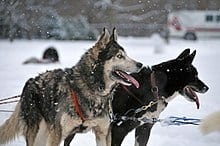
Husky is general term for a dog used in the polar regions, primarily and specifically for work as sled dogs. It refers to a traditional northern type, notable for its cold-weather tolerance and overall hardiness. Though dogs such as the AKC/CKC registered Alaskan Malamute may not contain “Husky” in their official name, the term still encompasses dogs of their type. Modern racing huskies which maintain arctic breed traits (also known as Alaskan huskies) represent an ever-changing crossbreed of the fastest dogs.Huskies have continued to be used in in sled-dog racing, as well as expedition and trek style tour businesses, and as a means of essential transportation in rural communities. Huskies are also kept as pets, and groups work to find new pet homes for retired racing and adventure-trekking dogs.
Read More About Husky / Source
German Shorthaired Pointer

The German Shorthaired Pointer (GSP) is a medium to large sized breed of pointing dog developed in the 19th century in Germany for hunting. A versatile hunting breed, being an all-purpose gun dog suitable for both land and water, they are streamlined yet powerful with strong legs. While a hunting breed that retains a strong drive to find and chase game, they are extremely energetic and can excel at a wide variety of dog sports. Their demeanor when well-socialized is friendly toward both people and fellow canines, with some tendency to be “velcro dogs”.
The German Shorthaired Pointer has a short coat that comes in various combinations, generally a mix of liver and white. They have moderately long floppy ears set high on the head. Longer, broad, and strong, muzzles allow retrieval of heavier game. The dog’s profile should be straight or strongly Roman nosed; any dished appearance to the profile is incorrect according to breed standards. Their eyes are generally brown, with darker eyes being desirable; yellow or “bird of prey” eyes are a fault. The tail is commonly docked, although this is now prohibited in some countries. In competition they are penalized if the tail is curved either up or down while the dog is moving. When the GSP is in classic point stance, the tail should be held straight out from the body, forming a line with the pointing head and body. Like all German pointers, GSPs have webbed feet and are known for going after waterfowl in the water.
The German Shorthaired Pointer is a member of the Sporting Group. In 2016, CJ, a 3-year-old German Shorthaired Pointer, won the Best in Show award at the 140th Westminster Kennel Club Dog Show.
Read More About German Shorthaired Pointer / Source
Yorkshire Terrier
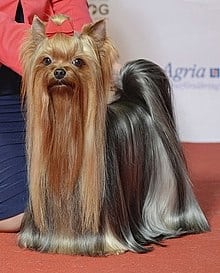
The Yorkshire Terrier (often shortened as Yorkie) is one of the smallest dog breeds of the terrier type, and of any dog breed. The breed developed during the 19th century in Yorkshire, England. Ideally its maximum size is 7 pounds (3.2 kg). A popular companion dog, the Yorkshire Terrier has also been part of the development of other breeds, such as the Silky Terrier. Most have a black and tan coat, but they are also known to have a silverish-grey or a blonde coat.
Yorkshire terriers are playful and energetic dogs. They often exhibit separation anxiety when left alone, which is a reason that some owners keep two dogs.
Read More About Yorkshire Terrier / Source
Boxer
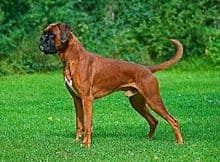
The Boxer is a medium to large, short-haired breed of dog, developed in Germany. The coat is smooth and tight-fitting; colors are fawn, brindled, or white, with or without white markings. Boxers are brachycephalic (they have broad, short skulls), have a square muzzle, mandibular prognathism (an underbite), very strong jaws, and a powerful bite ideal for hanging on to large prey. The Boxer was bred from the Old English Bulldog and the now extinct Bullenbeisser, which became extinct by crossbreeding rather than by a decadence of the breed. The Boxer is a member of both The Kennel Club and American Kennel Club (AKC) Working Group.The first Boxer club was founded in 1895, with Boxers being first exhibited in a dog show for St. Bernards in Munich the next year. Based on 2013 AKC statistics, Boxers held steady as the seventh-most popular breed of dog in the United States for the fourth consecutive year. According to the AKC’s website, though, the boxer is now the 11th-most popular dog breed in the United States.
Read More About Boxer / Source
Great Dane
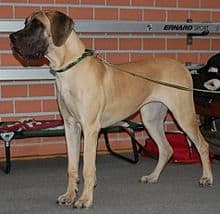
The Great Dane, also known as the German Mastiff or Deutsche Dogge, is a breed of dog from Germany. The Great Dane descends from hunting dogs known from the Middle Ages and is one of the largest breeds in the world.
Read More About Great Dane / Source
Cvalier King Charles Spaniel
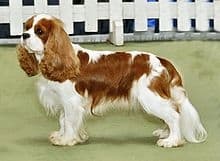
The Cavalier King Charles Spaniel is a small breed of spaniel classed in the toy group of The Kennel Club and the American Kennel Club that originated in the United Kingdom. Since 2000, it has grown in popularity in the United States and ranks as the 17th most popular pure-breed in the United States. It has a silky, smooth coat and commonly a smooth undocked tail. The breed standard recognizes four colours: Blenheim (chestnut and white), tricolour (black/white/tan), black and tan, and ruby. The breed is generally friendly, placid, and good with both children and other animals; however, they require much human interaction. Since they are family dogs, it is recommended to not leave one alone for long periods at a time. The expected lifespan of a Cavalier King Charles Spaniel is between nine and fourteen years.The Cavalier King Charles changed dramatically in the late 17th century, when it was interbred with flat-nosed breeds. Until the 1920s, the Cavalier shared the same history as the smaller King Charles Spaniel. (It is to be noted that the King Charles Spaniel, also known as the English Toy Spaniel, is a completely separate breed than the Cavalier King Charles Spaniel.) Breeders attempted to recreate what they considered to be the original configuration of the breed—a dog resembling Charles II’s King Charles Spaniel of the Restoration.
Read More About Cvalier King Charles Spaniel / Source
Miniature Schnauzer
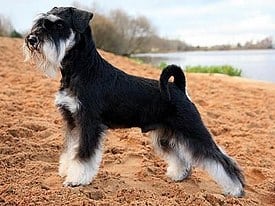
The Miniature Schnauzer is a breed of small dog of the Schnauzer type that originated in Germany in the mid-to-late 19th century. Miniature Schnauzers may have been developed from the smallest specimens of the Standard Schnauzer, or crosses between the standard and one or more smaller breeds such as the Affenpinscher, Miniature Pinscher, and Poodles, as farmers bred a small dog that was an efficient ratting dog. They are described as “spunky” but aloof dogs, with good guarding tendencies without some guard dogs’ predisposition to bite. Miniature Schnauzers are recognized in four colors internationally: solid black, black and silver, salt and pepper, and white.It is the most popular Schnauzer breed, and remains one of the most popular worldwide, primarily for its temperament and relatively small size. As of 2017 it is the 17th most popular breed in the U.S.
Read More About Miniature Schnauzer / Source
Shih Tzu
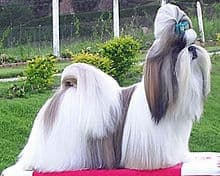
The Shih Tzu (UK: , US: ; Chinese: 西施犬; pinyin: Xī Shī quǎn literally “Hsi Shih dog”) is an Asian toy dog breed originating from Tibet. This breed is well-known for their short snout and large round eyes, as well as their ever growing coat, floppy ears, and short and stout posture. Although small in size, they are notorious for their largely fun and playful personality, and calm and friendly temperament. They are highly independent dogs, and are able to adapt well in different situations. Though, due to their independent nature, they are not considered the most obedient breed.
Read More About Shih Tzu / Source
Boston Terrier

The Boston Terrier is a breed of dog originating in the United States of America. This “American Gentleman” was accepted in 1893 by the American Kennel Club as a non-sporting breed. Color and markings are important when distinguishing this breed from the AKC standard. They should be either black, brindle or seal with white markings. Boston Terriers are small and compact with a short tail and erect ears. The AKC says they are highly intelligent and very easily trained. They are friendly and can be stubborn at times. The average life span of a Boston Terrier is around 11 to 13 years.The American Kennel Club ranked the Boston Terrier as the 21st most popular breed in 2019.
Read More About Boston Terrier / Source
Cane Corso

The Cane Corso is an Italian breed of mastiff. It is usually kept as a companion dog or guard dog; it may also be used to protect livestock. In the past it was used for hunting large game, and also to herd cattle.
Read More About Cane Corso / Source
Basset Hound
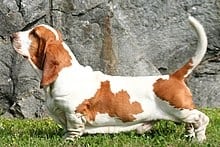
The Basset Hound is a short-legged breed of dog in the hound family. The Basset is a scent hound that was originally bred for the purpose of hunting hare. Their sense of smell and ability to ground-scent is second only to the Bloodhound.Basset Hounds are one of six recognized “basset”-type breeds in France. The name Basset is derived from the French word bas, meaning ‘low’, with the attenuating suffix -et—together meaning ‘rather low’. Basset Hounds are usually bicolours or tricolours of standard hound coloration.
Read More About Basset Hound / Source
Bullmastif

The Bullmastiff is British breed of dog of mastiff type, with a solid build and a short muzzle. It was developed as a guard dog in the nineteenth century by cross-breeding the English Mastiff with the now-extinct Old English Bulldog. It was recognised as a breed by The Kennel Club in 1924.
Read More About Bullmastif / Source
Whippet

The Whippet is a dog breed of medium size. They are a sighthound breed that originated in England, where they descended from the Greyhound. Whippets today still strongly resemble a smaller Greyhound. Part of the hound group, Whippets have relatively few health problems other than arrhythmia. Whippets also participate in dog sports such as lure coursing, agility, dock diving and flyball. The name is derived from an early-17th-century word, now obsolete, meaning “to move briskly”.There has been continuity in describing Greyhound-types of different sizes: large, medium and small, as recorded in hunting manuals and works on natural history from the Middle Ages. Edward of Norwich, 2nd Duke of York confirmed in his early-15th-century translation and additions to the original late 14th century French Livre de chasse the advantage of maintaining the great, the middle, and the small size of greyhound for different sorts of game. The English physician and academic John Caius refers in his 16th century De Canibus Britannicus to lesser as well as greater sorts of Leporarius, Grehounde (greyhound) and notably to a type which has been connected to the Whippet, the Tumbler, a lesser sort of mungrell Greyhounde and excellent warren dog for catching rabbits, also recorded by the early-19th-century Scottish curator and editor Thomas Brown. The Victorian English writers describe the emerging modern breed of Whippet or snap-dog bred for catching rabbits, coursing competitions, straight rag-racing, and for the novel show fancy.This has led to Whippets being described as “the poor man’s greyhound”. They are a popular companion breed frequently used in amateur racing, lure coursing, and dog shows; they have the highest running speed of breeds for their weight: and are possibly the fastest accelerating dog breed.
Read More About Whippet / Source
Bull Terrier

The Bull Terrier is a breed of dog in the terrier family. There is also a miniature version of this breed which is officially known as the Miniature Bull Terrier.
Read More About Bull Terrier / Source
Alaskan Malamute
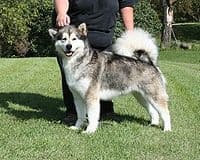
The Alaskan Malamute () is a large breed of dog that was originally bred for their strength and endurance to haul heavy freight as a sled dog and hound. They are similar to other arctic, husky, and spitz breeds such as the Greenland Dog, Canadian Eskimo Dog, the Siberian Husky, and the Samoyed.
Read More About Alaskan Malamute / Source
Keeshond
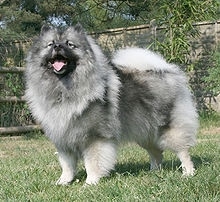
The Keeshond ( KAYSS-hond, plur. Keeshonden) is a medium-sized dog with a plush, two-layer coat of silver and black fur with a ruff and a curled tail. It originated in Holland, and its closest relatives are the German spitzes such as the Großspitz (Large Spitz), Mittelspitz (Medium Spitz), Kleinspitz (Miniature Spitz), Zwergspitz (Dwarf-Spitz) or Pomeranian.
The Keeshond was previously known as the Dutch Barge Dog, as it was frequently seen on barges traveling the canals and rivers of the Netherlands. The Keeshond was the symbol of the Patriot faction in the Netherlands during political unrest in the years immediately preceding the French Revolution.
In the late 19th century, the breed was developed in England from imports obtained in both the Netherlands and Germany. In 1930, the Keeshond was first registered with the American Kennel Club.
Read More About Keeshond / Source
Border Terrier
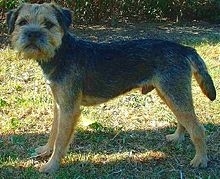
The Border Terrier is a British breed of small, rough-coated terrier. It originates from the area of the Anglo-Scottish border, and shares ancestry with the Dandie Dinmont Terrier and the Bedlington Terrier from the same area. The dogs were traditionally used in fox-hunting, and worked with the Border Hunt in Northumberland.
The breed was officially recognised by The Kennel Club in Great Britain in 1920, and by the American Kennel Club in 1930.
Read More About Border Terrier / Source
Tibetan Terrier
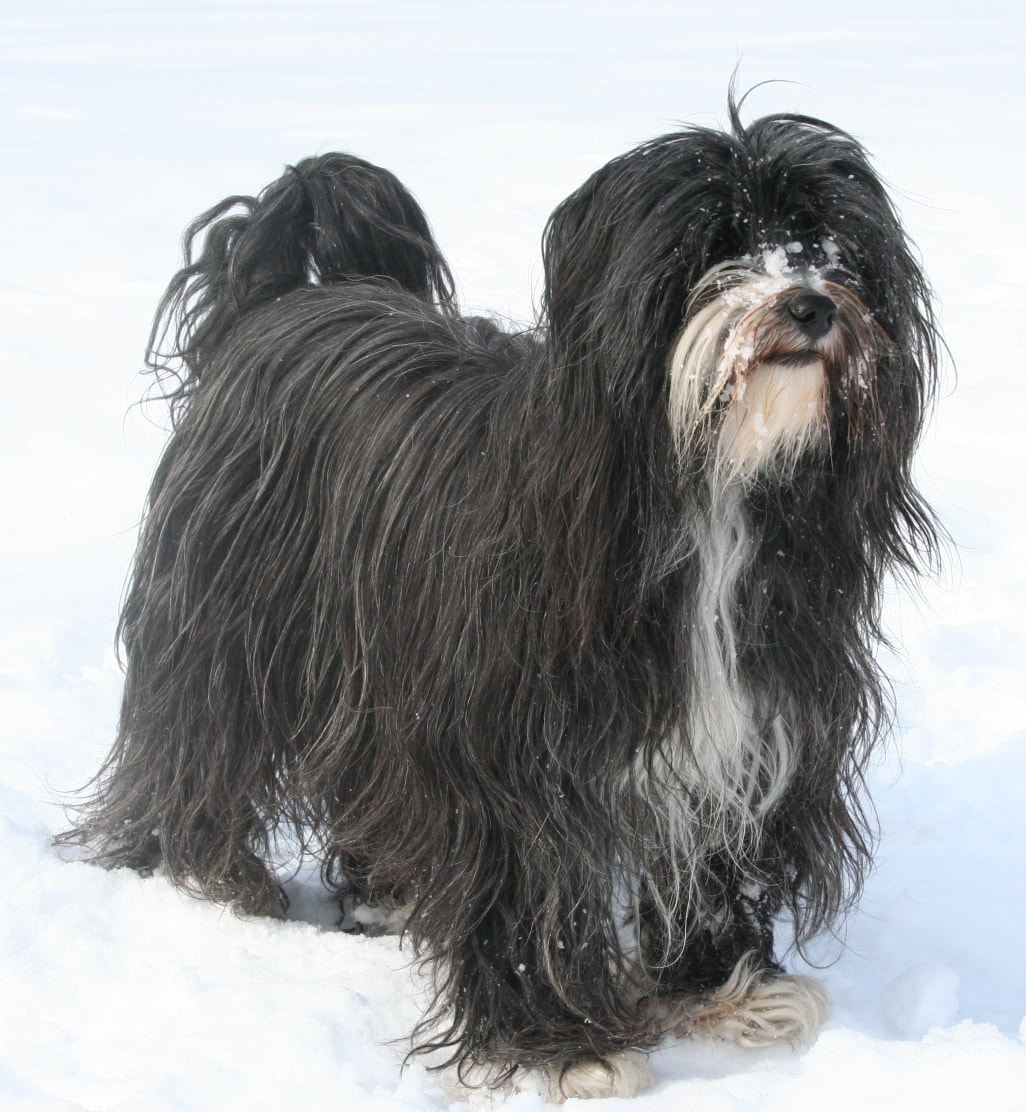
The Tibetan Terrier is a medium-sized breed of dog that originated in Tibet. Despite its name, it is not a member of the terrier group. The breed was given its English name by European travelers due to its resemblance to known terrier breeds. The Tibetan name for the breed, Tsang Apso, roughly translates to “shaggy or bearded (“apso”) dog, from the province of Tsang”. Some old travelers’ accounts refer to the dog as Dokhi Apso or “outdoor” Apso, indicating a shaggy or bearded working dog which lives outdoors.
Read More About Tibetan Terrier / Source
Harrier (Dog)
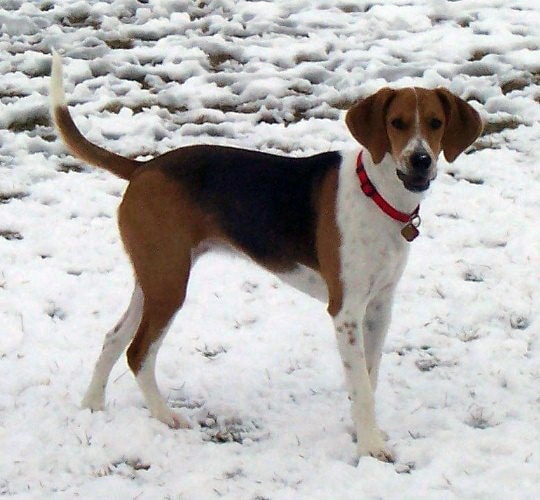
The Harrier is a medium-sized dog breed of the hound class,
used for hunting hares by trailing them. It resembles an English Foxhound but is slightly smaller, though not as small as a Beagle. The breed has been used since the mid 13th century.
Read More About Harrier (Dog) / Source
Azawakh

The Azawakh is a breed of dog from West Africa. With ancient origins, it is raised throughout the Sahelian zone of Mali, Niger, and Burkina Faso. This region includes the Azawagh Valley for which the breed is named. While commonly associated with the nomadic Tuareg people, they are also bred and owned by other ethnic groups such as the Peulh, Bella, and Hausa. The Azawakh is more related to the Sloughi than it is to the Saluki.
Read More About Azawakh / Source
Newfoundland Dog
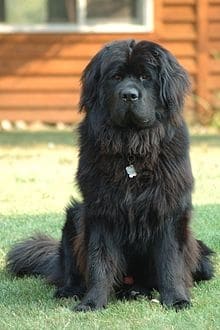
The Newfoundland is a large working dog. They can be either black, brown, grey, or white and black. However, in the Dominion of Newfoundland, before it became part of the confederation of Canada, only black and Landseer (white-and-black) coloured dogs were considered to be proper members of the breed. They were originally bred and used as working dogs for fishermen in Newfoundland. Newfoundlands are known for their giant size, intelligence, tremendous strength, calm dispositions, and loyalty. They excel at water rescue/lifesaving because of their muscular build, thick double coat, webbed paws, and swimming abilities.
Read More About Newfoundland Dog / Source
Maltese
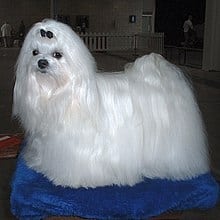
The Maltese is a breed of dog in the toy group. It is thought to have originated in south-central Europe from dogs of spitz type. Despite the name, it has no verified historic or scientific connection to the island of Malta.: 347 It traditionally has a silky, pure-white coat, hanging ears and a tail that curves over its back, and weighs up to 3.6 kilograms (8 lb).
Read More About Maltese / Source
Poodle
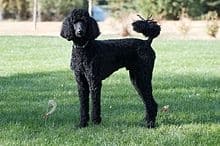
The Poodle, called the Pudel in German and the Caniche in French, is a breed of water dog. The breed is divided into four varieties based on size, the Standard Poodle, Medium Poodle, Miniature Poodle and Toy Poodle, although the Medium Poodle variety is not universally recognised.
The Poodle is most commonly claimed to have been developed in Germany, although it is also claimed to be from France. The Standard Poodle was originally used by wildfowl hunters to retrieve game from water. The smaller varieties of the breed were bred from the original in France where they were once commonly used as circus performers, but have become popular companion dogs.
Read More About Poodle / Source
Labrador Retriever
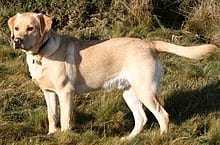
The Labrador Retriever or Labrador is a British breed of retriever gun dog. It was developed in the United Kingdom from fishing dogs imported from the independent colony of Newfoundland (now part of Canada), and was named for the Labrador region of that colony. It is among the most commonly kept dogs in several countries, particularly in the Western world.
The Labrador is loyal, obedient and playful. It was bred as a sporting and hunting dog, but is widely kept as a companion dog. It may also be trained as a guide or assistance dog, or for rescue or therapy work.In the 1830s, the 10th Earl of Home and his nephews the 5th Duke of Buccleuch and Lord John Scott, imported progenitors of the breed from Newfoundland to Europe for use as gundogs. Another early advocate of these Newfoundland flying dogs was the 2nd Earl of Malmesbury, who bred them for their expertise in waterfowling.During the 1880s, the 3rd Earl of Malmesbury, the 6th Duke of Buccleuch, and the 12th Earl of Home collaborated to develop and establish the Labrador Retriever breed. The dogs Buccleuch Avon and Buccleuch Ned, given by Malmesbury to Buccleuch, were mated with bitches carrying blood from those originally imported by the 5th Duke and the 10th Earl of Home. The offspring are the ancestors of all modern Labradors.
Read More About Labrador Retriever / Source
Australian Shepherd
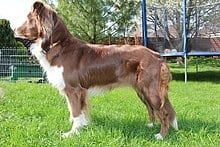
The Australian Shepherd is a breed of herding dog from the United States. Developed in California in the 19th century, it is claimed the breed descends from a variety of herding breeds including collies imported into California alongside sheep imported from Australia and New Zealand, the breed taking its name from the former. Originally used solely as a herding dog, the Australian Shepherd has become one of the most popular companion dog breeds in North America.
Read More About Australian Shepherd / Source
Soft-coated Wheaten Terrier
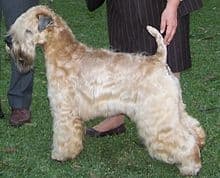
The Soft-coated Wheaten Terrier (Irish: An Brocaire Buí – literally, “Yellow Terrier”) is a pure-breed terrier originating from Ireland. Wheatens typically have one of two coat types: Irish or Heavy (American). The Irish coat is generally silkier and wavier than the Heavy, or American coat, which is thicker and fuller. Wheatens are generally friendly and playful, and tend to get along well with children and other dogs.
Read More About Soft-coated Wheaten Terrier / Source
German Wirehaired Pointer
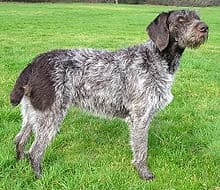
The German Wirehaired Pointer is a medium to large-sized griffon type breed of dog developed in the 19th century in Germany for versatile hunting. It became a leading gun dog in Germany in the later part of the 20th century. It is the result of the careful mixing and crossing of the Wirehaired Pointing Griffon, German Shorthaired Pointer, German Roughhaired Pointer, and the hunting Pudelpointer in the late 19th century.
Read More About German Wirehaired Pointer / Source
Airedale Terrier

The Airedale Terrier (often shortened to “Airedale”), also called Bingley Terrier and Waterside Terrier, is a dog breed of the terrier type that originated in the valley (dale) of the River Aire, in the West Riding of Yorkshire, England. It is traditionally called the “King of Terriers” because it is the largest of the terrier breeds. The Airedale was bred from the Old English Black and Tan Terrier (now known as the Welsh Terrier), the Otterhound and probably some other Terrier breeds, and has contributed to other dog breeds, such as the Yorkshire Terrier. Originally bred to serve as a versatile hunting and all around working farm dog, in Britain this breed has also been used as a war dog, guide dog and police dog. In the United States, this breed has been used to hunt big game, upland birds, and water fowl, and serve in many other working capacities.
Read More About Airedale Terrier / Source
Giant Schnauzer

The Giant Schnauzer is a breed of dog developed in the 17th century in Germany. It is the largest of the three breeds of Schnauzer—the other two breeds being the Standard Schnauzer and the Miniature Schnauzer. Numerous breeds were used in its development, including the black Great Dane, the Bouvier des Flandres, and the German Pinscher. Originally bred to assist on farms by driving livestock to market and guarding the farmer’s property, the breed eventually moved into the city, where it worked guarding breweries, butchers’ shops, stockyards and factories. It was unknown outside of Bavaria until it became popular as a military dog during World War I and World War II.
They have a dense coarse coat that protects them from the weather and from vermin. Giant Schnauzers come in three color varieties: pepper and salt, pure black with black undercoat, and black and silver. Where legal, they are shown with cropped ears and docked tails. Like other schnauzers, they have a distinct beard and eyebrows. Today, the Giant Schnauzer participates in numerous dog sports, including Schutzhund. Another sport that the dog excels in is that of nosework. Due to its alert nature, the dog is also used in police work.
Read More About Giant Schnauzer / Source
Irish Wolfhounds

The Irish Wolfhound is a historic sighthound dog breed from Ireland that has, by its presence and substantial size, inspired literature, poetry and mythology. Like all sighthounds, it is used to hunt game by speed, and historically has also been famed as a guard dog specialising in protection against and for the hunting of wolves, from which its name derives.
The original dog-type was presumed extinct by most authors of the 18th and 19th century, but was re-introduced by George Graham in the late 19th century, crossing the descendants of the original breed with various similar breeds. The modern breed, classified by recent genetic research into the Sighthound United Kingdom Rural Clade (Fig. S2), has been used by coursing hunters who have prized it for its ability to kill game caught by other, swifter sighthounds.
Read More About Irish Wolfhounds / Source
Lhasa Apso

The Lhasa Apso ( LAH-sə AP-soh) is a non-sporting dog breed originating in Tibet. It has traditionally been used as an interior sentinel.
Read More About Lhasa Apso / Source
Chow Chow

The Chow Chow is a dog breed originally from northern China. The Chow Chow is a sturdily built dog, square in profile, with a broad skull and small, triangular, erect ears with rounded tips. The breed is known for a very dense double coat that is either smooth or rough.: 4–5 The fur is particularly thick in the neck area, giving it a distinctive ruff or mane appearance. The coat may be shaded/self-red, black, blue, cinnamon/fawn, or cream.: 4–5
Read More About Chow Chow / Source
Boykin Spaniel
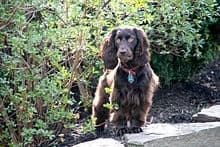
The Boykin Spaniel is a medium-sized breed of dog, a Spaniel bred for hunting wild turkeys and ducks in the Wateree River Swamp of South Carolina, in the United States. It is the state dog of South Carolina, where it was discovered and further developed by hunters in the 1900s. 1 September,1984 is Boykin Spaniel Day in South Carolina.
Read More About Boykin Spaniel / Source
Schnauzer
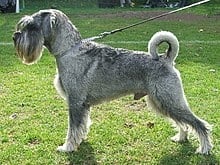
The Schnauzer or Standard Schnauzer (Mittelschnauzer) is a dog breed that originated in Germany in at least 14th–15th century, of Schnauzer breed type and progenitor of the Giant Schnauzer and Miniature Schnauzer. Initially it was called Wire-Haired Pinscher, while Schnauzer was adopted in 1879. The literal translation is “snouter” from the German word for “snout” and means colloquially “moustache”, or “whiskered snout”, because of the dog’s distinctively bearded snout.Generally classified as a working or utility dog, this versatile breed is robust, squarely built, medium-sized dog with aristocratic bearing. It has been claimed that it was a popular subject of painters Sir Joshua Reynolds, Albrecht Dürer and Rembrandt, but actual proof remains elusive. Standard Schnauzers are either salt-and-pepper or black in color, and are known for exhibiting many of the “ideal” traits of any breed. These include high intelligence, agility, alertness, reliability, strength, and endurance. This breed of dog has been very popular in Europe, specifically Germany, where it originated. The breed was first exhibited at a show in Hanover in 1879, and since then has taken top honors in many shows, including the prestigious “Best in Show” at Westminster Kennel Club” in the United States in 1997.
Read More About Schnauzer / Source
Spinone Italiano

The Spinone Italiano is an Italian breed of hunting dog, traditionally used for tracking, for pointing and for retrieving game.
Read More About Spinone Italiano / Source
Japanese Chin

The Japanese Chin (Japanese: 狆, chin), also known as the Japanese Spaniel, is a dog known for its strabismus of the eyes. Being both a lap dog and a companion dog, this toy breed has a distinctive heritage.
Read More About Japanese Chin / Source
Schipperke

A Schipperke (; Dutch: [ˈsxɪpərkə]) is a small breed of dog that originated since the 1600’s in Belgium. There has been a long informal debate over whether this type of dog is a spitz or miniature sheepdog. In their home country of Belgium they are considered a small shepherd. DNA research has shown that Schipperkes have a close relationship to the Spitz family of dog breeds.
Read More About Schipperke / Source
Parson Russell Terrier
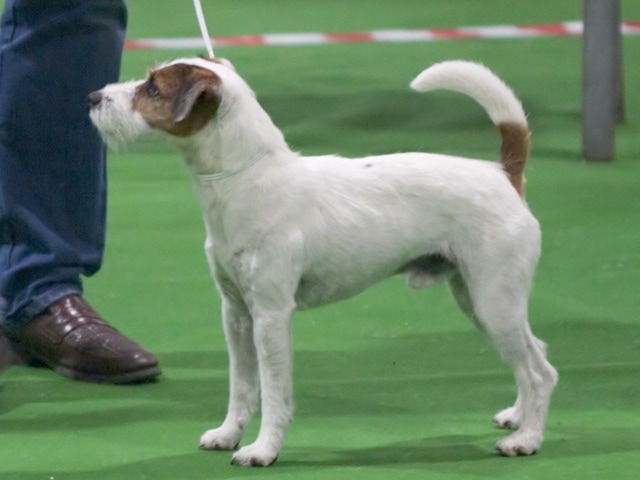
The Parson Russell Terrier is a breed of small white terrier that was the original Fox Terrier of the 18th century. The breed is named after the Reverend Jack Russell, credited with the creation of this type of dog. It is the recognised conformation show variety of the Jack Russell Terrier and was first recognised in 1990 in the United Kingdom as the Parson Jack Russell Terrier. In America, it was first recognised as the Jack Russell Terrier in 1997. The name was changed to its current form in 1999 in the UK and by 2008 all international kennel clubs recognised it under the new name.
A mostly white breed with either a smooth, rough or broken coat, it conforms to a narrower range of sizes than the Jack Russell. It is a feisty, energetic terrier, suited to sports and able to get along with children and other animals. It has a range of breed-related health issues, mainly relating to eye disorders.
Read More About Parson Russell Terrier / Source
Belgian Shepherd

The Belgian Shepherd (also known as the Belgian Sheepdog or the Chien de Berger Belge) is a breed of medium-sized herding dog from Belgium. While predominantly considered a single breed, it is bred in four distinct varieties based on coat type and colour; the long-haired black Groenendael, the rough-haired fawn Laekenois, the short-haired fawn Malinois, and the long-haired fawn Tervuren; in the United States the American Kennel Club considers the four varieties to be separate breeds.
The breed descends from a common type of shepherd dog found throughout Western Europe that includes such modern breeds as the Bouvier des Ardennes, Dutch Shepherd and German Shepherd. A common sight in the service of Belgian shepherds for centuries, it was not until the end of the 19th century that a breed club was formed and attempts were made to standardise the breed.
In addition to its historical role as a herding dog, Belgian Shepherds have been used as assistance dogs, companion dogs, detection dogs, guard dogs, guide dogs, police dogs, and search and rescue dogs. The breed has a long history of being used by military forces, serving in both World Wars; they continue to be used by a number of militaries in a variety of roles to this day.
Read More About Belgian Shepherd / Source
American Eskimo Dog

The American Eskimo Dog is a breed of companion dog, originating in Germany. The American Eskimo Dog is a member of the Spitz family. The breed’s progenitors were German Spitz, but due to anti-German sentiment during the First World War, it was renamed “American Eskimo Dog.” Although modern American Eskimo Dogs have been exported as German Spitz Gross (or Mittel, depending on the dog’s height), the breeds have diverged and the standards are significantly different. In addition to serving as a watchdog and companion, the American Eskimo Dog also achieved a high degree of popularity in the United States in the 1930s and 1940s as a circus performer.
There are three size varieties of the American Eskimo Dog breed, the toy, the miniature and the standard. They share a common resemblance with Japanese Spitz, Danish Spitz, Volpino Italiano, German Spitz, Indian Spitz, and Samoyeds.
Read More About American Eskimo Dog / Source
Afghan Hound
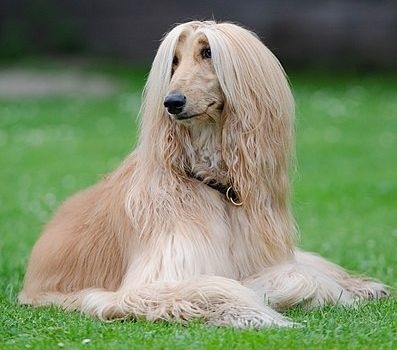
The Afghan Hound is a hound that is distinguished by its thick, fine, silky coat and its tail with a ring curl at the end. The breed is selectively bred for its unique features in the cold mountains of Afghanistan. Its local name is Tāžī Spay (Pashto: تاژي سپی) or Sag-e Tāzī (Dari: سگ تازی). Other names for this breed are Tāzī, Balkh Hound, Baluchi Hound, Barakzai Hound, Shalgar Hound, Kabul Hound, Galanday Hound or sometimes incorrectly African Hound. They have the ability to run and turn well.
Read More About Afghan Hound / Source
Smooth Fox Terrier
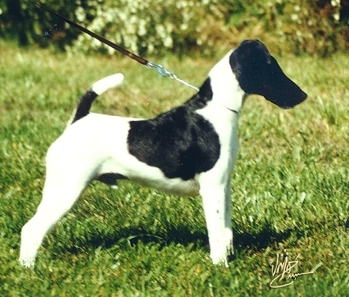
The Smooth Fox Terrier is a breed of dog, one of many terrier breeds. It was the first breed in the fox terrier family to be given official recognition by The Kennel Club (circa 1875; breed standard 1876). It is well known, and although not a widely popular breed today outside hunting and show circles, it is extremely significant due to the large number of terriers believed descended from the breed.
Read More About Smooth Fox Terrier / Source
American Hairless Terrier

The American Hairless Terrier is a breed of companion dog from the United States that was developed from naturally hairless Rat Terriers.
Read More About American Hairless Terrier / Source
Saluki
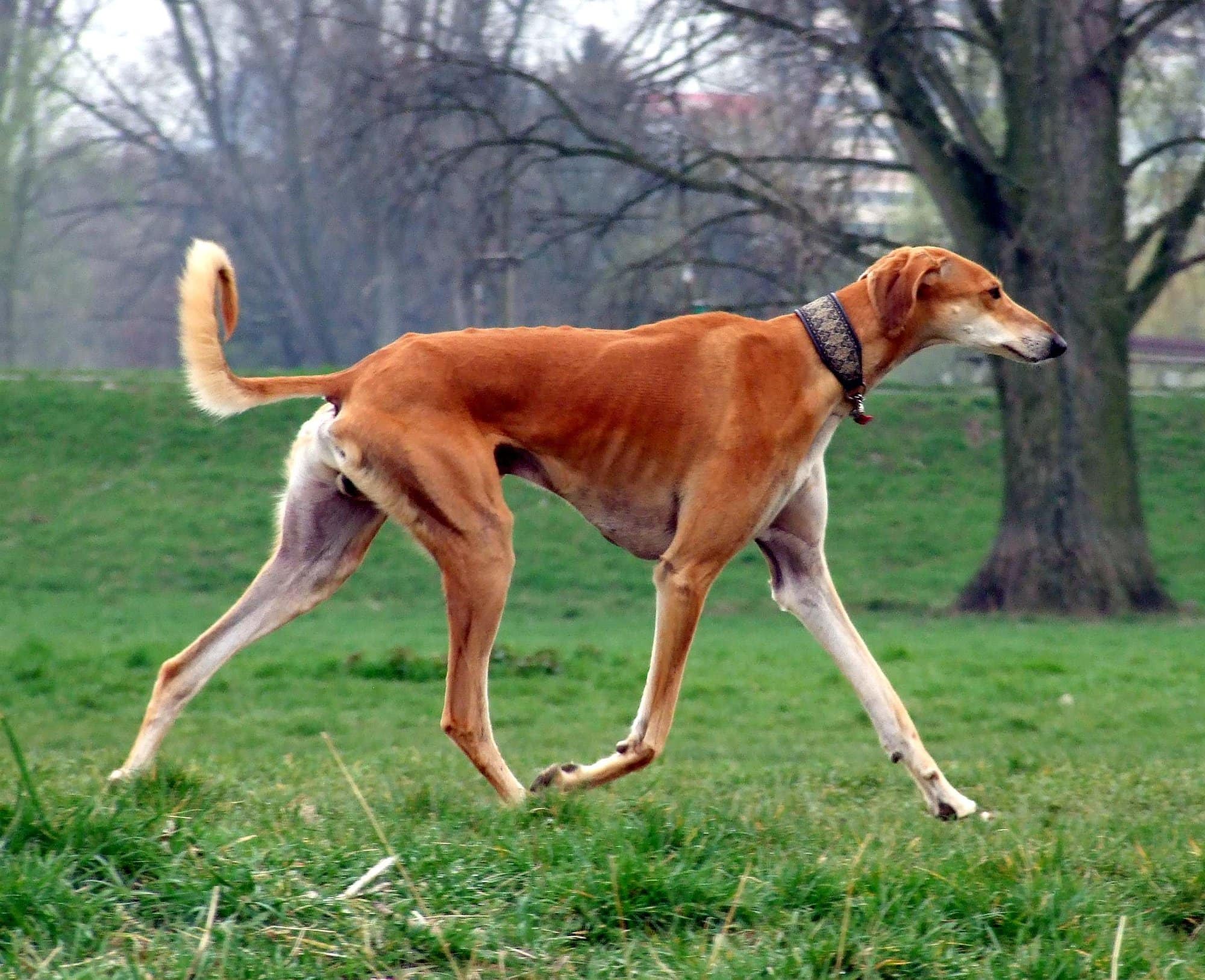
The Saluki, also known as the Persian Greyhound, is a standardised breed developed from sighthounds – dogs that hunt primarily by sight rather than scent – that was once used by nomadic tribes to run down game animals. The dog was originally bred in the Fertile Crescent. The modern breed is typically deep-chested and long-legged, and similar dogs appear in medieval and ancient art. The breed is most closely related to the Afghan hound, a basal breed that predates the emergence of modern breeds in the 19th century, and the Saluki has been purebred both in the Middle East, including by royalty, since at least that era, and in the West (especially in Britain and Germany) since the 1840s (with breed standards established in the West and the Middle East around the 1920s–1930s), though as a free-breeding landrace, similar dogs are common as feral animals in the Middle East. A related standardised breed is the north African Sloughi.
Read More About Saluki / Source
Redbone Coonhound
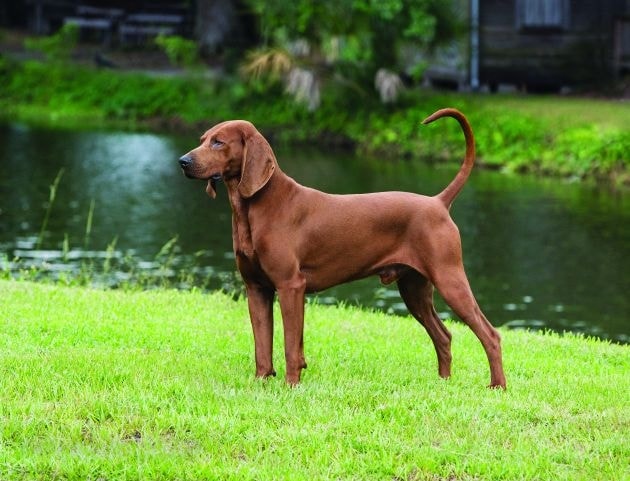
The Redbone Coonhound is an American breed of hunting dog. It may be used to hunt raccoon, deer, bear, boar, cougar, or other large game. It originated in the Southern United States, and derives from foxhounds brought by immigrants from Scotland. It is characterized by its deep red coat.
It has been registered with the United Kennel Club since 1902, and with the American Kennel Club since 2009.
Read More About Redbone Coonhound / Source
Swedish Vallhund

The Swedish Vallhund, also known as the Västgötaspets and Swedish cow dog, is a breed of dog native to Sweden. The breed’s name, Vallhund, when translated into English, means herding dog, as the Swedish Vallhund was originally bred as a drover and herder of cows over 1,000 years ago. In 1942, the dog came close to extinction, but careful breeding and publicity by Swedish national Bjorn von Rosen and K. G. Zettersten managed to revive the breed in popularity and save it from its likely end. In 1943, the Swedish Kennel Club recognized the Swedish Vallhund as a breed, and officially categorized the Swedish Vallhund as “the Västgötaspets” for Västergötland, the province in which their revival took place. Since then, the breed has been recognized by, and bred in, over ten countries and has gained some popularity.
Read More About Swedish Vallhund / Source
Treeing Walker Coonhound

The Treeing Walker Coonhound is a breed of hound descended from the English and American Foxhounds. The breed originated in the United States when a stolen dog known as “Tennessee Lead” was crossed into the Walker Hound in the 19th century. The Treeing Walker Coonhound was recognized officially as a breed by the United Kennel Club in 1945 and by the American Kennel Club in 2012.
The Treeing Walker Coonhound was bred primarily to hunt raccoons, but it is also used on other game such as deer, bears, bobcats or cougars. The breed is vocal with a distinctive bay that allows its owner to identify their hound from great distances. It has a clear, ringing voice that changes to a steady chop at the tree. Treeing Walker Coonhounds are gentle, calm, friendly dogs who make great house pets.
Read More About Treeing Walker Coonhound / Source
Sussex Spaniel
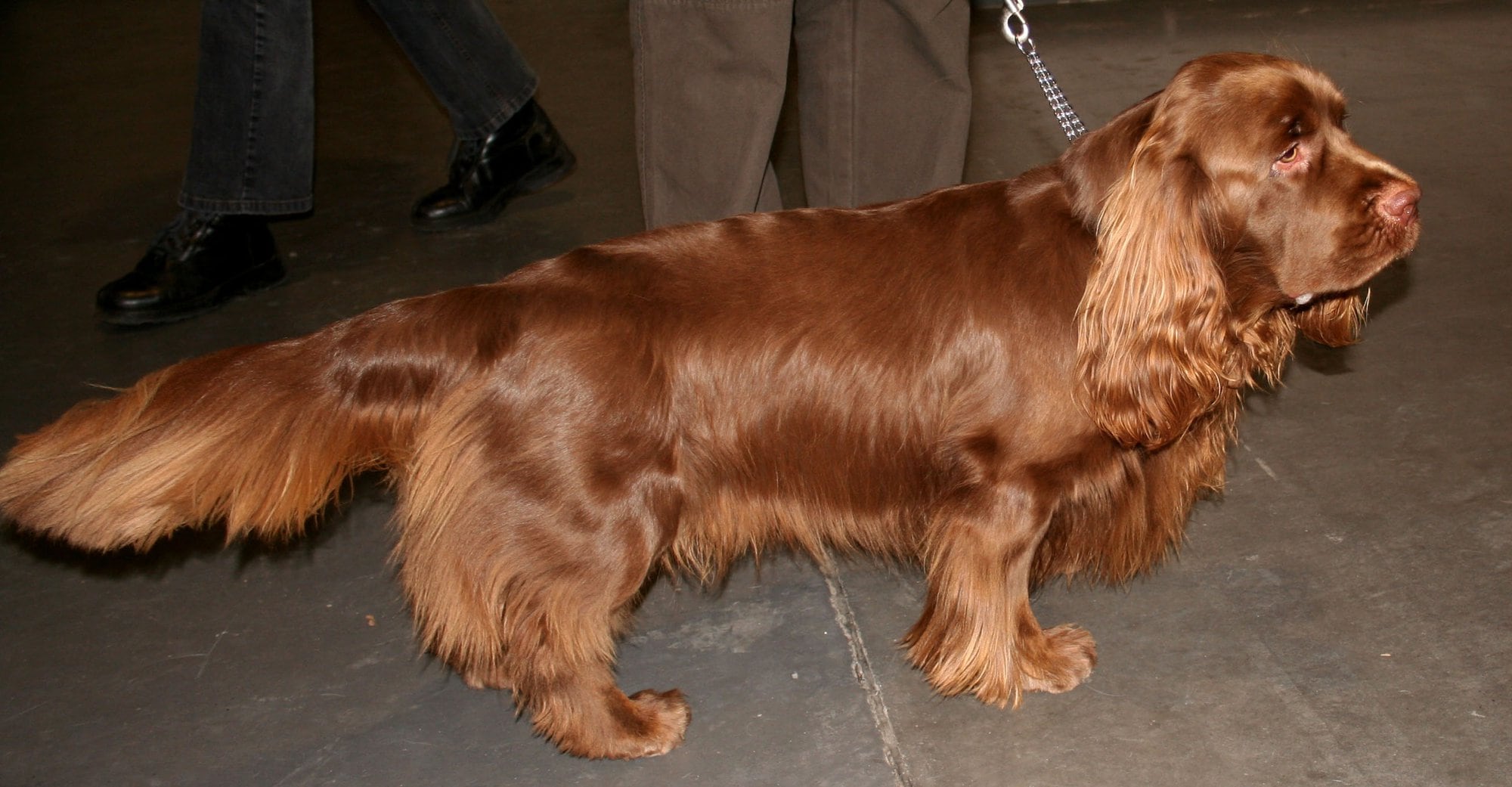
The Sussex Spaniel is a breed of dog native to Sussex in southern England. It is a low, compact spaniel and is as old a breed as and similar in appearance to the Clumber Spaniel. They can be slow-paced, but can have a clownish and energetic temperament. They suffer from health conditions common to spaniels and some large dogs, as well as a specific range of heart conditions and spinal disc herniation.
The Sussex Spaniel was first recorded in 1795 in East and West Sussex, being at Goodwood and Rolvenden for specific hunting conditions. The breed nearly became extinct during the Second World War, but was bred back to sustainable numbers. It is now more popular in the United Kingdom and the United States than any other countries, and is recognised by all major kennel clubs. The breed was one of the first to be recognised by the UK Kennel Club in 1872. Sussex Spaniel Stump won the best in show in 2009 at the 133rd Westminster Kennel Club.
Read More About Sussex Spaniel / Source
Dandie Dinmont Terrier

A Dandie Dinmont Terrier is a small Scottish dog breed in the terrier family. The breed has a very long body, short legs, and a distinctive topknot of hair on the head. They are friendly but tough, and are suitable for interaction with older children. There are breed-specific health concerns: they can be affected by spinal problems due to their elongated body, and the breed is affected by canine cancer at a higher than average rate.
The breed is named after a fictional character in Sir Walter Scott’s novel, Guy Mannering. This character, Dandie Dinmont, is thought to be partly based on James Davidson, who is credited as the originator of the modern breed. Davidson’s dogs descended from earlier terrier-owning families, including the Allans of Holystone, Northumberland.
There are three breed clubs in the UK supporting the breed, although it is registered as a Vulnerable Native Breed by the Kennel Club due to its low number of puppy registrations per year.
Read More About Dandie Dinmont Terrier / Source
Polish Lowland Sheepdog
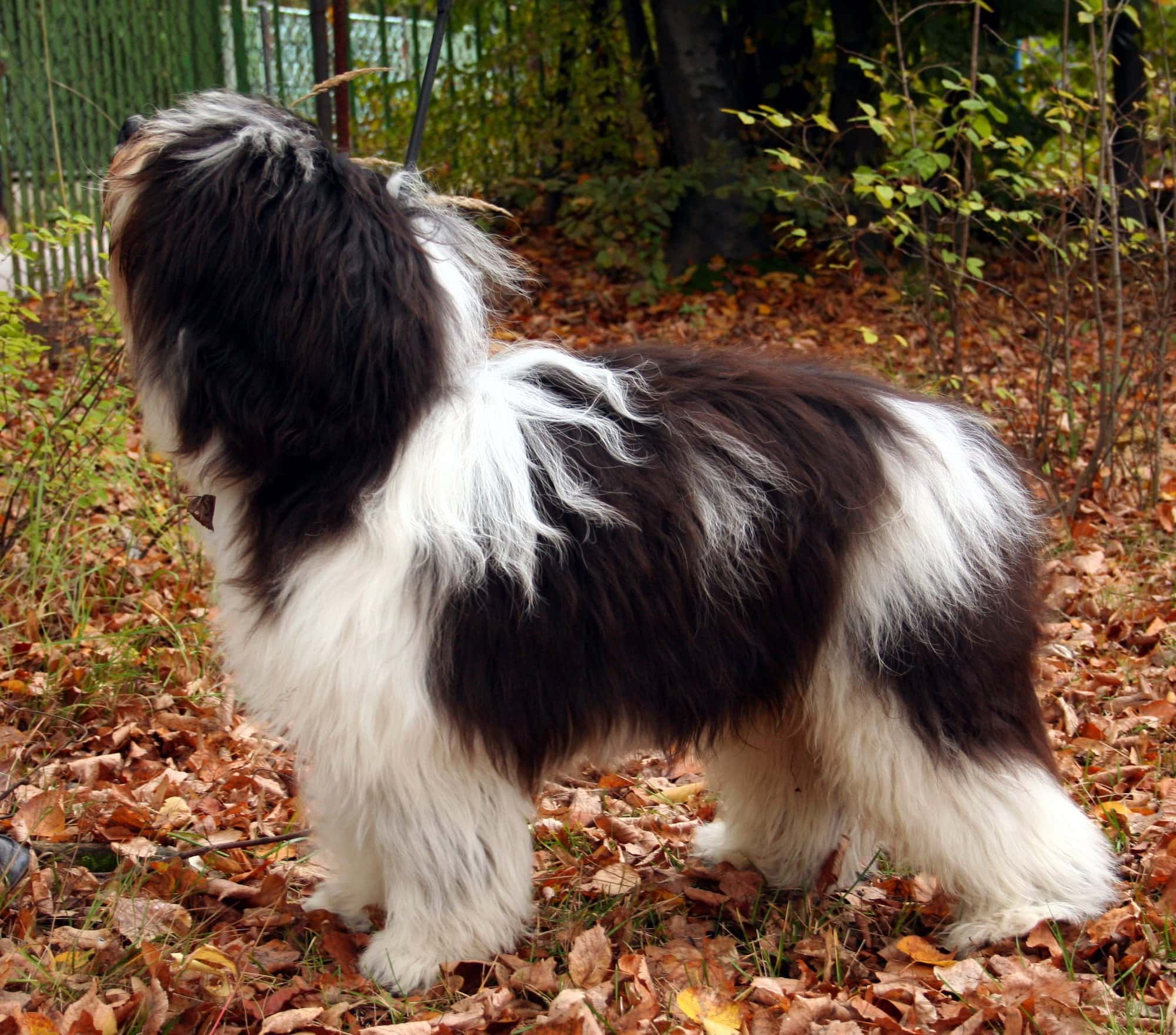
The Polish Lowland Sheepdog (Polish: Polski Owczarek Nizinny, also PON), is a medium-sized, shaggy-coated, sheep dog breed native to Poland.
Read More About Polish Lowland Sheepdog / Source
Siberian Husky
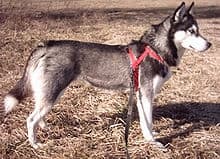
The Siberian Husky is a medium-sized working sled dog breed. The breed belongs to the Spitz genetic family. It is recognizable by its thickly furred double coat, erect triangular ears, and distinctive markings, and is smaller than the similar-looking Alaskan Malamute.
Siberian Huskies originated in Northeast Asia where they are bred by the Chukchi people of Siberia for sled pulling, and companionship. It is an active, energetic, resilient breed, whose ancestors lived in the extremely cold and harsh environment of the Siberian Arctic. William Goosak, a Russian fur trader, introduced them to Nome, Alaska, during the Nome Gold Rush, initially as sled dogs to work the mining fields and for expeditions through otherwise impassable terrain. Today, the Siberian Husky is typically kept as a house pet, though they are still frequently used as sled dogs by competitive and recreational mushers.
Read More About Siberian Husky / Source
Shar Pei
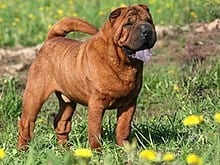
The Shar Pei (Cantonese: shā pèih or Mandarin: 沙皮 shā pí) is a dog breed from southern China. Traditionally kept as a watchdog and property guardian, the Shar Pei was driven to the brink of extinction in the 20th century. The breed is known in the West for its deep wrinkles, whilst a traditional less wrinkled form is maintained in Hong Kong.
Read More About Shar Pei / Source
Pekingese

The Pekingese (also spelled Pekinese) is a breed of toy dog, originating in China. The breed was favored by royalty of the Chinese Imperial court as both a lap dog and companion dog, and its name refers to the city of Peking (Beijing) where the Forbidden City is located. The breed has several characteristics and health issues related to its unique appearance. Because of its desirable characteristics, the Pekingese has been part of the development of designer crossbreeds, such as the Peekapoo (crossed with a poodle) and Peke-a-tese (crossed with a Maltese).
Read More About Pekingese / Source
Irish Terrier
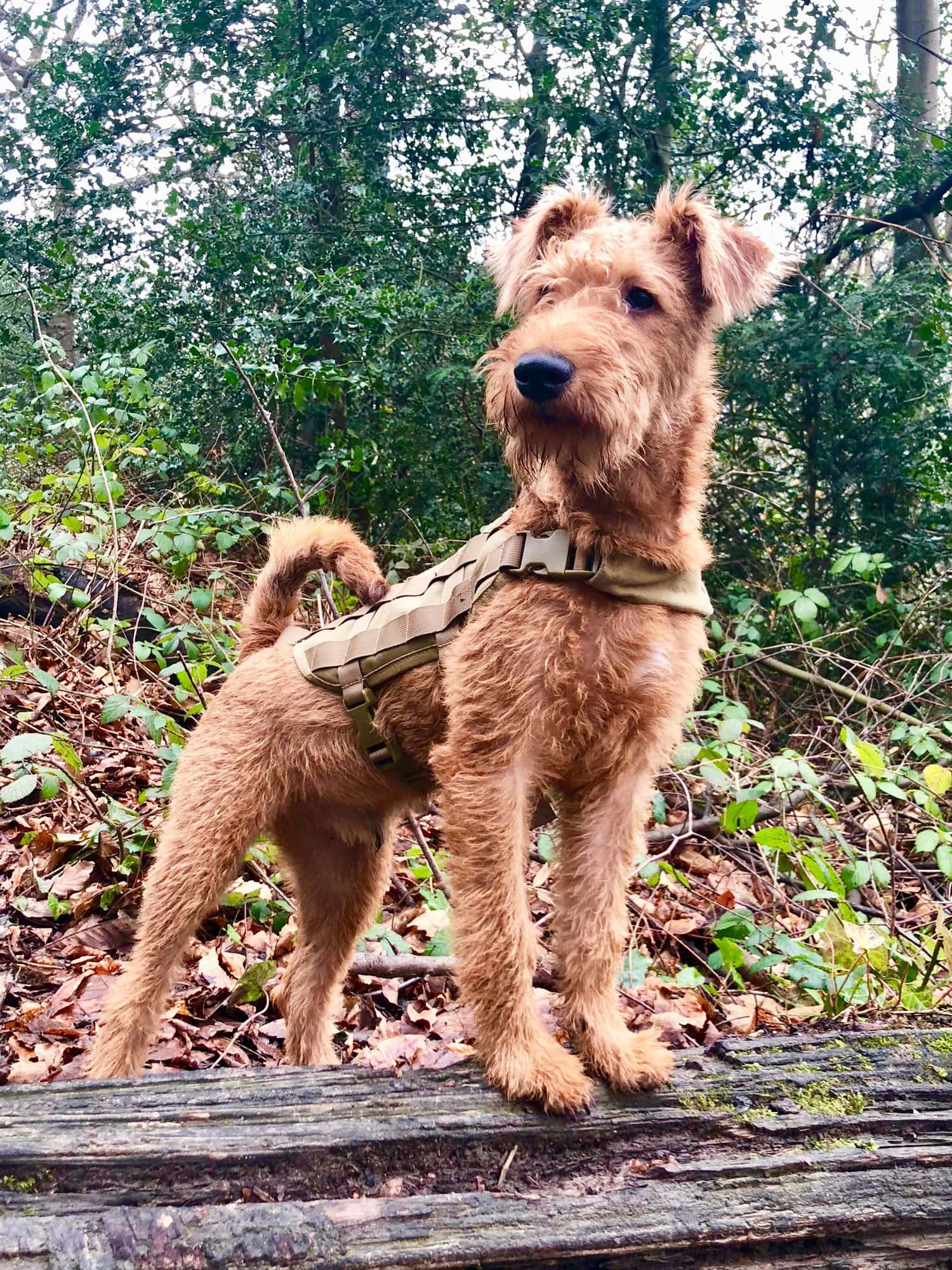
The Irish Terrier (Irish: Brocaire Rua) is a dog breed from Ireland, one of many breeds of terrier. The Irish Terrier is considered one of the oldest terrier breeds. The Dublin dog show in 1873 was the first to provide a separate class for Irish Terriers. By the 1880s, Irish Terriers were the fourth most popular breed in Ireland and Britain.The Irish Terrier is an active and compactly sized dog that is suited for life in both rural and city environments. Its harsh red coat protects it from all kinds of weather.
Read More About Irish Terrier / Source
Greyhound
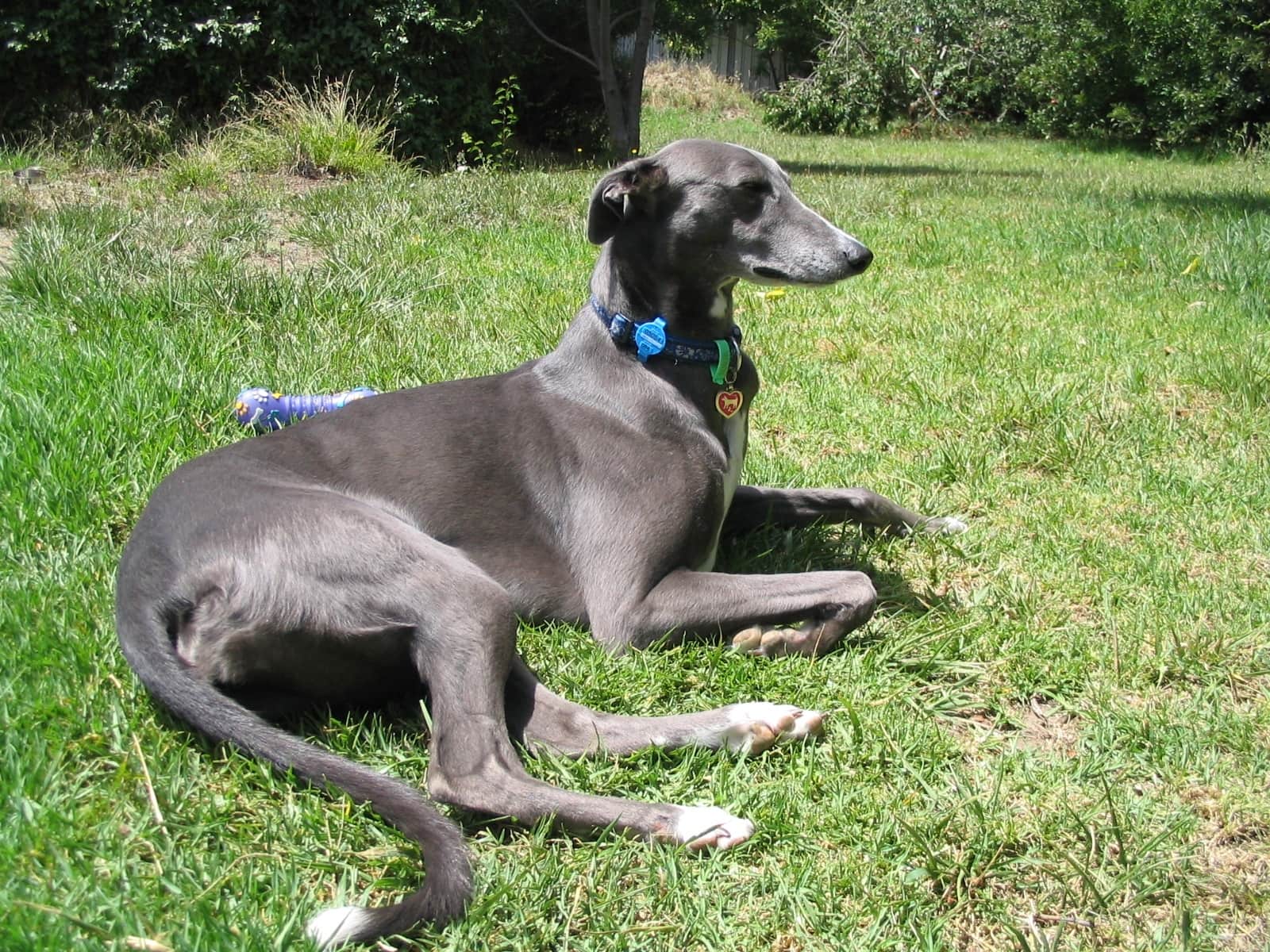
The English Greyhound, or simply the Greyhound, is a breed of dog, a sighthound which has been bred for coursing game and greyhound racing. Since the rise in large-scale adoption of retired racing Greyhounds, the breed has seen a resurgence in popularity as a family pet.
Greyhounds are defined as a tall, muscular, smooth-coated, “S-shaped” type of sighthound with a long tail and tough feet. Greyhounds are a separate breed from other related sighthounds, such as the Italian greyhound.
The Greyhound is a gentle and intelligent breed whose combination of long, powerful legs, deep chest, flexible spine, and slim build allows it to reach average race speeds exceeding 64 kilometres per hour (40 mph). The Greyhound can reach a full speed of 70 kilometres per hour (43 mph) within 30 metres (98 ft), or six strides from the boxes, traveling at almost 20 metres per second (66 ft/s) for the first 250 metres (820 ft) of a race.
Read More About Greyhound / Source
Australian Cattle Dog

The Australian Cattle Dog (ACD), or simply Cattle Dog, is a breed of herding dog originally developed in Australia for droving cattle over long distances across rough terrain. This breed is a medium-sized, short-coated dog that occurs in two main colour forms. It has either brown or black hair distributed fairly evenly through a white coat, which gives the appearance of a “red” or “blue” dog.
As with dogs from other working breeds, the Australian Cattle Dog is energetic and intelligent with an independent streak. It responds well to structured training, particularly if it is interesting and challenging. It was originally bred to herd by biting, and is known to nip running children. It forms a strong attachment to its owners, and can be protective of them and their possessions. It is easy to groom and maintain, requiring little more than brushing during the shedding period. The most common health problems are deafness and progressive blindness (both hereditary conditions) and accidental injury; otherwise, it is a robust breed with a lifespan of 12 to 14 years.
In the 19th century, New South Wales cattle farmer Thomas Hall crossed the dogs used by drovers in his parents’ home county, Northumberland, with dingoes he had tamed. The resulting dogs were known as Halls Heelers. After Hall’s death in 1870, the dogs became available beyond the Hall family and their associates. They were subsequently developed into two modern breeds: the Australian Cattle Dog and the Australian Stumpy Tail Cattle Dog. Robert Kaleski, who wrote the first standard for the breed, was influential in its development.
Australian Cattle Dog has been nicknamed a “Red Heeler” or “Blue Heeler” on the basis of its colouring and practice of moving reluctant cattle by nipping at their heels. Dogs from a line bred in Queensland, Australia, which were successful at shows and at stud in the 1940s, were called “Queensland Heelers” to differentiate them from lines bred in New South Wales; this nickname is now occasionally applied to any Australian Cattle Dog.
Read More About Australian Cattle Dog / Source
Wirehaired Pointing Griffon

The Wirehaired Pointing Griffon (also called the Korthals Griffon and the Griffon d’arrêt à poil dur Korthals in France and Quebec) is a breed of dog used in hunting as a gundog. It is sometimes considered to be Dutch in ancestry, due to the nationality of the breed founder, Eduard Karel Korthals. History records the progression of the development of the breed through Biebesheim am Rhein, Germany where the founder established the Ipenwoud kennel and the breed type was established and then into France where it is now recognized. Others consider the Griffon to be a German breed because Korthals’ kennel, Ipenwoud, was located in Biebesheim am Rhein, Germany. It was there for over twenty years that Korthals dedicated his life to the development and perfection of the Korthals Griffon.
The breed is still relatively rare in the United States, Canada, and the United Kingdom despite long recognition by their respective national kennel clubs, as well as the FCI (Federation Cynologique Internationale). The Korthals Griffon is particularly adapted for hunting in thick undergrowth and around water, where its harsh coat is excellent protection. The griffon is used primarily as a hunting dog for upland game birds as well as waterfowl.
Read More About Wirehaired Pointing Griffon / Source
Pointer (Dog Breed)
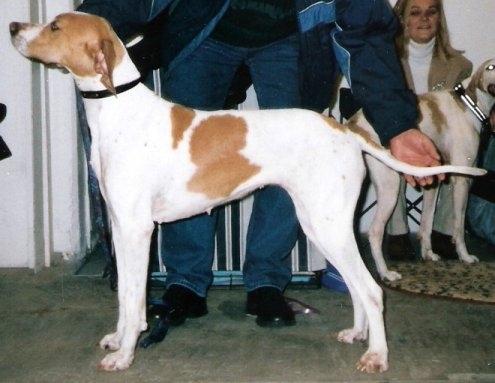
The Pointer, sometimes called the English Pointer, is a medium-sized breed of pointing dog developed in England. Pointers are used to find game for hunters, and are considered by gundog enthusiasts to be one of the finest breeds of its type; however, unlike most other pointing breeds, its purpose is to point, not retrieve game.
The popular belief is that the Pointer descends from the Old Spanish Pointer that was brought to England from Spain with returning soldiers at the beginning of the 18th century. Once in England, they were crossed with local dog breeds to improve the breed’s hunting abilities.
Read More About Pointer (Dog Breed) / Source
French Bulldog
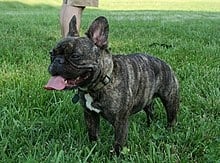
The French Bulldog, French: Bouledogue Français, is a French breed of companion dog or toy dog. It appeared in Paris in the mid-nineteenth century, apparently the result of cross-breeding of Toy Bulldogs imported from England and local Parisian ratters. It is a stocky, compact dog with a friendly, mild-mannered temperament.The breed is popular as a pet: in 2020, they were the second-most popular registered dog in the United Kingdom, and the second-most popular AKC-registered dog breed in the United States. They were rated the third-most popular dog in Australia in 2017. In 2019, in the United Kingdom, the French Bulldog had 375 export pedigrees and a total of 33,661 registered dogs. By comparison, the Labrador Retriever had over 36,700 dogs and the Cocker Spaniel fewer than 22,000.
Read More About French Bulldog / Source
Bernese Mountain Dog
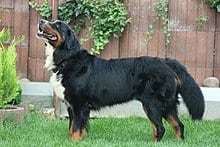
The Bernese Mountain Dog (German: Berner Sennenhund) is a large dog breed, one of the four breeds of Sennenhund-type dogs from the Swiss Alps. These dogs have roots in the Roman mastiffs. The name Sennenhund is derived from the German Senne (“alpine pasture”) and Hund (hound/dog), as they accompanied the alpine herders and dairymen called Senn. Berner (or Bernese in English) refers to the area of the breed’s origin, in the canton of Bern. This breed was originally kept as a general farm dog. Large Sennenhunde in the past were also used as draft animals, pulling carts. The breed was officially established in 1912.
Read More About Bernese Mountain Dog / Source
Pomeranian
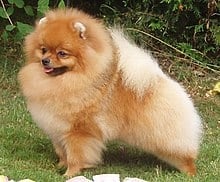
The Pomeranian (often known as a Pom) is a breed of dog of the Spitz type that is named for the Pomerania region in north-west Poland and north-east Germany in Central Europe. Classed as a toy dog breed because of its small size, the Pomeranian is descended from larger Spitz-type dogs, specifically the German Spitz. It has been determined by the Fédération Cynologique Internationale to be part of the German Spitz breed; and in many countries, they are known as the Zwergspitz (“Dwarf Spitz”).
The breed has been made popular by a number of royal owners since the 18th century. Queen Victoria owned a particularly small Pomeranian and consequently, the smaller variety became universally popular. During Queen Victoria’s lifetime alone, the size of the breed decreased by half. Overall, the Pomeranian is a sturdy, healthy dog. The most common health issues are luxating patella and tracheal collapse. More rarely, the breed can have Alopecia X, a skin condition colloquially known as “black skin disease”. This is a genetic disease which causes the dog’s skin to turn black and lose all or most of its hair. As of 2017, in terms of registration figures, since at least 1998, the breed has ranked among the top fifty most popular breeds in the United States, and the current fashion for small dogs has increased their popularity worldwide.
Read More About Pomeranian / Source
Havanese

The Havanese, a bichon-type dog, is the national dog of Cuba, developed from the now extinct Blanquito de la Habana (“little white dog of Havana”). The Blanquito descended from the also now-extinct Bichón Tenerife. It is believed that the Blanquito was eventually cross-bred with other bichon types, including the poodle, to create what is now known as the Havanese. Sometimes referred to as “Havana Silk Dogs”, this was originally another name for the Blanquito de la Habana.
The Havanese is small in size and sturdy in structure with a tail carried over its back and ears that drop and fold. The coat is abundant, long, and silky, and comes in all colors. The Havanese has a spirited personality and a curious disposition, and is notable for its springy gait, a characteristic that distinguishes the breed from all others. The Havanese is considered an ideal family pet and a true companion dog. They are highly adaptable to almost any environment. Because of their strong social needs, Havanese will not thrive in an environment where they are isolated for several hours each day.
Read More About Havanese / Source
Shetland Sheepdog

The Shetland Sheepdog, often known as the Sheltie, is a breed of herding dog that originated in the Shetland Islands of Scotland. The original name was Shetland Collie, but this caused controversy amongst Rough Collie breeders of the time, so the breed’s name was formally changed. This diligent small dog is clever, vocal, excitable and willing to please. They are incredibly trustworthy to their owners to the point where they are often referred to as “shadows” due to their attachment to family. This breed was formally recognized by The Kennel Club (UK) in 1909.
Like the Shetland pony, Shetland cattle and the Shetland sheep, the Shetland Sheepdog is a hardy but diminutive breed developed to thrive amidst the harsh and meagre conditions of its native islands. While the Sheltie still excels at herding, today it is often raised as a working dog and/or family pet. The Sheltie’s origins are obscure, but it is not a direct descendant of the Rough Collie, which it largely resembles. Rather, the Sheltie is a descendant of small specimens of the Scottish Collie and the King Charles Spaniel. They were originally a small mixed-breed dog, often only about 20 to 30 centimetres (8 to 12 inches) in height at the shoulder, and it is thought that the original Shetland herding dogs were of the Spitz type, and were crossed with Collies from mainland Britain. In the early 20th century, James Loggie added a small Rough Collie to the breeding stock, and helped establish the breed that would become the modern Shetland Sheepdog.
Read More About Shetland Sheepdog / Source
Brittany
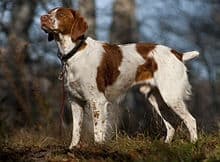
The Brittany is a breed of gun dog bred primarily for bird hunting. Although it is often referred to as the Brittany Spaniel, they are not actually spaniels. The AKC reclassified them in 1984 as just Brittanys, since they are pointing dogs and have less genetically in common with Spaniels, and more in common with Setters, which are pointing dogs. The breed’s working characteristics are more akin to those of a pointer or setter than a spaniel. Brittanys were developed in Brittany, a province in northwest France, between the 17th and 19th centuries, becoming officially recognized early in the 20th. There are French Brittanys as well as American Brittanys. French Brittanys are used for upland birds and rabbits, whereas the American Brittanys are used for upland birds hunting exclusively.
Read More About Brittany / Source
Miniature American Shepherd
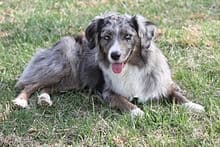
The Miniature American Shepherd, frequently abbreviated MAS, is a small herding dog breed. The MAS is highly intelligent and biddable. The breed is often trained for dog sports such as herding, agility, obedience, canine freestyle, flyball, and others. The Miniature American Shepherd was recognized by the American Kennel Club (AKC) in 2015 and is the club’s 186th breed. In September 2019, the Fédération Cynologique Internationale (FCI) officially accepted the breed.
Read More About Miniature American Shepherd / Source
Border Collie
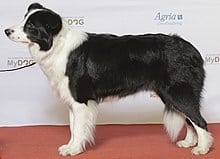
The Border Collie is a working and herding dog breed. They come from the Anglo-Scottish border region and are used to herd livestock, specifically sheep.The Border Collie is considered a highly intelligent, extremely energetic, acrobatic and athletic dog. They frequently compete with great success in sheepdog trials and a range of dog sports like dog obedience, disc dog, herding and dog agility. They are one of the most intelligent dogs of all domestic dog breeds. Border Collies continue to be employed in their traditional work of herding livestock throughout the world and are kept as pets.
Read More About Border Collie / Source
Mastiffs
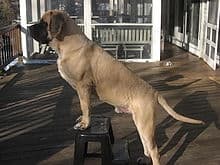
The English Mastiff is a breed of large dog. The breed is referred to simply as the Mastiff by national kennel clubs, including the United Kingdom’s Kennel Club and the Fédération Cynologique Internationale (FCI). They perhaps descended from the ancient Alaunt and Pugnaces Britanniae, with a significant input from the Alpine Mastiff in the 19th century. Distinguished by its enormous size, massive head, short coat in a limited range of colours, and always displaying a black mask, the Mastiff is noted for its gentle and loving nature. The lineage of modern dogs can be traced back to the early 19th century, but the modern type was stabilised in the 1880s and refined since. Following a period of sharp decline, the Mastiff has increased its worldwide popularity. Throughout its history the Mastiff has contributed to the development of a number of dog breeds, some generally known as mastiff-type dogs or, confusingly, just as “mastiffs”. It is the largest living canine, outweighing the wolf by up to 50 kg (110 lbs) on average.
Read More About Mastiffs / Source
Chihuahua
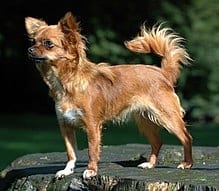
The Chihuahua ( (listen); Spanish: chihuahueño) is one of the smallest breeds of dog, and is named after the Mexican state of Chihuahua.
Read More About Chihuahua / Source
Weimaraner
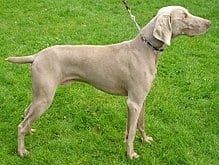
The Weimaraner ( VY-mə-rah-nər) is a large dog that was originally bred as a hunting dog in the early 19th century. Early Weimaraners were used by royalty for hunting large game such as boar, bear and deer. As the popularity of large game hunting began to decline, Weimaraners were used for hunting smaller animals like fowl, rabbits and foxes.
The Weimaraner is an all-purpose gun dog. The name comes from the Grand Duke of Saxe-Weimar-Eisenach, Karl August, whose court, located in the city of Weimar (now in the state of Thuringia in modern-day Germany), enjoyed hunting. The Weimaraner possesses traits such as speed, stamina, great sense of smell, great eyes, courage, and intelligence. The breed is sometimes referred to as the “gray ghost” of the dog world originating from its ghostly coat and eye color along with its stealthy hunting style.
Read More About Weimaraner / Source
Rhodesian Ridgeback

The Rhodesian Ridgeback is a large-sized dog breed bred in the Southern Africa region. Its forebears can be traced to the semi-domesticated ridged hunting and guarding dogs of the Khoikhoi, which were renowned for their heightened ferocity in both of their roles as hunters and guardians. These were crossed with European dogs by the early colonists of the Cape Colony of southern Africa. The original breed standard was drafted by F. R. Barnes, in Bulawayo, Southern Rhodesia (now Zimbabwe), in 1922, who named the breed the Rhodesian Ridgeback. The standard was approved by the South African Kennel Union in 1927.
Read More About Rhodesian Ridgeback / Source
Shiba Inu
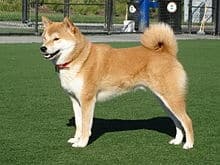
The Shiba Inu (柴犬, Japanese: [ɕiba inɯ]) is a breed of hunting dog from Japan. A small-to-medium breed, it is the smallest of the six original and distinct spitz breeds of dog native to Japan.A small, alert, and agile dog that copes very well with mountainous terrain and hiking trails, the Shiba Inu was originally bred for hunting. It looks similar to and is often mistaken for other Japanese dog breeds such as the Akita Inu or Hokkaido, but the Shiba Inu is a different breed with a distinct blood line, temperament, and smaller size than other Japanese dog breeds.
Read More About Shiba Inu / Source
West Highland White Terrier

The West Highland White Terrier, commonly known as the Westie, is a breed of dog from Scotland with a distinctive white harsh coat with a somewhat soft white undercoat. It is a medium-sized terrier, although with longer legs than other Scottish breeds of terrier. It has a white double coat of fur which fills out the dog’s face, giving it a rounded appearance.
The breed is intelligent, quick to learn, and can be good with children, but does not always tolerate rough handling. The Westie is an active breed, and is social with a high prey drive, as they were once used to hunt rodents.
The modern breed is descended from a number of breeding programmes of white terriers in Scotland before the 20th century. Cousin to the Cairn Terrier, the Westie was bred to hunt small rodents at places such as farms. Edward Donald Malcolm, 16th Laird of Poltalloch, is credited with the creation of the modern breed from his Poltalloch Terrier, but did not want to be known as such.
Other related breeds included George Campbell, 8th Duke of Argyll’s Roseneath Terrier and Dr Americ Edwin Flaxman’s Pittenweem Terriers. This breed of small white Scottish terriers was given its modern name for the first time in 1908, with recognition by major kennel clubs occurring around the same time.
The breed remains very popular in the UK, with multiple wins at Cruft’s. It has been in the top third of all breeds in the US since the 1960s. It has been featured in television and film, including in Hamish Macbeth, and in advertising by companies such as Cesar dog food and the Scotch whisky Black & White.
Several breed-specific and non-specific health issues appear in the breed, including a condition in young dogs nicknamed “westie jaw” which causes an overgrowth of bone in the jaw of the dog. It can also be prone to skin disorders, with a breed-specific condition called hyperplastic dermatosis occurring. They are a very energetic and boisterous breed, needing regular exercise of around one hour per day.
Read More About West Highland White Terrier / Source
Bichon Frise
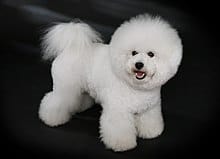
A Bichon Frise ( or ; from French: bichon à poil frisé, French pronunciation: [biʃɔ̃ fʁize], meaning ‘curly haired dog’) is a small breed of dog of the bichon type.
Read More About Bichon Frise / Source
Bloodhound

The bloodhound is a large scent hound, originally bred for hunting deer, wild boar and, since the Middle Ages, for tracking people. Believed to be descended from hounds once kept at the Abbey of Saint-Hubert, Belgium, in French it is called, le chien de Saint-Hubert.
This breed is famed for its ability to discern human scent over great distances, even days later. Its extraordinarily keen sense of smell is combined with a strong and tenacious tracking instinct, producing the ideal scent hound, and it is used by police and law enforcement all over the world to track escaped prisoners, missing people, and lost pets.
Read More About Bloodhound / Source
Chesapeake Bay Retriever
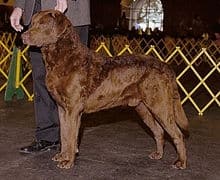
The Chesapeake Bay Retriever is a large-sized breed of dog belonging to the retriever, gundog, and sporting breed groups. The breed was developed in the United States Chesapeake Bay area during the 19th century. Historically used by area market hunters to retrieve waterfowl, pull fishing nets, and rescue fishermen, it is today primarily a family pet and hunting companion. They are often known for their love of water and their ability to hunt. It is a medium to large sized dog similar in appearance to the Labrador Retriever. The Chesapeake has a wavy coat, rather than the Labrador’s smooth coat. They are described as having a bright and happy disposition, courage, willingness to work, alertness, intelligence, and love of water as some of their characteristics.
Read More About Chesapeake Bay Retriever / Source
Papillon
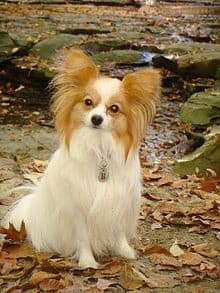
The Papillon (French pronunciation: [papijɔ̃], French for ‘butterfly[-eared]’), also called the Continental Toy Spaniel, is a breed of dog, of the spaniel type. One of the oldest of the toy spaniels, it derives its name from its characteristic butterfly-like look of the long and fringed hair on the ears. A Papillon with dropped ears is called a Phalene.
Read More About Papillon / Source
ScottishTerrier

The Scottish Terrier (Scottish Gaelic: Abhag Albannach; also known as the Aberdeen Terrier), popularly called the Scottie, is a breed of dog. Initially one of the highland breeds of terrier that were grouped under the name of Skye Terrier, it is one of five breeds of terrier that originated in Scotland, the other four being the modern Skye, Cairn, Dandie Dinmont, and West Highland White Terriers. They are an independent and rugged breed with a wiry outer coat and a soft dense undercoat. The First Earl of Dumbarton nicknamed the breed “the diehard”. According to legend, the Earl of Dumbarton gave this nickname because of the Scottish Terriers’ bravery, and Scotties were also the inspiration for the name of his regiment, The Royal Scots, Dumbarton’s Diehard. Scottish Terriers, also known as Scotties, were originally bred to hunt vermin on farms.
They are a small breed of terrier with a distinctive shape and have had many roles in popular culture. They have been owned by a variety of celebrities, including the 32nd president of the United States, Franklin Delano Roosevelt, whose Scottie Fala is included with FDR in a statue in Washington, D.C., as well as by the 43rd president, George W. Bush. They are also well known for being a playing piece in the board game Monopoly. Described as territorial, feisty dogs, they can make a good watchdog and tend to be very loyal to their family. Healthwise, Scottish Terriers can be more prone to bleeding disorders, joint disorders, autoimmune diseases, allergies, and cancer than some other breeds of dog, and there is a condition named after the breed called Scotty cramp. They are also one of the more successful dog breeds at the Westminster Kennel Club Dog Show with a best in show in 2010.
Read More About ScottishTerrier / Source
Cardigan Welsh Corgis

The Cardigan Welsh Corgi (; Welsh for “dwarf dog”) is one of two separate dog breeds known as Welsh Corgis that originated in Wales; the other is the Pembroke Welsh Corgi. It is one of the oldest breeds of the British Isles. Cardigan Welsh Corgis are known to be an extremely loyal dog breed. They are also versatile and can live in a variety of settings.
Read More About Cardigan Welsh Corgis / Source
Italian Greyhound

The Italian Greyhound (Italian: Piccolo levriero Italiano) is an Italian breed of small sighthound. It may also be called the Italian Sighthound.
Read More About Italian Greyhound / Source
Dogues De Bordeaux
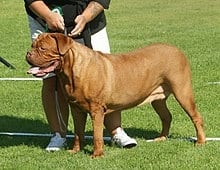
The Dogue de Bordeaux, Bordeaux Mastiff, French Mastiff or Bordeauxdog is a large French mastiff breed. A typical brachycephalic mastiff breed, the Bordeaux is a very powerful dog, with a very muscular body. This muscular breed has been put to work pulling carts, transporting heavy objects, and guarding flocks.
Read More About Dogues De Bordeaux / Source
Russell Terriers

The Jack Russell Terrier is a small terrier that has its origins in fox hunting in England. It is principally white-bodied and smooth, rough or broken-coated and can be any colour.
Small tan and white terriers that technically belong to other breeds are sometimes known erroneously as “Jack Russells”. Each breed has different physical characteristics according to the standards of their national breed clubs; size and proportions are often used to tell them apart. Some authorities recognize a similar but separate breed as the Russell Terrier – a shorter-legged, stockier dog, with a range of 20–30 cm (8–12 in). However, the Fédération Cynologique Internationale (FCI) regards the Russell terrier as a sub-type of Jack Russell terrier. Jack Russells are also frequently confused with the Parson Russell Terrier. Technically, the Parson Russell is usually larger and officially limited to a middle range, with a standard size of 30–36 cm (12–14 in), whereas the Jack Russell is a broader type, with a size range of 25–38 cm (10–15 in)Jack Russells are an energetic breed that rely on a high level of exercise and stimulation. They are relatively free from any serious health complaints. Originating from dogs bred and used by the Rev. John Russell in the early 19th century, from whom the breed takes its name, the Jack Russell has similar origins to the modern Fox Terrier. It has gone through several changes over the years, corresponding to different use and breed standards set by kennel clubs. Recognition by kennel clubs for the Jack Russell breed has been opposed by the breed’s parent societies – which resulted in the breeding and recognition of the Parson Russell terrier. Jack Russells have appeared many times in film, television, and print – with several historical dogs of note.
Read More About Russell Terriers / Source
Cairn Terrier
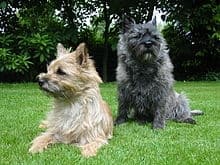
The Cairn Terrier is a terrier breed originating in the Scottish Highlands and recognized as one of Scotland’s earliest working dogs. The breed was given the name Cairn because the breed’s function was to hunt and chase quarry between the cairns in the Scottish highlands.
Although the breed had existed long before, the name Cairn Terrier was a compromise suggestion after the breed originally was brought to official shows in the United Kingdom in 1909 under the name Short-haired Skye terriers. This name was not acceptable to The Kennel Club due to opposition from Skye Terrier breeders, and the name Cairn Terrier was suggested as an alternative.
Read More About Cairn Terrier / Source
Irish Setter
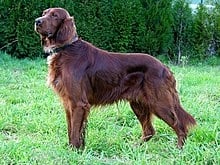
The Irish Setter (Irish: sotar rua, literally “red setter”) is a setter, a breed of gundog, and family dog. The term Irish Setter is commonly used to encompass the show-bred dog recognised by the American Kennel Club as well as the field-bred Red Setter recognised by the Field Dog Stud Book.
Read More About Irish Setter / Source
Swiss Mountain Dog

Sennenhunds, called Swiss mountain dogs or Swiss cattle dogs in English, are a type of dog originating in the Swiss Alps. The Sennenhund are farm dogs of the general livestock guardian type. There are four breeds of Sennenhunds, all sporting a unique tricolor coat. While the two larger ones share a heavy build and a calm temperament, the two smaller ones are more agile. The breeds range from medium in size to very large. The name Sennenhund refers to people called Senn or Senner, Swiss Alpine herdsmen and dairymen, and does not translate as “mountain” or “cattle”.
Read More About Swiss Mountain Dog / Source
Chinese Crested
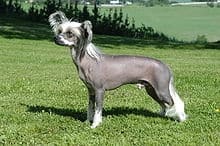
The Chinese Crested Dog is a hairless breed of dog. Like most hairless dog breeds, the Chinese Crested Dog comes in two varieties, with and without hair, which can be born in the same litter: the Powderpuff and the Hairless.
Read More About Chinese Crested / Source
Staffordshire Bull Terrier
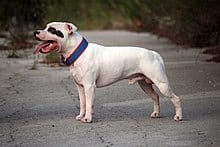
The Staffordshire Bull Terrier, commonly called Stafford, is a shorthaired, purebred dog breed of medium size that originated in the Black Country of Staffordshire in the English Midlands. Their earliest beginnings date back centuries when the Mastiff and Bulldog were closely linked, and the sport of bull and bear baiting required large dogs in the 100–120 lb range. In the 1830s, bull-baiting became illegal, and dog fighting became a clandestine sport. Breeders migrated away from the heavier bulldogs once used for bull-baiting, and introduced terrier blood into the cross for its gameness and agility. The ancestral hybrid cross of bulldogs and terriers were sometimes referred to as half-and-halfs and half-breds but became more commonly known as the bull and terrier, which was not a standardised breed but the beginning of several breeds.After the banning of blood sports and pit fighting in 1835, dog breeders made changes that, over the course of centuries, resulted in breed refinement over many generations. By the mid-1860s, a new breed was being developed by James Hinks which came to be known as the ‘Bull Terrier’. However, the Stafford’s association as a fighting dog in the early 19th century made it difficult to gain acceptance as a standardized purebred. It wasn’t until 1935 that The Kennel Club accepted Staffordshire Bull Terriers into their stud book with established breed standards. The American Kennel Club (AKC) admitted Staffordshire Bull Terriers as a purebred on 1 October 1974 as their 121st registered breed.Little is known about the actual pedigrees of the Stafford’s ancestral origins, beyond individual types and styles of dogs that varied by geographic region. The progeny from one area may have a higher percentage of terrier than bulldog, whereas other reports claim that bulldog to terrier was preferred over bull and terrier to bull terrier. DNA studies have brought some clarity to the hybridization mystery of bull and terrier hybrids, suggestive of a New World dog within some modern breeds. The study states that “all of the bull and terrier crosses map to the terriers of Ireland and date to 1860-1870.” The historical descriptions confirm the popularity of such crosses in Ireland, but they do not positively identify all the breeds that were involved. As supported by the DNA study, as well as the AKC and KC, references to bull and terrier were not as a bona fide breed; rather, the term describes a heterogeneous group of dogs that may include purebreds of different breeds, or crosses of those breeds. Bull and terrier hybrids, or pit bull types are considered the forerunner of several modern standardised breeds.
Read More About Staffordshire Bull Terrier / Source
Rat Terrier
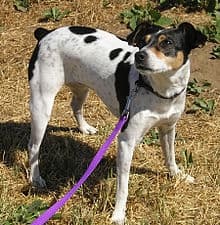
The Rat Terrier’ is an American dog breed with a background as a farm dog and hunting companion. They share much ancestry with the small hunting dogs known as feists. Common throughout family farms in the 1920s and 1930s, they are now recognized by the United and American Kennel Clubs and are considered a rare breed. Today’s Rat Terrier is an intelligent and active small dog that is kept both for pest control and as a family pet.
Read More About Rat Terrier / Source
Anatolian Shepherd Dog
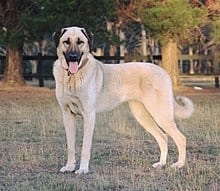
The Kangal Shepherd is a breed of large livestock guardian dog native to Turkey. Originally the breed served the people of Sivas, and the Kangal continues to be a popular dog breed in Turkey. According to official Kangal Shepherd Dog organisations in Turkey, including the Cynology Federation of Turkey (Köpek Irkları ve Kinoloji Federasyonu, KIF) and the Ankara Kangal Association (Ankara Kangal Derneği, ANKADER) the acceptable colours for Kangal are sable and fawn. Kangal shepherd dogs do not come in brindle or Black and Tan.
While the Kangal Shepherd Dog is often referred to as a sheep dog, it is not a herding dog, but rather a flock guardian that lives with the flock of sheep to actively fend off predators of all sizes. The Kangal shepherd is widely regarded as having the most powerful bite force of all domestic dogs. Typically used as protection against wolves, bears, and jackals in its native Turkey, the breed has been exported to African countries like Namibia and Kenya in more recent years due to its intimidating size and capabilities as an effective guardian, where it successfully protects local herds from lions, cheetahs, and similar indigenous big cats, which has had the benefit of not only protecting livestock, but ensuring the continuity of endangered predators due to reduced cullings by local farmers.
Read More About Anatolian Shepherd Dog / Source
Basenji
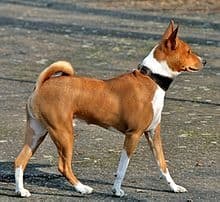
The Basenji is a breed of hunting dog. It was bred from stock that originated in central Africa. The Fédération Cynologique Internationale places the breed in the Spitz and primitive types. The Basenji produces an unusual yodel-like sound, due to its unusually shaped larynx. This trait also gives the Basenji the nickname the ‘barkless dog.’Basenjis share many distinctive traits with pariah dog types. Basenjis come into estrus only once annually similar to dingoes and New Guinea singing dogs, when compared with other dog breeds which may have two or more breeding seasons each year. Basenji lack a distinctive odor, and are prone to howls, yodels, and other vocalizations over the characteristic bark of modern dog breeds. The breed’s original foundation stock came from the Democratic Republic of the Congo.
Read More About Basenji / Source
Lagotto Romagnolo
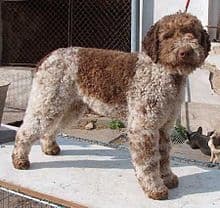
The Lagotto Romagnolo is an Italian breed of dog. It originates in the marshlands of the Delta del Po in the eastern part of the Romagna sub-region of Italy. The name derives from Romagnol can lagòt, meaning “water dog”. Its traditional function was as a gun dog, specifically a water retriever; since the drainage of large areas of wetland habitat in its area of origin, it is now more often used to hunt for truffles.
Read More About Lagotto Romagnolo / Source
Griffon Bruxellois

The Griffon Bruxellois or Brussels Griffon is a breed of toy dog, named for their city of origin: Brussels, Belgium. The Griffon Bruxellois may refer to three different breeds, the Griffon Bruxellois, the Griffon Belge and the Petit Brabançon. Identical in standard except for coat and colour differences, in some standards they are considered varieties of the same breed, much like Belgian Shepherd Dogs.
Read More About Griffon Bruxellois / Source
Nova Scotia Duck Tolling Retriever

The Nova Scotia Duck Tolling Retriever is a medium-sized gundog bred primarily for hunting. It is often referred to as a “toller”. It is the smallest of the retrievers, and is often mistaken for a small Golden Retriever. Tollers are intelligent, eager to please, alert, and energetic. The name “toller” is derived from their ability to lure waterfowl within gunshot range. The breed originated in Yarmouth County, Nova Scotia, Canada. The American Kennel Club ranks the toller as the 87th most popular dog breed.
Read More About Nova Scotia Duck Tolling Retriever / Source
Norwegian Elkhound

The Norwegian Elkhound is one of the Northern Spitz-type breed of dog and is the National Dog of Norway. The Elkhound has served as a hunter, guardian, herder, and defender. It is known for its courage in tracking and hunting moose and other large game, such as bears or wolves. The Norwegian Elkhound was first presented at a dog exhibition in Norway in 1877.
The AKC breed name “Norwegian Elkhound” is a direct translation from its original Norwegian name Norsk elghund, meaning “Norwegian moose dog.” The breed’s object in the hunt is to independently track down and hold the moose at bay—jumping in and out toward the moose, distracting its attention, while signaling to the hunters by barking very loudly—until the hunter who follows the sound can arrive to shoot it. The dog will only bark while the moose is stationary, but it can also slowly drive the moose towards shooters lying in wait. The Norwegian Elkhound is also used on a leash. In this mode of hunting, the dog leads the hunter in the direction of the moose while keeping quiet.
Read More About Norwegian Elkhound / Source
Dogo Argentino
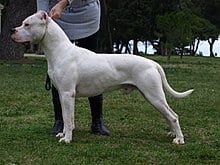
The Argentine Dogo is a large, white, muscular breed of dog that was developed in Argentina primarily for the purpose of big-game hunting, including wild boar. The breeder, Antonio Nores Martínez, also wanted a dog that would exhibit steadfast bravery and willingly protect its human companion. It was first bred in 1928 from the Cordoba Fighting Dog, along with a wide array of other breeds, mainly bulldogs and terriers, including the Great Dane, Dogue de Bordeaux, Pointer, Bull and terrier etc.
Read More About Dogo Argentino / Source
Bouvier des Flandres

The Bouvier des Flandres is a herding dog breed originating in Flanders, Belgium. They were originally used for general farm work including cattle droving, sheep herding, and cart pulling, and nowadays as guard dogs and police dogs, as well as being kept as pets. The French name of the breed means, literally, “Cow Herder of Flanders”, referring to the Flemish origin of the breed. Other names for the breed are Toucheur de Boeuf (cattle driver), Vlaamse Koehond (Flemish cow dog), and Vuilbaard (dirty beard).
Read More About Bouvier des Flandres / Source
Leonberger
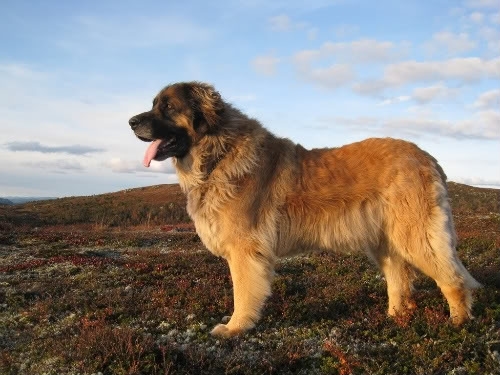
The Leonberger is a dog breed, whose name derives from the city of Leonberg in Baden-Württemberg, Germany.
Read More About Leonberger / Source
English Setter

The English Setter is a medium-size breed of dog. It is part of the setter group, which includes the red Irish Setters, Irish Red and White Setters, and black-and-tan Gordon Setters. The mainly white body coat is of medium length with long silky fringes on the back of the legs, under the belly and on the tail. The coat features flecks of colour, and the different colour varieties are referred to as belton.
A gentle but at times strong-willed, mischievous gun dog, bred for a mix of endurance and athleticism, it is used to hunt for game such as quail, pheasant and grouse. When working, the dog will hunt methodically seeking the airborne scent of its prey. It is sometimes referred to as the Laverack or Llewellin Setter as these were famous strains of the breed during the major development period in the 19th century. Those from hunting stock are generally of a finer build and with less coat than those bred for show exhibition.
Generally reasonably healthy, they have an average life span of 11 to 12 years. The Kennel Club advises UK breeders to screen for hip dysplasia.
Read More About English Setter / Source
Flat-coated Retriever

The Flat-coated Retriever is a gundog breed originating from England. It was developed as a retriever both on land and in the water.
Read More About Flat-coated Retriever / Source
Borzoi
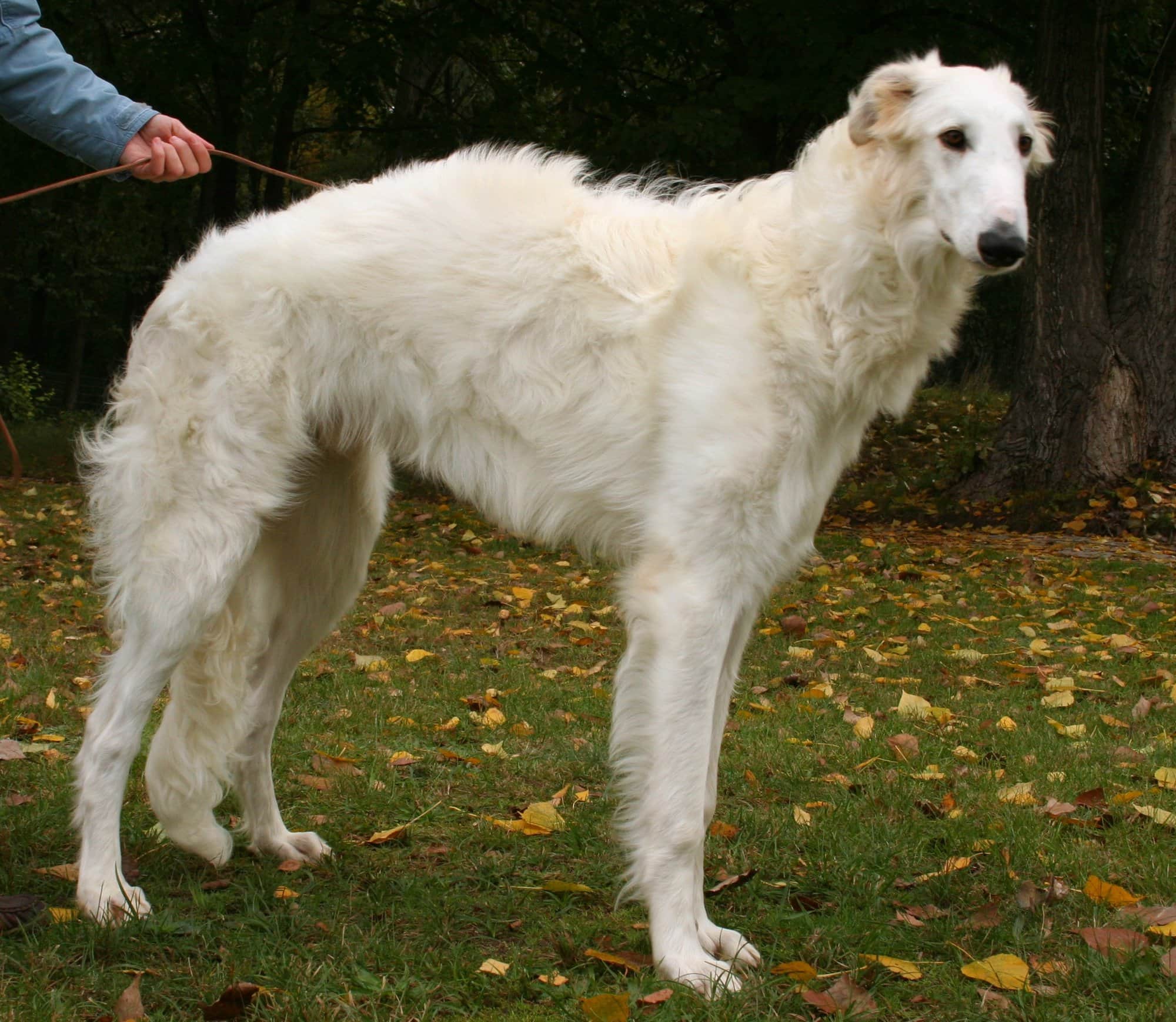
The Borzoi or Russian Hunting Sighthound is a Russian breed of hunting dog of sighthound type. It was formerly used for wolf hunting,: 125 and until 1936 was known as the Russian Wolfhound.: 130
Read More About Borzoi / Source
Wire Fox Terrier
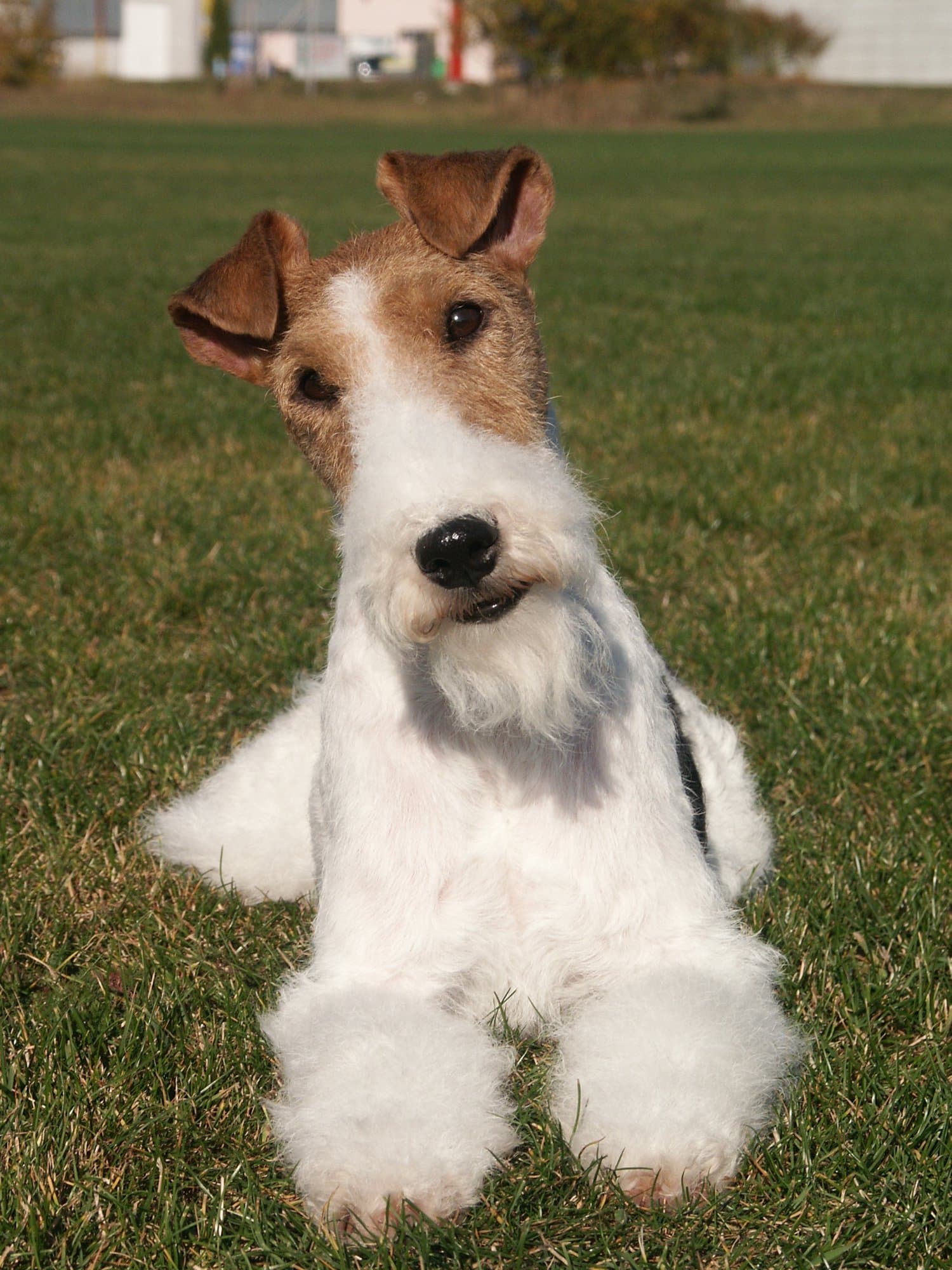
The Wire Fox Terrier (also known as Wire Hair Fox Terrier or Wirehaired Terrier) is a breed of dog, one of many terrier breeds. It is a fox terrier, and although it bears a resemblance to the Smooth Fox Terrier, they are believed to have been developed separately.
Read More About Wire Fox Terrier / Source
Miniature Bull Terrier

The Miniature Bull Terrier is a breed with origins in the extinct English White Terrier, the Dalmatian and the Bulldog. The first existence is documented 1872 in The Dogs of British Island.
Read More About Miniature Bull Terrier / Source
Belgian Tervuren

The elegant, agile Belgian Tervuren is a bright and self-assured herding dog of medium size, known to be affectionate and possessive with loved ones. Lots of hard work and challenging play is heaven for this tireless, do-it-all dog. The Belgian Tervuren is characterized by a straight and abundant coat, an elegant but muscular frame, a proudly carried head, an alert and intelligent demeanor, and an insatiable work drive.
Read More About Belgian Tervuren / Source
Gordon Setter
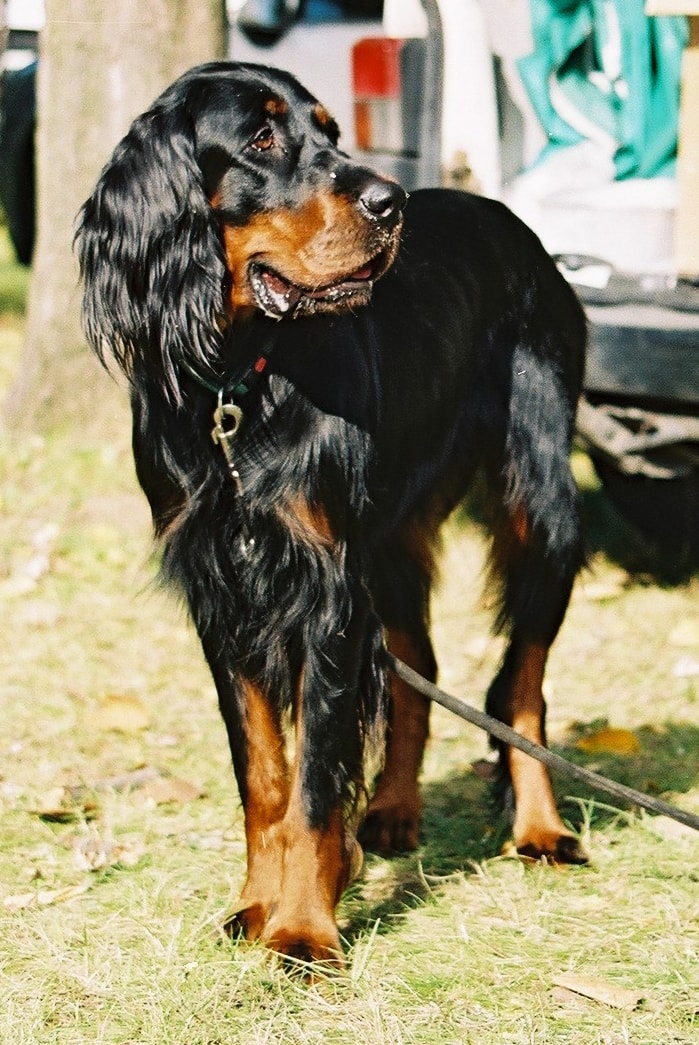
The Gordon Setter is a large breed of dog, a member of the setter family that also includes both the better-known Irish Setter and the English Setter. Setter breeds are classified as members of either the Sporting or Gundog Group depending on the national kennel club or council. The original purpose of the breed was to hunt gamebirds. Their quarry in the United Kingdom, may be partridge or grouse, pheasant, ptarmigan, blackgame, snipe or woodcock: whilst overseas bird dogs are worked on quail, willow grouse, sand grouse, guinea fowl, sagehen, francolin and any other bird that will sit to a dog—that is to say, will attempt to avoid a potential predator by concealment rather than by taking to the wing at the first sign of danger. It is this combination of a bird that will sit fast in front of a dog that will remain on point that makes bird dog work possible.
Read More About Gordon Setter / Source
Silky Terrier

The Australian Silky Terrier or simply Silky Terrier (depending on the breed registry) is a small breed of dog of the terrier dog type. The breed was developed in Australia, although the ancestral types and breeds were from Great Britain. It is closely related to the Australian Terrier and the Yorkshire Terrier. The breed is called the Silky Terrier in North America, but is called the Australian Silky Terrier in its country of origin and in the rest of the world.
Read More About Silky Terrier / Source
Norwich Terrier

The Norwich Terrier is a breed of dog originating in the United Kingdom, and was bred to hunt small rodents. With a friendly personality, Norwich Terriers are today mostly a companion dog breed. One of the smallest terriers, these dogs are generally healthy, but are relatively rare, due in part to their low litter size and the common need for caesarian sections. Their drop-eared variety is the Norfolk Terrier.
Read More About Norwich Terrier / Source
Welsh Terrier

The Welsh Terrier (Welsh: Daeargi Cymreig) originates from Wales and was originally bred for hunting fox, rodents and badger; but during the last century, it has mainly been bred for showing. Despite this, it has retained its terrier strength of character. The Welsh Terrier has been claimed to be the oldest existing dog breed in the UK.The Welsh Terrier was a latecomer to the British show-ring (being primarily a working dog) and was not officially registered as a breed until the 19th century. It is on the UK Kennel Club’s list of breeds that are in danger of dying out, having as few as 300 or so pups registered annually. The most popular breeds are registered in tens of thousands each year.
Read More About Welsh Terrier / Source
Toy Fox Terrier
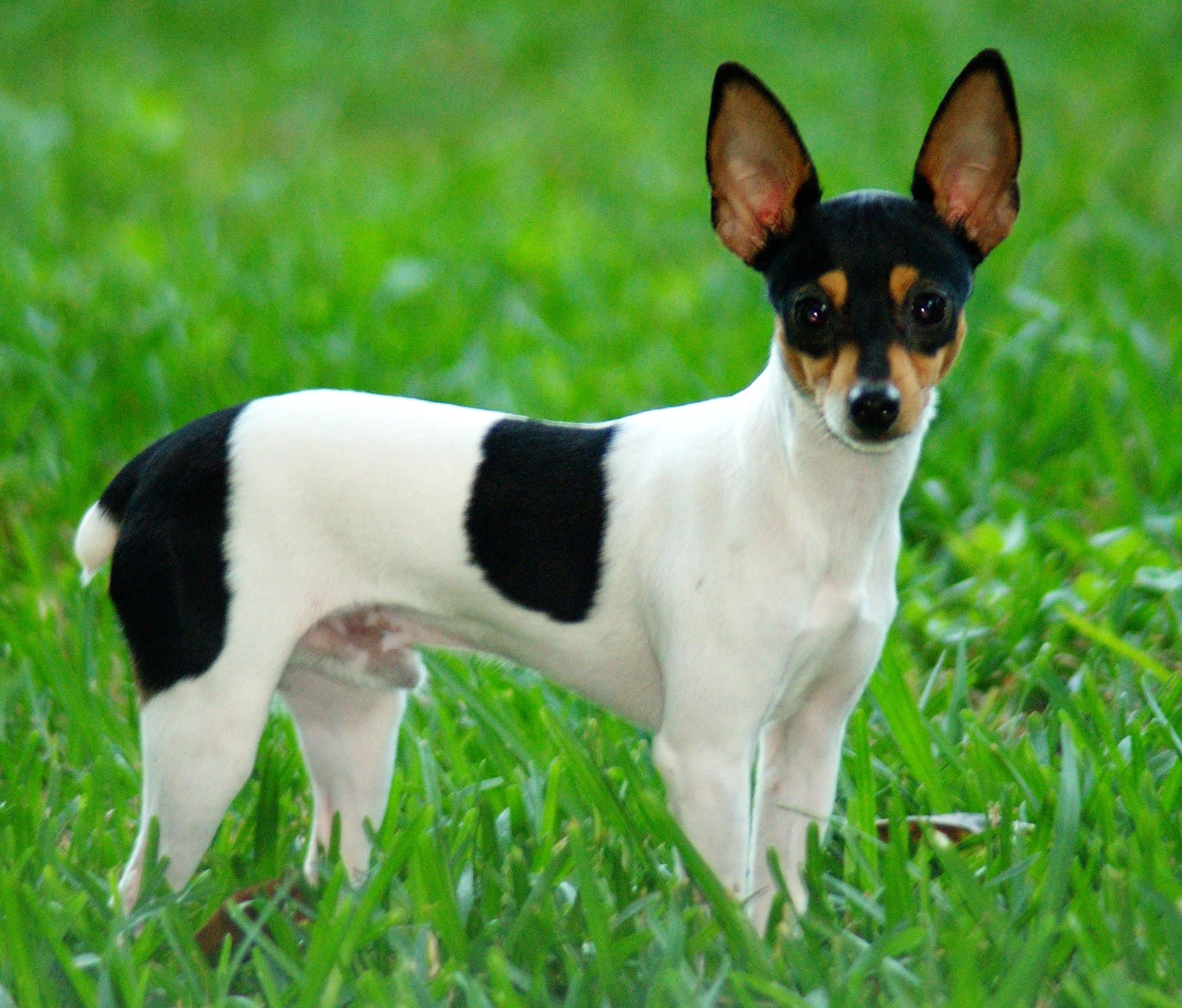
The Toy Fox Terrier is a small terrier breed of dog, directly descended from the larger Smooth Fox Terrier but since 1936, it has been registered in the USA with the UKC as a separate breed.
Read More About Toy Fox Terrier / Source
Tibetan spaniel
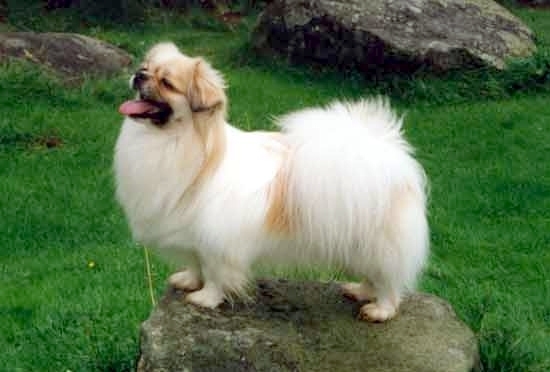
The Tibetan Spaniel is a breed of assertive, small dogs originating in Tibet. This breed is not a spaniel in the original meaning of the term; its breeding differs from other spaniels, and unlike true spaniels, which are gun dogs, the Tibetan spaniel is a companion dog. The spaniel name may have been given due to its resemblance to the bred-down lapdog versions of the hunting spaniels, such as the Cavalier King Charles spaniel.
Read More About Tibetan spaniel / Source
Beauceron
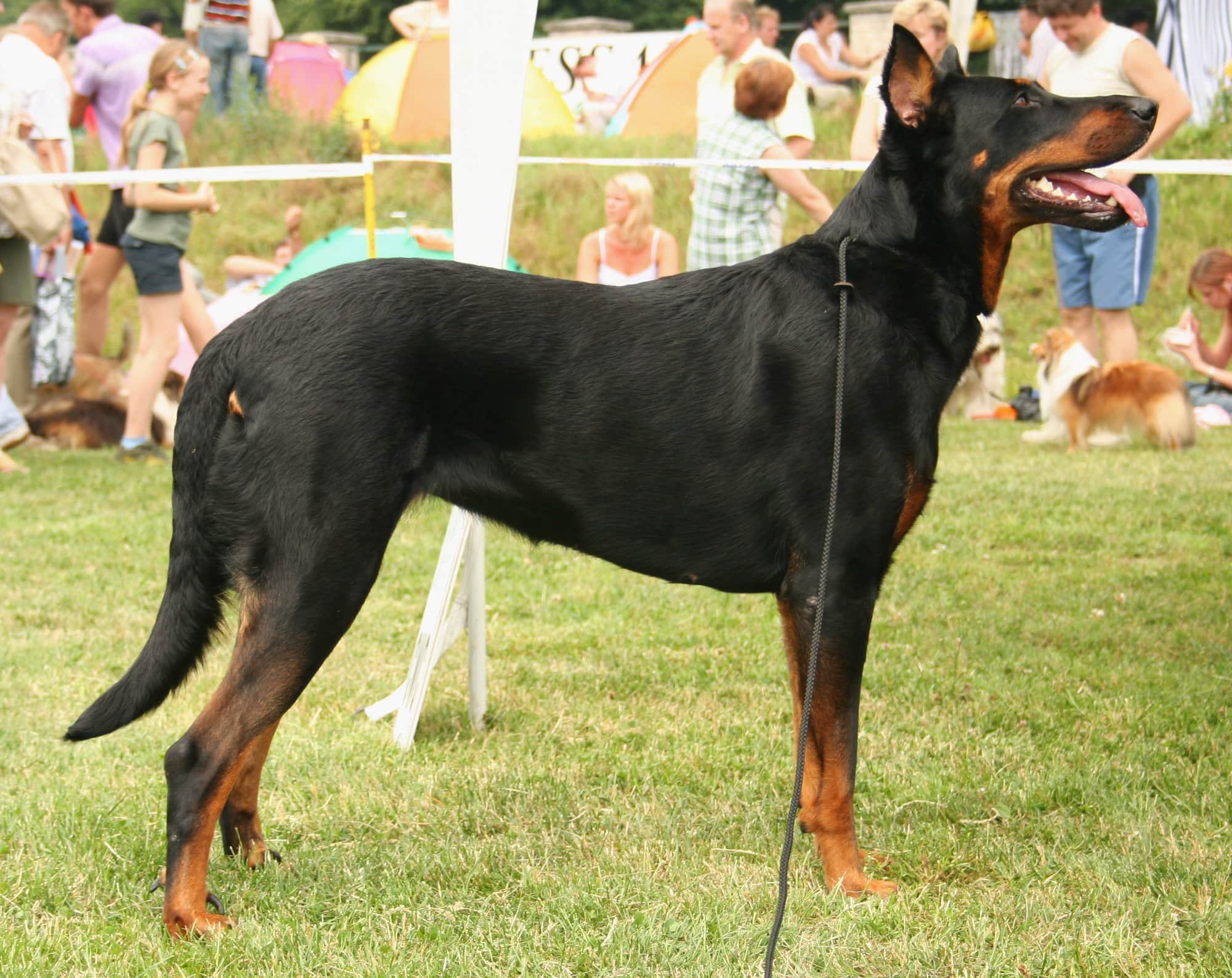
The Beauceron is a herding dog breed originating from the plains of Central France. The Beauceron is also known as Berger de Beauce (sheepdog from Beauce) or Bas Rouge (red-stockings).
Read More About Beauceron / Source
Boerboel
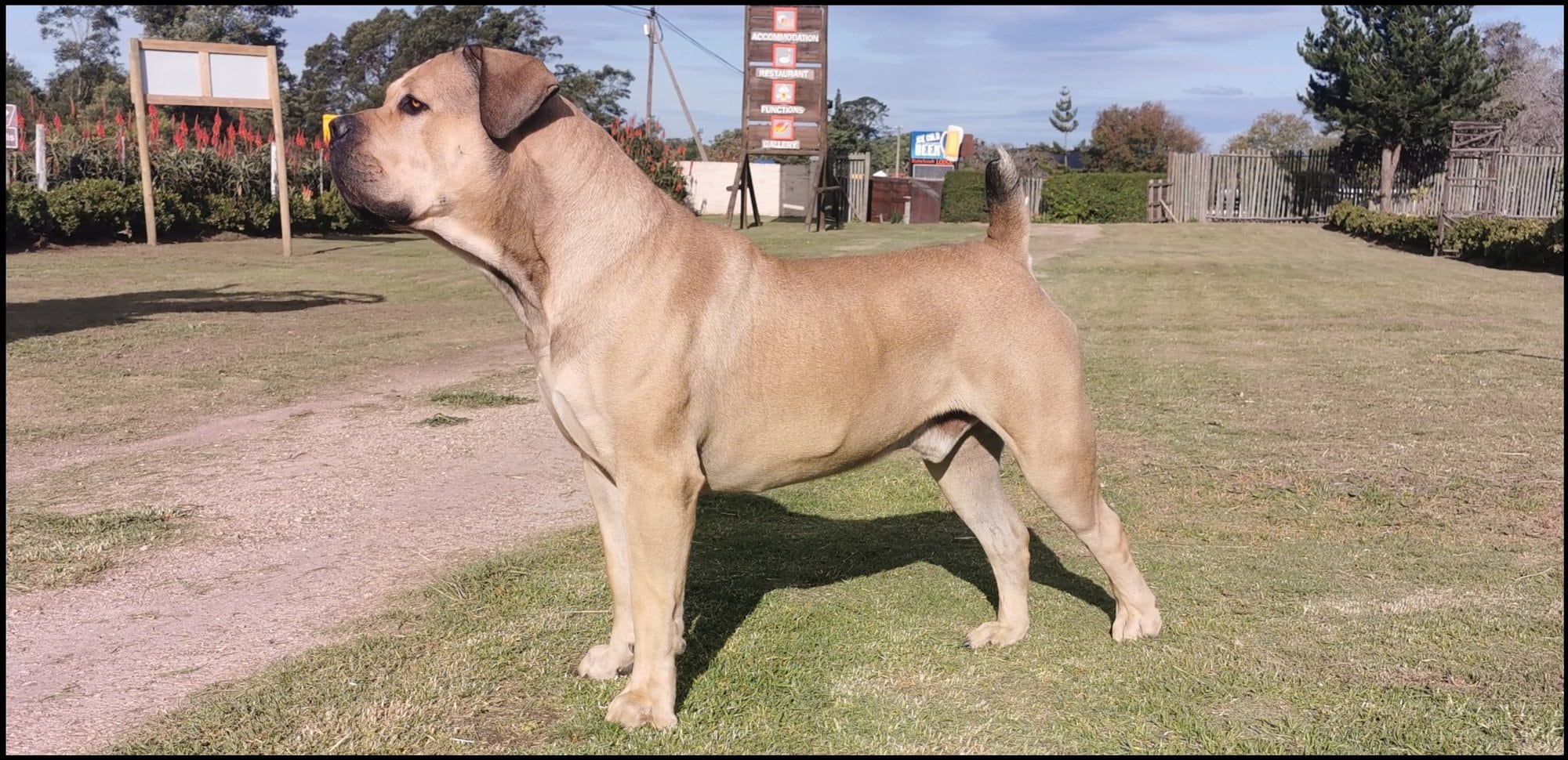
The Boerboel (pronounced [ˈbuːrbul]) is a South African breed of large dog of mastiff type, used as a family guard dog. It is large, with a short coat and black mask, strong bone structure and well-developed muscles; the head appears bulky, with a short distance between the stop and nose.It is recognised by the Kennel Union of Southern Africa, but not by the Fédération Cynologique Internationale.
Read More About Boerboel / Source
Bearded Collie
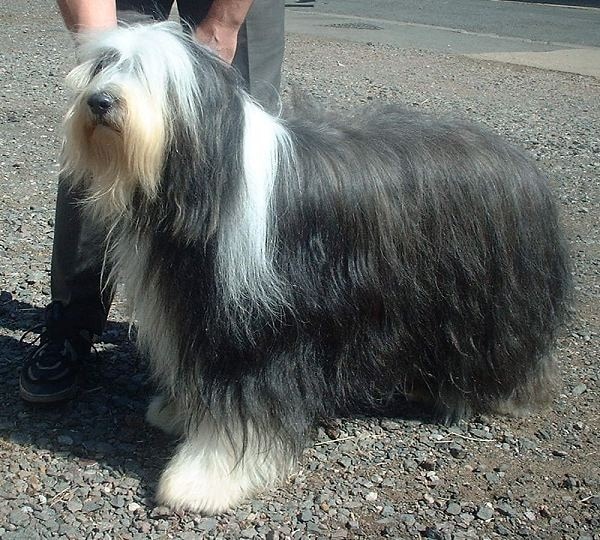
The Bearded Collie, or Beardie, is a herding breed of dog once used primarily by Scottish shepherds, but now mostly a popular family companion.
Bearded Collies have an average weight of 18–27 kilograms (40–60 lb). Males are around 51–56 centimetres (20–22 in) tall at the withers while females are around 51–53 centimetres (20–21 in) tall.
Read More About Bearded Collie / Source
Black Russian Terrier
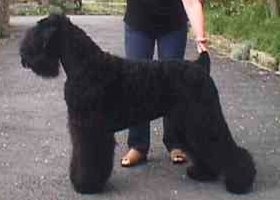
The Black Russian Terrier (Russian: Русский чёрный терьер), also known as the Chornyi Terrier (chornyi being Russian for black) is a breed of dog created in USSR in Red Star (Krasnaya Zvezda) Kennel during the late 1940s and the early 1950s for use as military/working dogs. At the present time, the Black Russian Terrier is a breed recognized by the FCI (FCI’s from September 1983), AKC (AKC’s from July 2004), CKC, KC, ANKC, NZKC and other cynological organizations. The contemporary Black Russian Terrier is a working dog, guarding dog, sporting and companion dog.
Despite its name, the Black Russian Terrier is not a true terrier: it is believed that about seventeen breeds were used in its development, including the Airedale, the Giant Schnauzer, the Rottweiler, the Newfoundland, the Caucasian Shepherd Dog and other breeds.
Read More About Black Russian Terrier / Source
Black and Tan Coonhound

The Black and Tan Coonhound is a breed of hunting dog. Developed in the United States from crosses between the Bloodhound and the Black and Tan Virginia Foxhound, this scent hound runs its game entirely by scent and is used primarily for raccoon hunting.
Read More About Black and Tan Coonhound / Source
Welsh Springer Spaniel
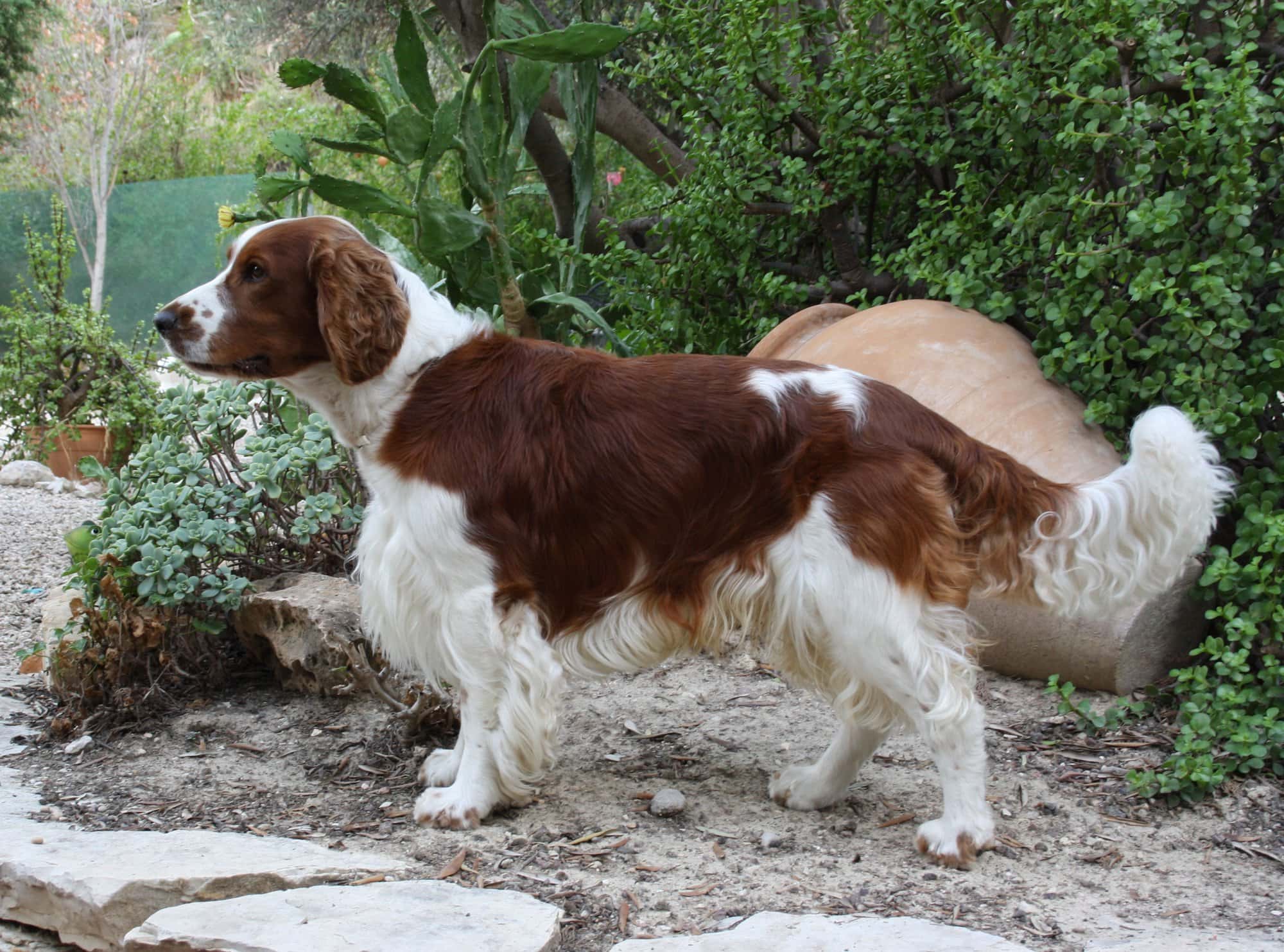
The Welsh Springer Spaniel (Welsh: Llamgi Cymru) is a breed of dog and a member of the spaniel family. Thought to be comparable to the old Land Spaniel, they are similar to the English Springer Spaniel and historically have been referred to as both the Welsh Spaniel and the Welsh Cocker Spaniel. They were relatively unknown until a succession of victories in dog trials by the breed increased its popularity. Following recognition by The Kennel Club in 1902, the breed gained the modern name of Welsh Springer Spaniel. The breed’s coat only comes in a single colour combination of white with red markings, usually in a piebald pattern. Loyal and affectionate, they can become very attached to family members and are wary of strangers. Health conditions are limited to those common among many breeds of dog, although they are affected more than average by hip dysplasia and some eye conditions. They are a working dog, bred for hunting, and while not as rare as some varieties of spaniel, they are rarer than the more widely known English Springer Spaniel with which they are sometimes confused.
Read More About Welsh Springer Spaniel / Source
Norfolk Terrier
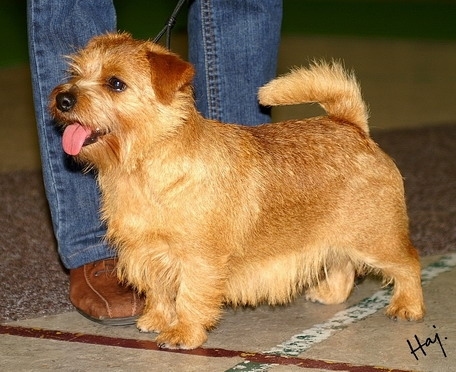
The Norfolk Terrier is a British breed of dog. Prior to gaining recognition as an independent breed in 1964, it was a variety of the Norwich Terrier, distinguished from the “prick eared” Norwich by its “drop ears” (or folded ears). Together, the Norfolk and Norwich Terriers are the smallest of the working terriers.
Read More About Norfolk Terrier / Source
Xoloitzcuintle
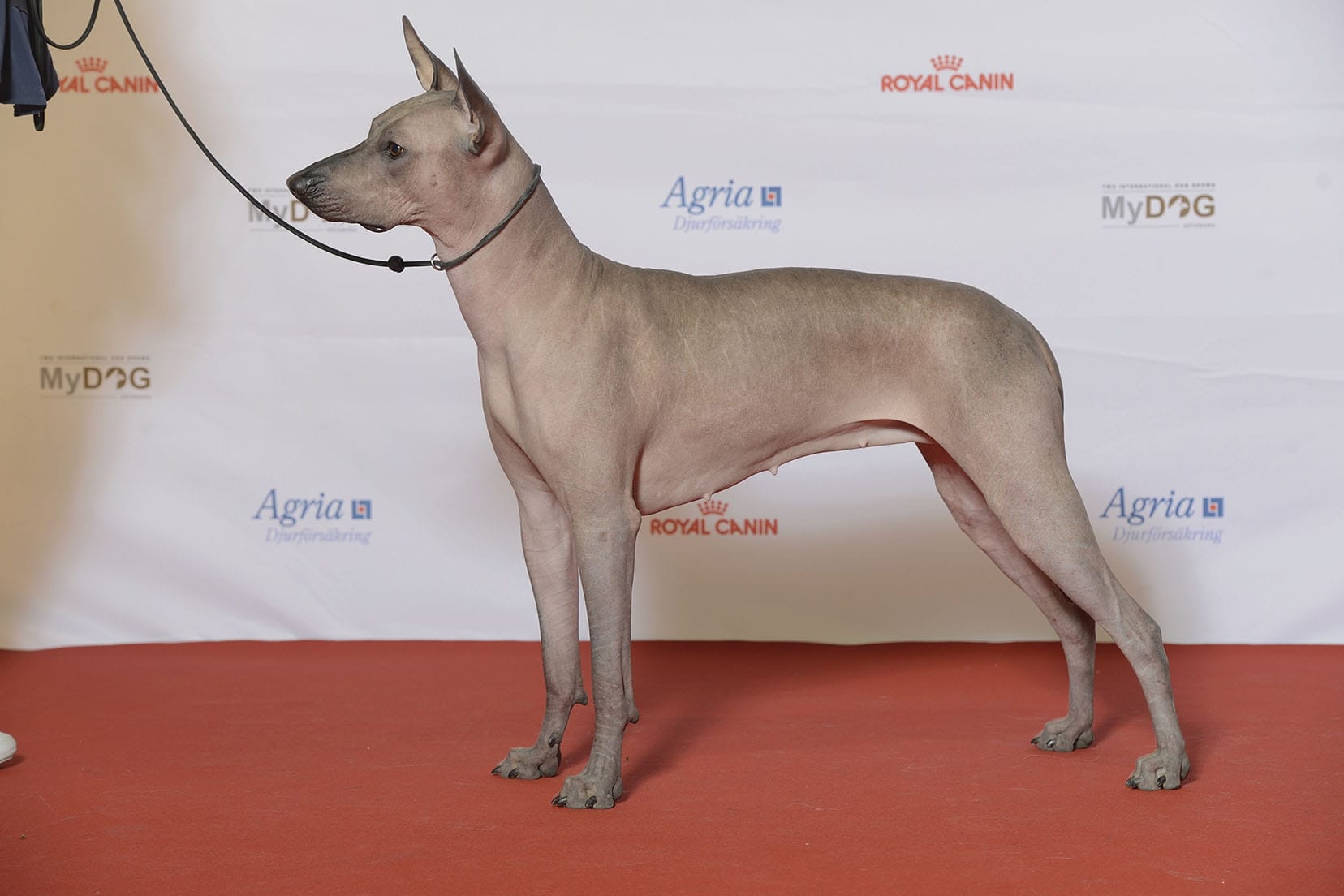
The Xoloitzcuintle (or Xoloitzquintle, Xoloitzcuintli, or Xolo) is one of several breeds of hairless dog. It is found in Estándar (Standard), Intermedio (intermediate), and Miniatura (miniature) sizes. The Xolo also comes in a coated variety, totally covered in fur. Coated and hairless can be born in the same litter as a result of the same combination of genes. The hairless variant is known as the Perro pelón mexicano or Mexican hairless dog. It is characterized by its duality, wrinkles, and dental abnormalities, along with a primitive temper. In Nahuatl, from which its name originates, it is xōlōitzcuintli [ʃoːloːit͡sˈkʷint͡ɬi] (singular) and xōlōitzcuintin [ʃoːloːit͡sˈkʷintin] (plural). The name comes from the god Xolotl that according to ancient narratives is its creator and itzcuīntli [it͡sˈkʷiːnt͡ɬi], meaning ‘dog’ in Nahuatl language.
Read More About Xoloitzcuintle / Source
Manchester Terrier
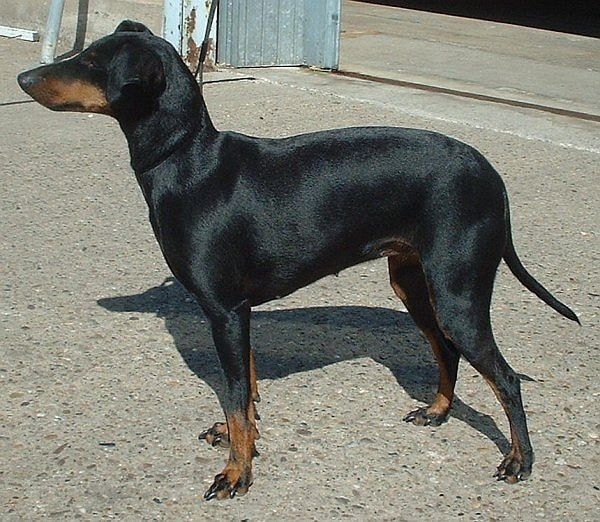
The Manchester Terrier is a breed of dog of the smooth-haired terrier type. It was first bred in the 19th century to control vermin, notably rats, at which it excelled. So efficient at the task was it that it often appeared in rat-baiting pits until that sport, which had effectively been illegal in the UK since 1835, finally died out at the beginning of the 20th century.
The breed is generally healthy, although dogs can be affected by several inheritable genetic disorders. A crash in the number of registered Manchester Terriers following the Second World War has resulted in the Kennel Club categorising it as a vulnerable native breed, in danger of extinction.
Read More About Manchester Terrier / Source
Kerry Blue Terrier

The Kerry Blue Terrier (also known as the Irish Blue Terrier) (Irish: An Brocaire Gorm) is a breed of dog. Originally bred to control vermin including rats, rabbits, badgers, foxes, otters and hares, over time the Kerry became a general working dog used for a variety of jobs including herding cattle and sheep, and as a guard dog. Today the Kerry has spread around the world as a companion and working dog. Despite a Kerry Blue winning Crufts (the most prestigious UK dog show) in 2000, it remains an “unfashionable” breed, and is distinctly uncommon; however, it is not as threatened as some of the other terrier breeds such as the Skye Terrier, Sealyham Terrier, and Dandie Dinmont Terrier.
Read More About Kerry Blue Terrier / Source
Australian Terrier
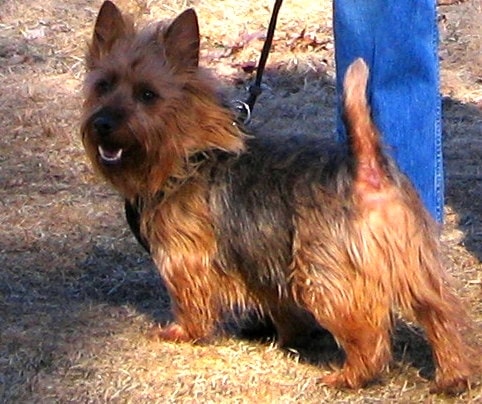
The Australian Terrier is a small breed of dog of the terrier dog type. The breed was developed in Australia, although the ancestral types of dogs from which the breed descends were from Great Britain.
Read More About Australian Terrier / Source
Clumber Spaniel

The Clumber Spaniel is a breed of dog of the spaniel type, developed in the United Kingdom. It is the largest of the spaniels, and comes in predominantly white with either lemon or orange markings. The name of the breed is taken from Clumber Park in Nottinghamshire where the breed was first developed. It is a gundog that specialises in hunting in heavy cover. They are gentle and loyal, and can act aloof with strangers. They have several habits which could be considered disadvantages, including a constant shedding of its coat and snoring.
The history of the breed is uncertain prior to the mid-19th century with two theories being prevalent. Clumber Spaniels have been kept and bred by various members of the British Royal Family, including Prince Albert, King Edward VII and King George V. They were introduced into Canada in 1844, and in 1884 became one of the first ten breeds recognised by the American Kennel Club. The breed can suffer from a variety of breed-specific ailments varying in severity from temporary lameness due to bone growth whilst young to hip dysplasia or spinal disc herniation.
Read More About Clumber Spaniel / Source
Lakeland Terrier
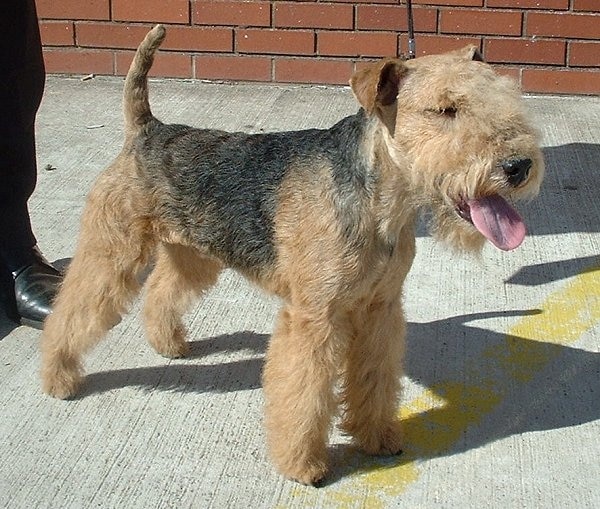
The Lakeland Terrier is a dog breed, which takes its name from its place of origin, the Lake District in England. The dog is a small to mid-size member of the Terrier family. While independent in personality, it interacts well with owners and all family members, and is mostly hypo-allergenic (non shedding). In the United Kingdom, the Lakeland Terrier is considered a vulnerable dog breed at risk of going extinct through low levels of breeding, according to The Kennel Club. In the United States, the Lakeland Terrier ranked 148 out of 193 breeds by number of American Kennel Club puppy registrations in 2019.
Read More About Lakeland Terrier / Source
Bluetick Coonhound

The Bluetick Coonhound is a breed of coonhound originating in the United States. The Bluetick Coonhound is known for its friendly personality, cold nose, and deep bawl mouth. It is most commonly used as a raccoon hunting dog, but may also be kept as a pet.
Read More About Bluetick Coonhound / Source
King Charles Spaniel

The King Charles Spaniel (also known as the English Toy Spaniel) is a small dog breed of the spaniel type. In 1903, the Kennel Club combined four separate toy spaniel breeds under this single title. The other varieties merged into this breed were the Blenheim, Ruby and Prince Charles Spaniels, each of which contributed one of the four colours available in the breed.
Thought to have originated in East Asia, toy spaniels were first seen in Europe during the 16th century. They became linked with English royalty in the time of Queen Mary I and were made famous by their association with King Charles II. Members of the breed were owned by Queen Victoria (Dash) and her great-granddaughter Grand Duchess Anastasia Nikolaevna of Russia.
The King Charles Spaniel and the other types of toy spaniels were crossbred with the Pug in the early 19th century to reduce the size of the nose, as was the style of the day. The 20th century saw attempts to restore lines of King Charles Spaniels to the breed of Charles II’s time. These included the unsuccessful Toy Trawler Spaniel and the now popular Cavalier King Charles Spaniel. The Cavalier is slightly larger, with a flat head and a longer nose, while the King Charles is smaller, with a domed head and a flat face.
Historically the breeds that were merged into the King Charles Spaniel were used for hunting; due to their stature they were not well suited. They have kept their hunting instincts, but do not exhibit high energy and are better suited to being lapdogs. The modern breed is prone to several health problems, including cardiac conditions and a range of eye problems.
Read More About King Charles Spaniel / Source
German Pinscher
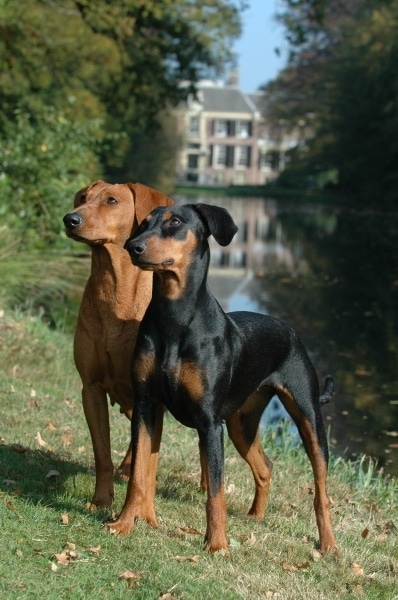
The German Pinscher or Deutscher Pinscher is a German breed of terrier in the Pinscher and Schnauzer group.: 218 It shares common origins with the Schnauzer, of which it is essentially a short-haired equivalent. It is seen in two colours, either black-and-tan or self-coloured red, this varying from deer-red to a dark reddish brown.It is an endangered breed, and is listed in category III of the Rote Liste of the Gesellschaft zur Erhaltung alter und gefährdeter Haustierrassen. It is a distinct and separate breed from the Affenpinscher, the Austrian Pinscher and the Miniature Pinscher or Zwergpinscher.
Read More About German Pinscher / Source
Tibetan Mastiff
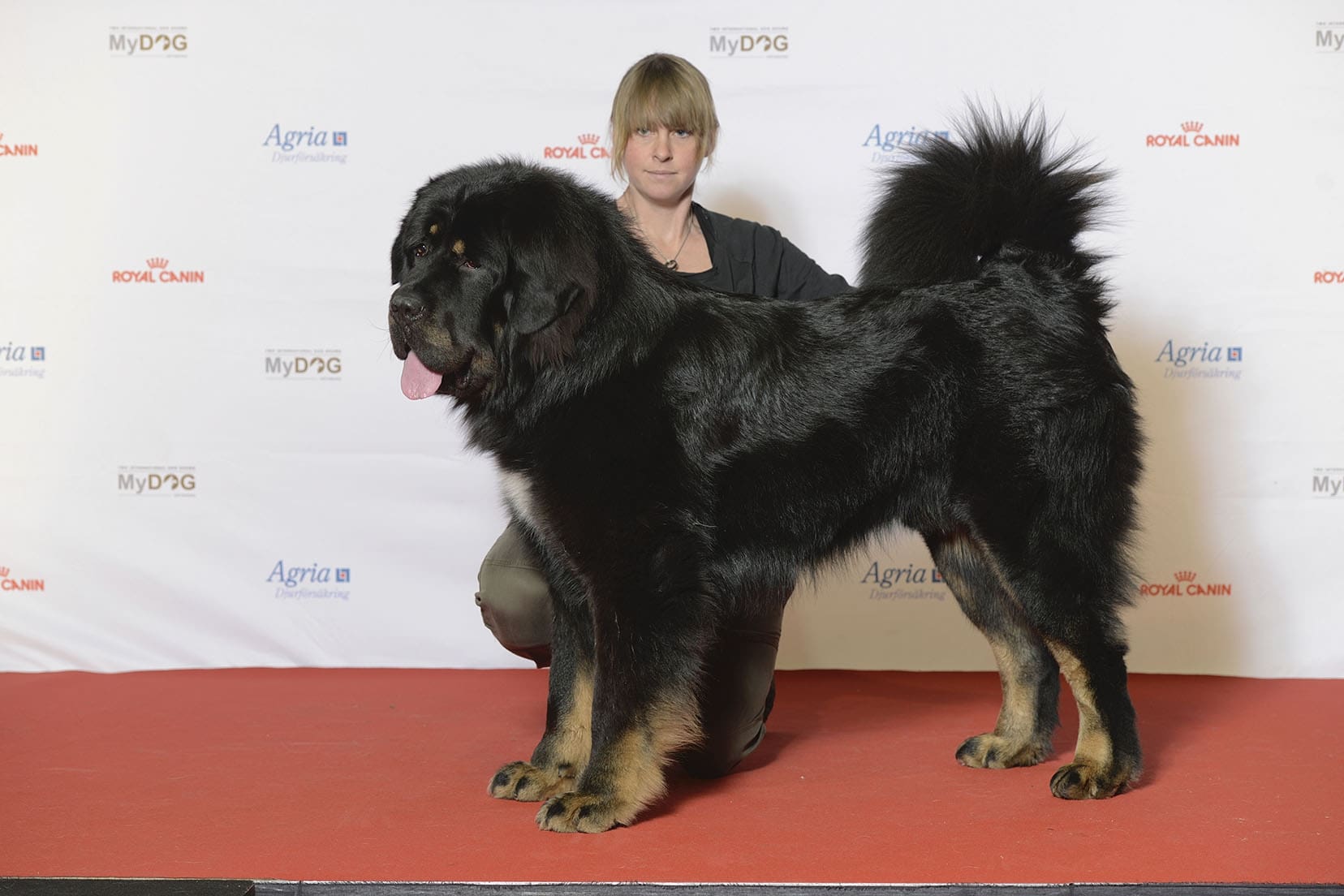
The Tibetan Mastiff (Tibetan: འདོགས་ཁྱི, THL: Do khyi, Wylie: ‘dogs khyi, Chinese: 藏獒, Pinyin: Zàng áo, Nepali: Bhote Kukur, Mongolian: Bhankhar, Hindi/Garhwali/Kumaoni: Bhotiya/Bakharwal, Kashmiri: Gaddi, Ladakhi: Chang khi, Dzongkha: Byob Chi) is a large size Tibetan dog breed. Its double coat is medium to long, subject to climate, and found in a wide variety of colors, including solid black, black and tan, various shades of red (from pale gold to deep red) and bluish-gray (dilute black), and sometimes with white markings around neck, chest and legs. This dog can run up to a speed of 20mph over short distances (32kph).
Read More About Tibetan Mastiff / Source
Bedlington Terrier
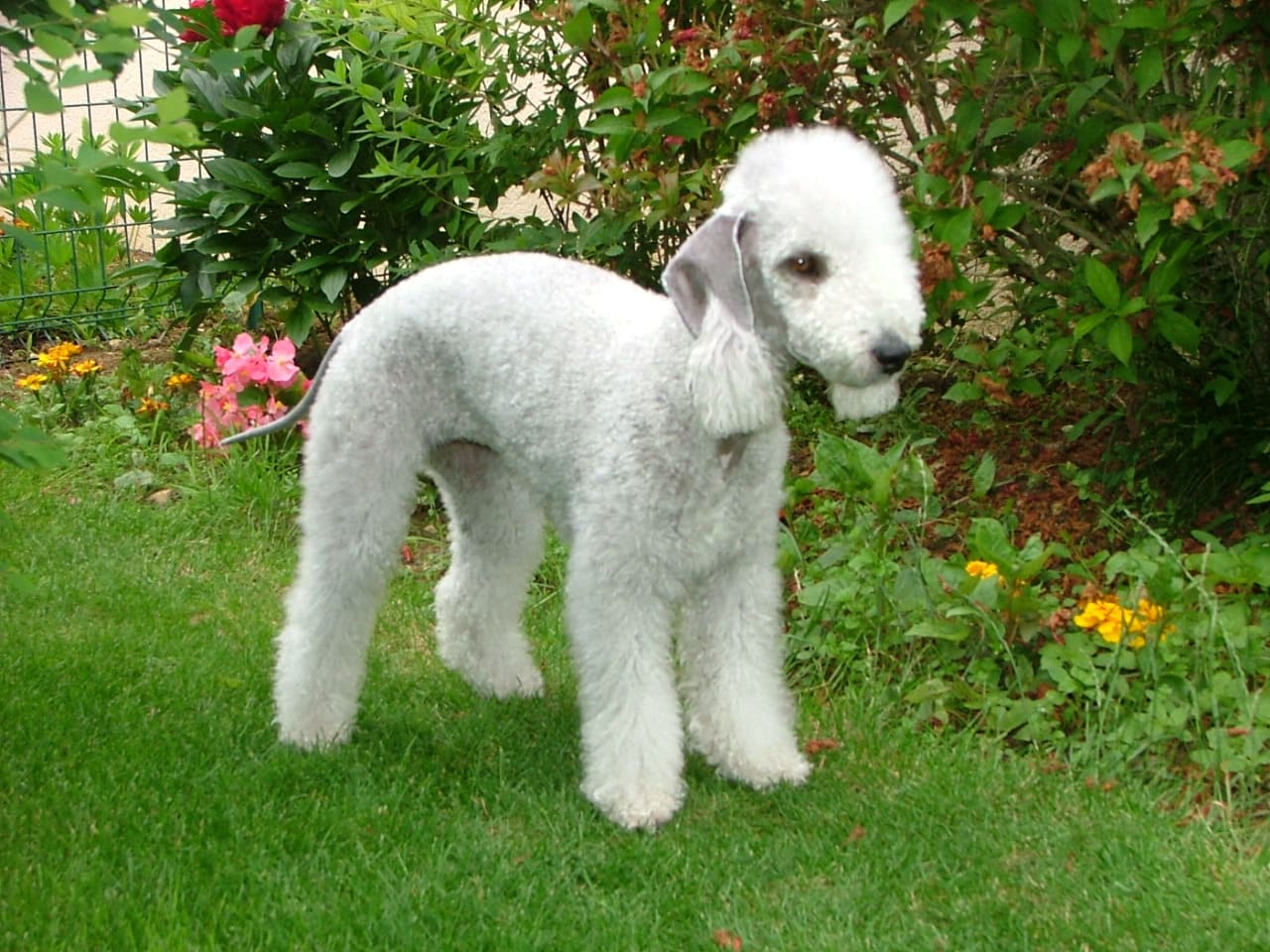
The Bedlington Terrier is a breed of small dog named after the mining town of Bedlington, Northumberland in North East England. Originally bred to hunt, the Bedlington Terrier has since been used in dog racing, numerous dog sports, as well as in conformation shows and as a companion dog. It is closely related to the Dandie Dinmont Terrier, Whippet and Otterhound.
It is described as a very versatile yet contradictory dog. They have powerful swimming skills, comparable to those of water dogs such as the Newfoundland, and are noted for being very quick and having high endurance. They love snow, and can achieve a Husky-like turn of speed on ice or in deep powder, using their powerful noses as a plough. Bedlingtons are noted for their similarity in appearance to lambs. The dogs have blue, liver or sandy colouration, all three of which may have tan points. Their fur forms a distinctive top knot on the dog’s head. It is nonshedding and with minimal odor but needs weekly grooming to remove dead hair.Originally known as the Rothbury or Rodbury Terrier, the name Bedlington Terrier was not applied to the breed until 1825, but some dogs have pedigrees that can be traced back as far as 1782. The first dog show with a class for Bedlington Terriers was held in 1870 at Bedlington. Bedlington Terriers shown at early shows were frequently dyed to improve the look of their fur. In 1948, a Bedlington Terrier known as Rock Ridge Night Rocket won best in show at the Westminster Kennel Club Dog Show. The breed has a high incidence of copper toxicosis, but with the exception of eye problems, it is mostly free from health complaints.
Read More About Bedlington Terrier / Source
Puli (Dog)

The Puli is a small-medium breed of Hungarian herding and livestock guarding dog known for its long, corded coat. The tight curls of the coat appear similar to dreadlocks. A similar-looking, but much larger breed – also Hungarian – is the Komondor.
Plural form of Puli is Pulik in Hungarian.
Read More About Puli (Dog) / Source
Barbet (Dog)
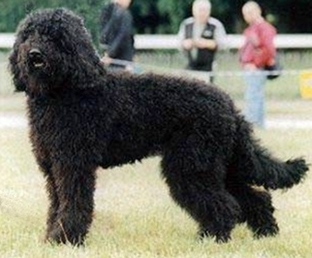
The Barbet is a breed of dog; it is a medium-sized French water dog. It is listed in Group 8 (retrievers, flushing dogs, water dogs) by the Société Centrale Canine, the French Kennel Club and the Fédération Cynologique Internationale (International Canine Federation).
The breed name comes from the French word barbe, which means ‘beard’.
Read More About Barbet (Dog) / Source
Sealyham Terrier
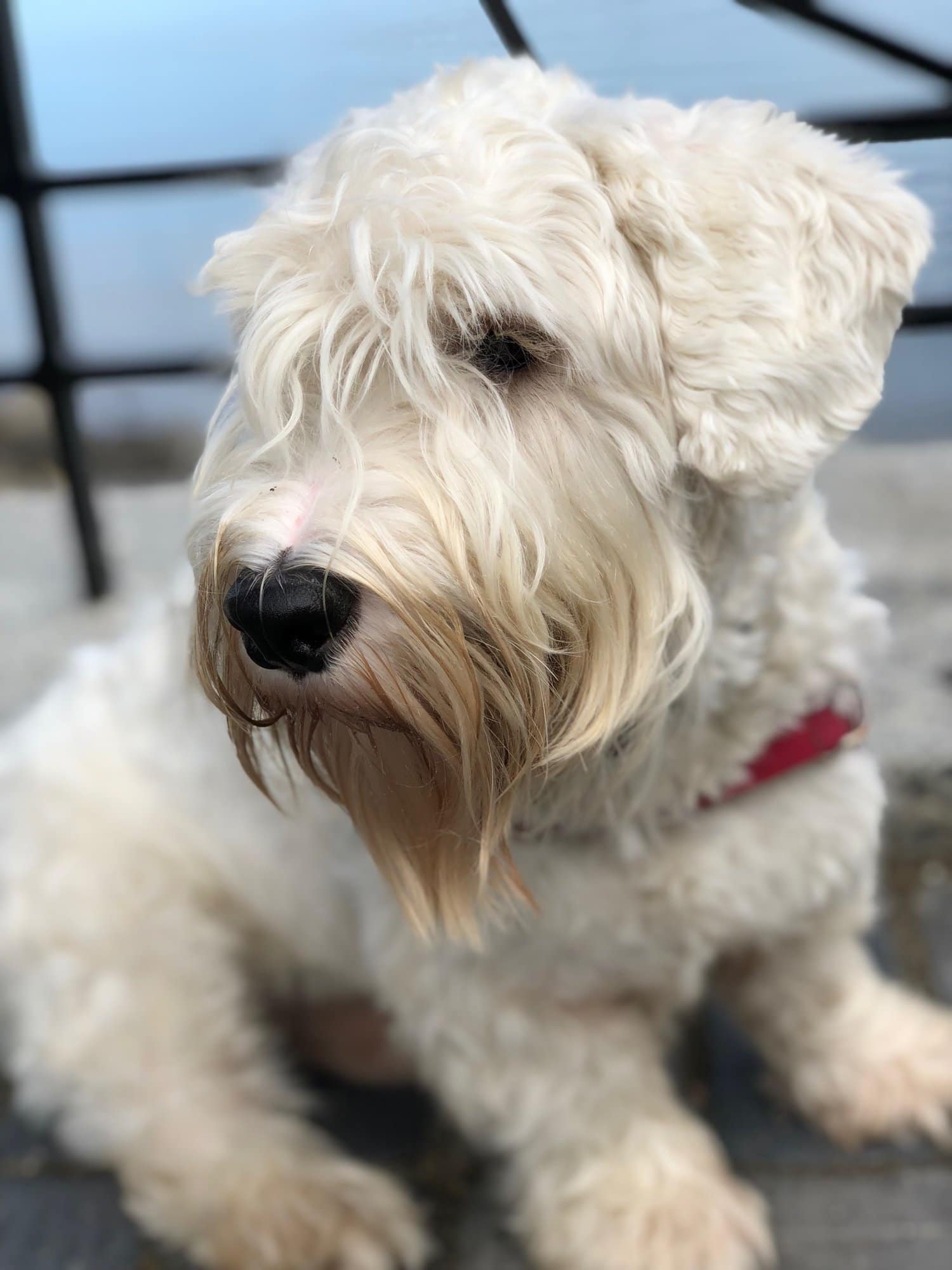
The Sealyham Terrier (Welsh: Daeargi Sealyham) is a rare Welsh breed of small to medium-sized terrier that originated in Wales as a working dog. It is principally a white-bodied, rough-coated breed, developed in the mid-to-late-19th century by Captain John Edwardes at Sealyham House, Pembrokeshire.
Following the First World War, it surged in popularity and was associated with Hollywood stars and members of the British Royal Family. Its numbers have dropped significantly since then, with the breed listed as a Vulnerable Native Breed by the Kennel Club; an all-time low was recorded in 2008 when only 43 puppies were registered in the United Kingdom. This decline has been blamed on an influx of foreign and designer breeds, and the Sealyham’s reduced usefulness as a working dog.
This breed is equally suitable as a family dog or a working terrier, given the right training. It is affected by few breed specific breed disorders, with the only two prevalent conditions being lens luxation and canine degenerative myelopathy. A DNA test is now readily available to identify dogs who carry the gene that causes lens luxation and breeding programs can be adjusted.
Read More About Sealyham Terrier / Source
Spanish Water Dog
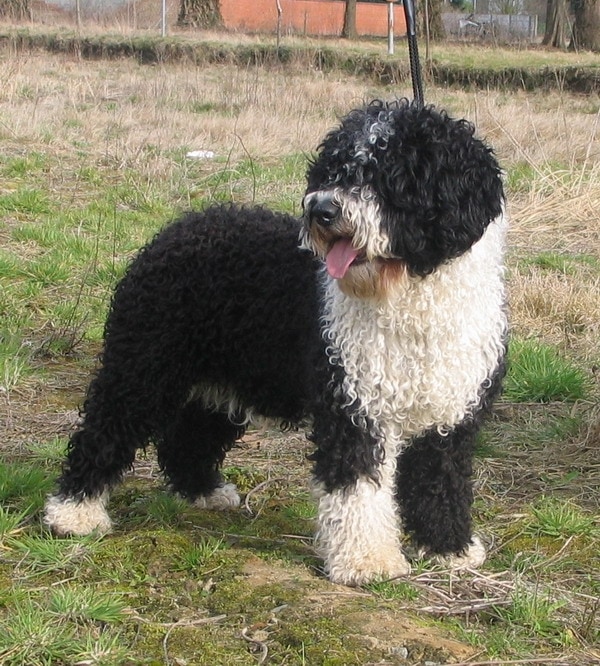
The Spanish Water Dog (perro de agua español) breed is used in Spain as a general purpose sheepdog and guard. It is also used sometimes as a gundog, and is skilled at retrieval from water.
Read More About Spanish Water Dog / Source
Briard (Dog)

The Briard or Berger de Brie is a French breed of large shepherd dog, traditionally used both for herding sheep and to defend them. It was first shown at the first Paris dog show, in 1863; the first Briard to be registered in the Livre des Origines Françaises, the national stud-book, was Sans Gêne in 1885. It was in the past also known as the Chien de Berger français de Plaine.
Read More About Briard (Dog) / Source
Berger Picard
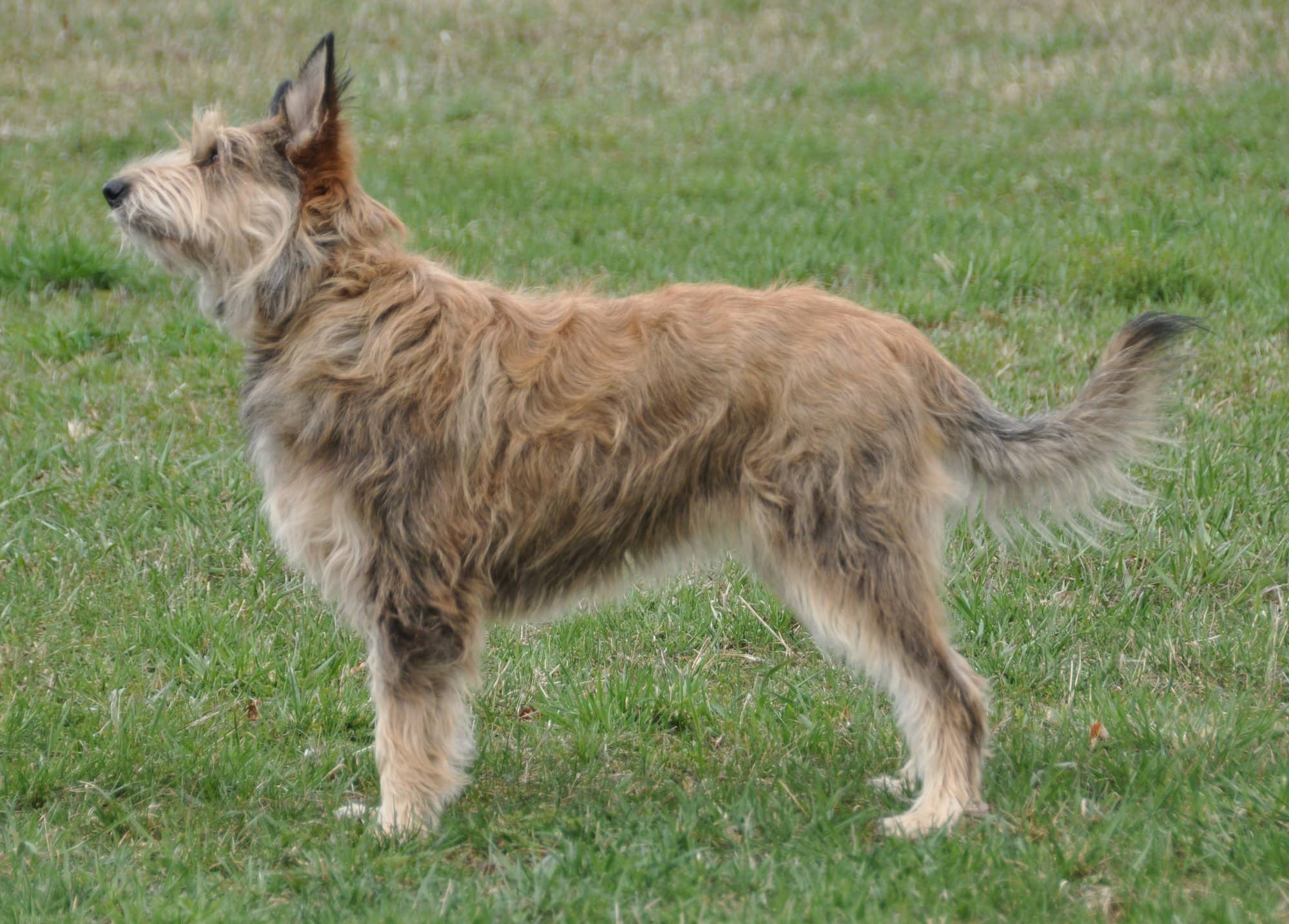
The Berger Picard (, French: [bɛʁʒe pikaʁ]) or Picardy Shepherd, is a French herding dog originating in Picardy. These dogs nearly became extinct after both World War I and World War II and remain a rare breed.
Read More About Berger Picard / Source
Entlebucher Mountain Dog

The Entlebucher Sennenhund or Entlebucher Mountain Dog is a medium-sized herding dog, it is the smallest of the four regional breeds that constitute the Sennenhund dog type. The name Sennenhund refers to people called Senn, herders in the Swiss Alps. Entlebuch is a region in the canton of Lucerne in Switzerland. The breed is also known in English as the Entelbuch Mountain Dog, Entelbucher Cattle Dog, and similar combinations.
Read More About Entlebucher Mountain Dog / Source
Icelandic Sheepdog

The Icelandic Sheepdog (Icelandic: Íslenskur fjárhundur [ˈistlɛnskʏr ˈfjaurˌhʏntʏr̥]) is a breed of dog of spitz type originating from the dogs brought to Iceland by the Vikings. It is of similar type to the Norwegian Buhund, the Shetland Sheepdog, and the Welsh Corgi. They are commonly used to herd sheep in the Icelandic countryside.
Read More About Icelandic Sheepdog / Source
Wirehaired Vizsla
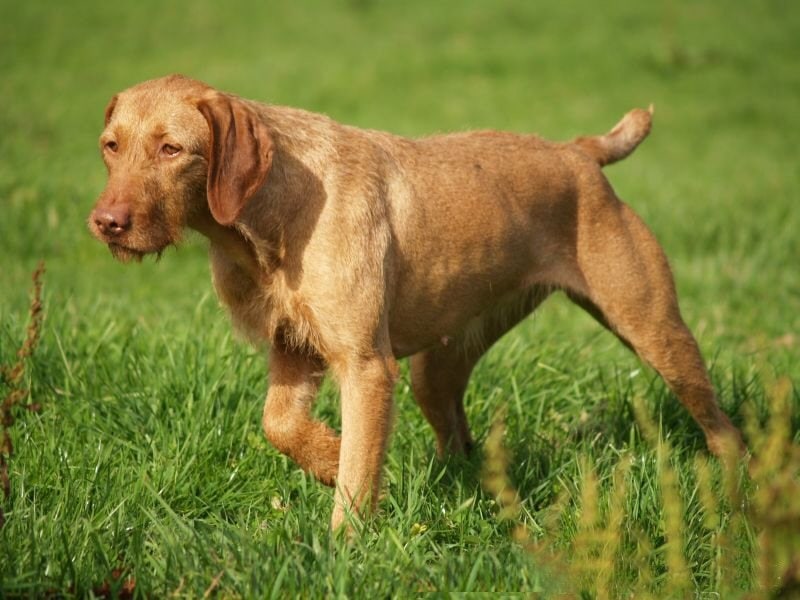
The Hungarian Wirehaired Vizsla ( VEESH-lə; Hungarian: [ˈviʒlɒ]) is the English name of the Drótszőrű Magyar Vizsla, a dog breed originating in Hungary, with the name translating directly as Hungarian wirehaired pointer. The English plural is vizslas or sometimes vizslak, based on the Hungarian plural vizslák [ˈviʒlaːk]).
The Hungarian Wirehaired Vizslas (HWV) is a versatile hunting dog that was traditionally and currently used to hunt, point, and retrieve, referring to the dog’s natural ability in tracking, pointing, and retrieving game. The breed also has a level personality making them suited for families. The Wirehaired Vizsla is a versatile, natural hunter endowed with an excellent nose and an above average trainability. Although they are lively, gentle mannered, demonstrably affectionate and sensitive, they are also fearless and possessed of a well-developed protective instinct. The breed has a firmness on point, is an excellent retriever, and has the determination to remain on the scent even when swimming. The overall appearance embodies the qualities of a multi-purpose pointing dog, endurance, working ability and an easily satisfied nature. This is a dog of power and drive in the field, yet is a tractable and affectionate companion in the home. The Hungarian Wirehaired Vizsla is a rare dog breed in Hungary with an estimated 30 litters (approximately 140-150 dogs) being registered annually (as reported in 2009).
Read More About Wirehaired Vizsla / Source
Pumi (Dog)

The Pumi (in Hungarian, the plural form is pumik) is a medium-small breed of sheep dog from Hungary. They are versatile stock dogs equally adept at gathering, driving and keeping stock under control. They have a long head with semi-erect ears, a whimsical expression, and a tail that forms a circle over the back. The coat (black, white, grey, or fawn) is a combination of wavy and curly hair forming curls all over the body.
The Pumi is considered to have arisen from the cross-breeding of Hungarian Puli with French and German herding dogs from the 17th century onwards. The international breed standard was approved in 1935. The Pumi became an officially recognised breed in the US in 2011 and in the UK in 2015. There are over 2,000 Pumis registered in Hungary, with notable populations in Finland and Sweden and small but growing numbers of registrations in the US, UK and Germany.
Some refer to the Pumi as the “Hungarian herding terrier” because it has some terrier-like attributes such as quick movement, alert temperament, and a quadratic, lean and muscular body type.
Read More About Pumi (Dog) / Source
Portuguese Podengo
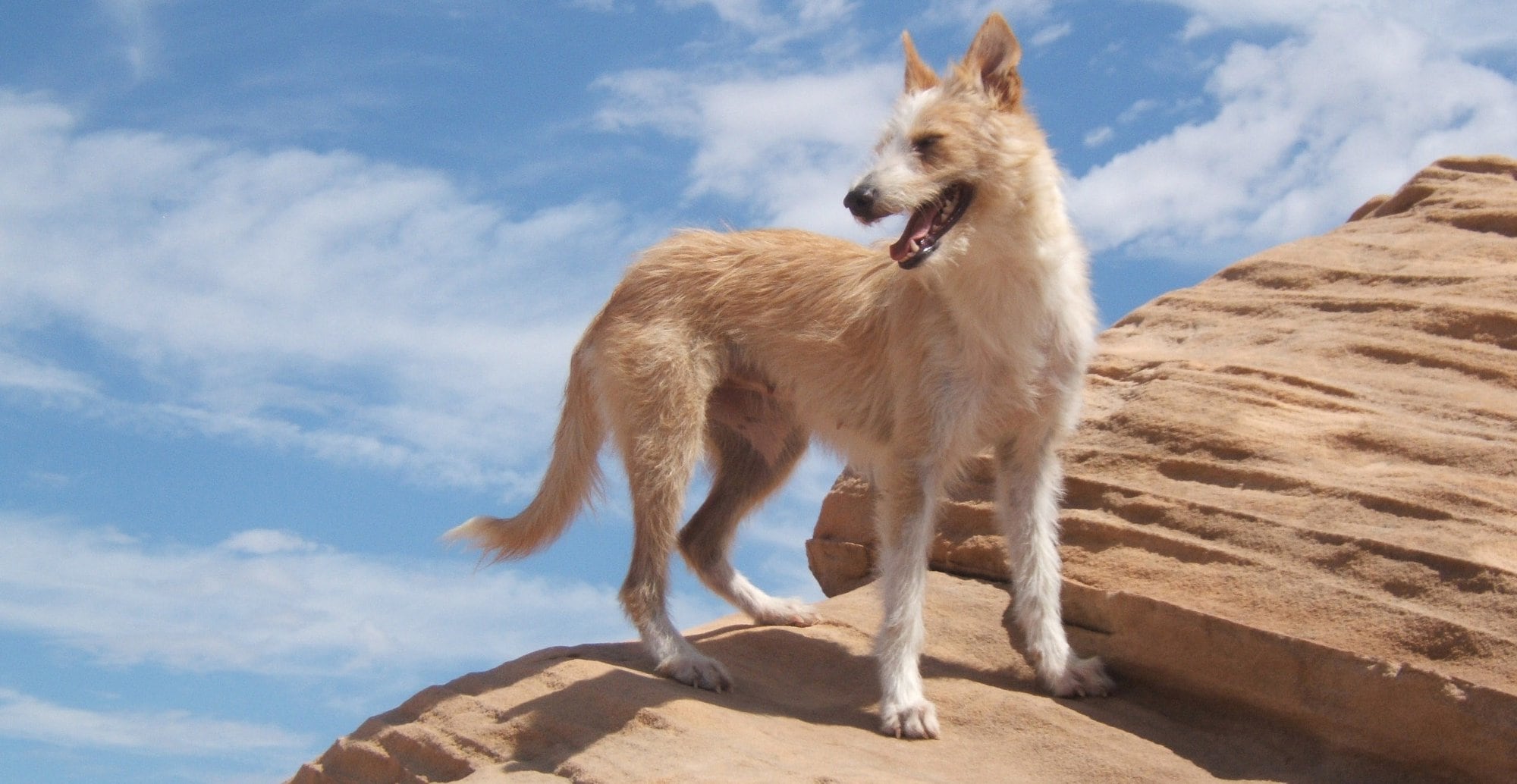
The Portuguese Podengo, also known as the Podengo Português or Portuguese Warren Hound, is hound (sight and scent) breed from Portugal. As a breed, the Podengo is divided into three size categories that are not interbred: small (Pequeno), medium (Médio) and large (Grande). Their coats are either short and ‘smooth’, or longer and ‘wired’. The smooth coated variety is traditional, whereas the wire coated variety is an outcome of the assimilation of various other breeds during the 20th century. In general, the breed is healthy; the Pequeno (small) variety has an average lifespan of approximately 15–17 years.
All Podengo types are hardy, intelligent and lively dogs, excelling at agility and making fine companions. Loyal and fearless, Podengos are also good house guards and are amenable to training by dog experienced people and those that enjoy primitive (unrefined, “less domesticated”) dog behavior.
Keen hunting dogs, the Podengo has an affinity for game regardless of size. Typically, the dogs hunt in a pack with their handler following. When game is found, they kill and retrieve it, or flush it towards the hunter to be shot. Each size category traditionally hunts game appropriate to their size and temperament. (Pequeno: rabbits; Medio: rabbits and wild boar; Grande: deer and wild boar).
Read More About Portuguese Podengo / Source
American Water Spaniel
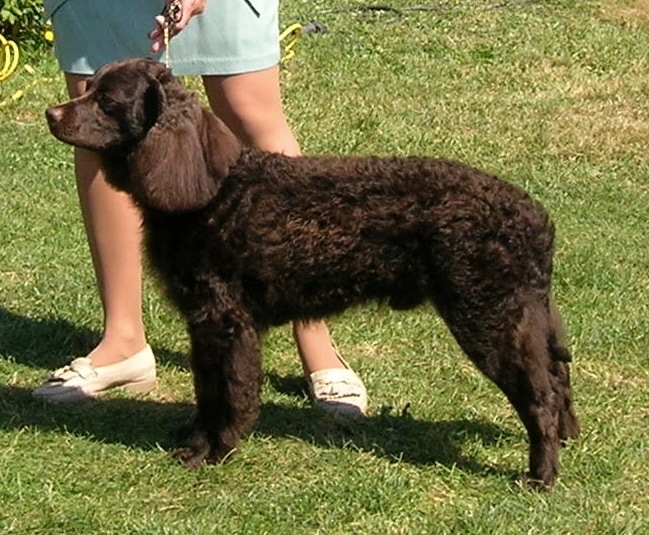
The American Water Spaniel, (often abbreviated to AWS), is a breed of spaniel which originated in the United States. It was developed in the state of Wisconsin during the 19th century from a number of other breeds, including the Irish and English Water Spaniels. The breed was saved by Dr. Fred J. Pfeifer, who set up the breed club and standard, and whose work led to recognition for the breed by the United Kennel Club, and later, the American Kennel Club. While they are the state dog of Wisconsin, they remain a rare breed.
They are medium-sized dogs, and have a double layered coat, which comes in a variety of brown related shades. A versatile hunting dog, they are also suitable for apartment life due to work by breeders to develop a breed with an even temperament. The AWS may have been involved in the development of the Boykin Spaniel.
Read More About American Water Spaniel / Source
Curly-coated Retriever
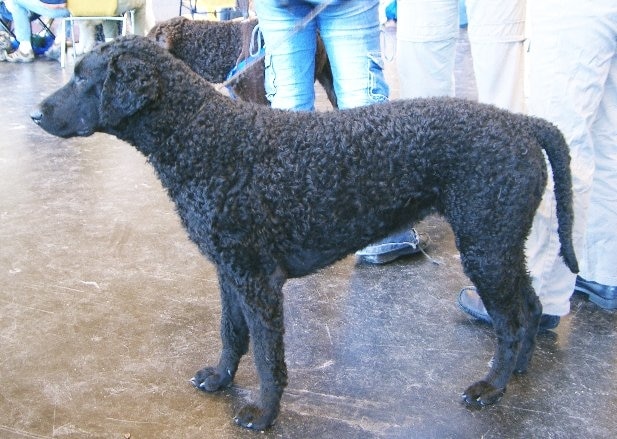
The Curly-coated Retriever (not always hyphenated, and often called the Curly for short) is a breed of dog originally bred in England for upland bird and waterfowl hunting. It is the tallest of the retrievers and is easily distinguishable by the mass of tight curls covering its body. Curly Coated and Wavy Coated (now known as the Flat-Coated Retriever) were the first two recognised retriever breeds, established as early as 1860.
Read More About Curly-coated Retriever / Source
Field Spaniel

The Field Spaniel is a medium-sized dog breed of spaniel type. They were originally developed to be all-black show dogs in the late 19th and early 20th centuries and were unpopular for work as a hunting dog. However, during the mid-20th century they were redeveloped as a longer-legged dog that was more suitable to be used for field work. They are now considered to be a rare breed, and are registered as a Vulnerable Native Breed by The Kennel Club.
Their fur is darker than other spaniels and they have no undercoat like most of the other field type spaniels. Their coats come mostly in solid colours with some occasional markings on the chest. They can make good family dogs and are patient with children, but can require some sort of purpose, be it hunting or agility work in order to prevent them from becoming bored and destructive.
Read More About Field Spaniel / Source
Kooikerhondje
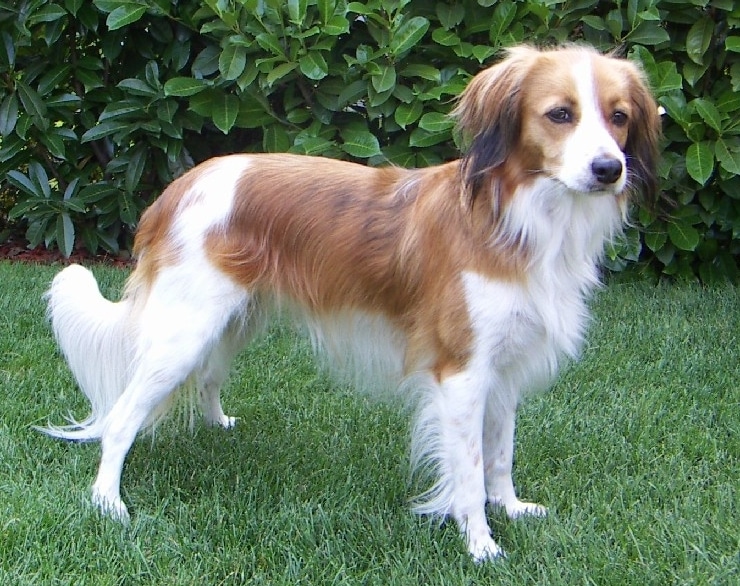
The Kooikerhondje (Dutch for “Duck catcher’s small dog”) is a small spaniel-type breed of dog of Dutch ancestry that was originally used as a working dog, particularly in an eendenkooi (duck decoy) to lure ducks. Kooikers were popular in the 17th and 18th century and appear in the paintings of Rembrandt and Jan Steen. The breed is gaining popularity in the United States, Canada and Scandinavia, where it is still relatively unknown.
Read More About Kooikerhondje / Source
Affenpinscher
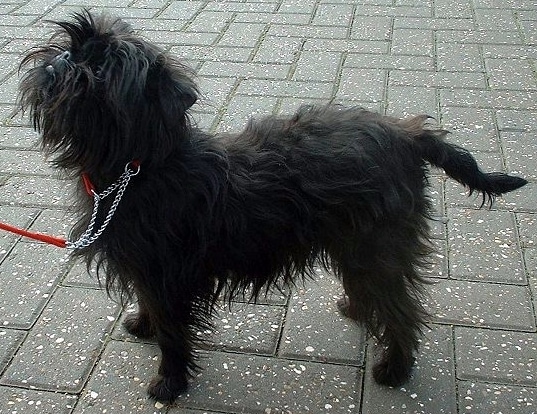
The Affenpinscher, also known as the Monkey Terrier, is a terrier-like toy Pinscher breed of dog.
Read More About Affenpinscher / Source
Finnish Lapphund

The Finnish Lapphund (or Finnish Lapponian Dog) is a hardy, easy going, medium-size breed of Spitz type. Traditionally it has been used for herding reindeer. Although it is one of the most popular dog breeds in its native country, Finland, it is not very numerous outside of the Nordic countries.
Read More About Finnish Lapphund / Source
Scottish Deerhound
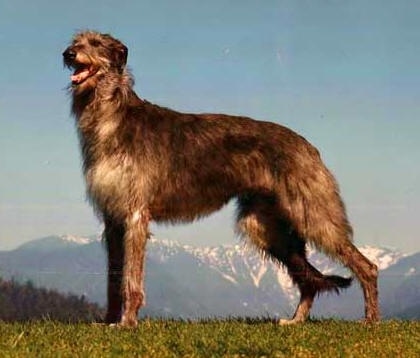
The Scottish Deerhound, or simply the Deerhound, is a large breed of sighthound, once bred to hunt the red deer by coursing. In outward appearance, the Scottish Deerhound is similar to the Greyhound, but larger and more heavily boned with a rough-coat.
Read More About Scottish Deerhound / Source
Norwegian Buhund

The Norwegian Buhund (Norwegian: Norsk buhund) is a breed of dog of the spitz type. It is closely related to the Icelandic Sheepdog and the Jämthund. The Buhund is used as a watch dog and an all purpose farm and herding dog.
Read More About Norwegian Buhund / Source
Glen of Imaal Terrier
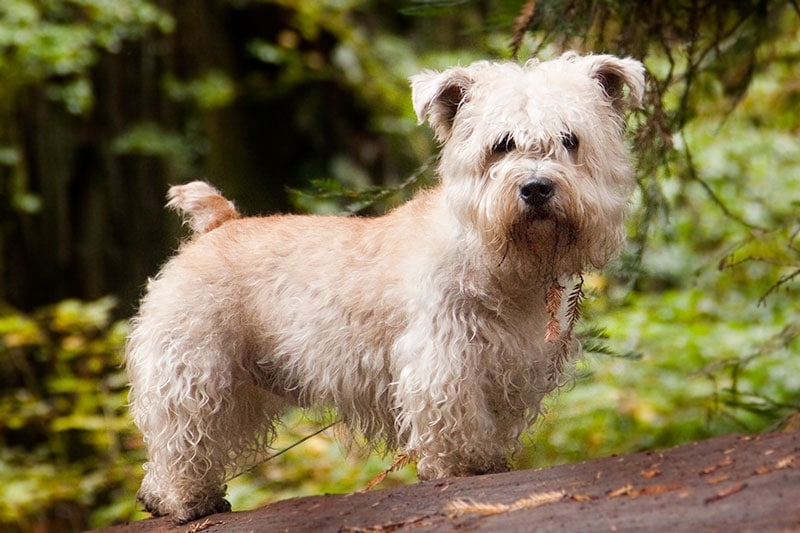
The Glen of Imaal Terrier (Irish: Brocaire Uí Mháil) is a breed of dog of the terrier category and one of four Irish terrier breeds. It is sometimes called the Irish Glen of Imaal Terrier or the Wicklow Terrier, and the name of the breed is often shortened by fanciers to just Glen.
The breed originates in, and is named for, the Glen of Imaal in County Wicklow, Ireland. It was recognised first by the Irish Kennel Club in 1934 and most recently by the American Kennel Club in 2004. The Canadian Kennel Club voted to fully recognize Glens in 2017 after the breed spent years on the Miscellaneous list; approval by Agriculture Canada is pending.
Reportedly, the Glen’s history began during the reign of Elizabeth I, who hired French and Hessian mercenaries to put down a rebellion in Ireland. After the conflict, many of these soldiers settled in the Wicklow area. They brought with them their low-slung hounds, which they bred with the local terrier stock, eventually developing a distinctive breed that became known as the Glen of Imaal Terrier.Glens were originally used for eradicating other animals such as rat, fox, badger, and otter, and also as a general-purpose farm dog for herding and family companionship. Unlike many other terriers, they are “strong dogs” rather than “sounders”—they were bred to work mute to ground, going silently into dens after their quarry rather than barking at it to alert their handlers. In hunting trials, which used to be required by many kennel clubs for championships, Glens were disqualified if they sounded at the quarry. For this reason, today they are among the quietest terriers.
According to Irish lore, Glen of Imaal Terriers were also used as turnspit dogs to turn meat over fires for cooking. Evidence for this is scarce, and engravings of such dogs from the 19th century do not bear much resemblance to today’s Glen. It is, however, repeated in many descriptions of the breed and often used in color commentary by dog show announcers.The breed almost died out before being revived in the early twentieth century by breeders in its homeland. Paddy Brennan Tinahely Co Wicklow, and Willie Kane Tipperary are recognised as two breeders that revived the breed. Today, the Glen of Imaal Terrier is still one of the rarest breeds of dog (in the US, living registered animals number in the hundreds) and the least-known Irish terrier breed. It is considered a vulnerable native breed by the UK’s Kennel Club, which tracks breeds in which fewer than 300 puppies are registered each year.[1]
Read More About Glen of Imaal Terrier / Source
Irish Red and White Setter
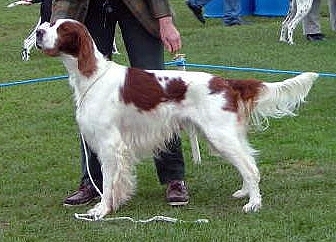
The Irish Red and White Setter (Irish: An Sotar Rua agus Bán) is a breed of dog. As with all setters, it is classified as a gundog in the UK and is included in the sporting group in America and Canada. It is virtually identical in use and temperament to the related Irish Setter, as well as the Gordon and English setters, but is more often found as a working gun dog.
The original purpose of the breed was to hunt gamebirds. In the UK, their quarry can be partridge or grouse, pheasant, ptarmigan, blackgame, snipe or woodcock as all these birds try to avoid predators by hiding rather than flying away. Overseas, they may be used to hunt quail, willow grouse, sand grouse, guinea fowl, sagehen or francolin.
Despite the breed’s early origins, it had almost become extinct at the end of the 19th century. During the 1920s, dedicated breeders managed to revive interest and restore the Irish Red and White setter to a viable position. It is still considered a vulnerable breed, but has gained recognition from all major kennel clubs.
Read More About Irish Red and White Setter / Source
Ibizan Hound

The Ibizan Hound (Spanish: podenco ibicenco, Catalan: ca eivissenc) is a lean, agile dog of the hound family. There are two hair types of the breed: smooth and wire. The more commonly seen type is the smooth. Some consider there to be a third type, long, but the longhair is most likely a variation of the wire.
Read More About Ibizan Hound / Source
Bergamasco Shepherd

The Bergamasco Shepherd, Italian: Cane da Pastore Bergamasco, is an Italian breed of sheepdog. It originated in the Alpi e Prealpi Bergamasche, where it was used as a herding dog for both sheep and cattle.
Read More About Bergamasco Shepherd / Source
Otterhound
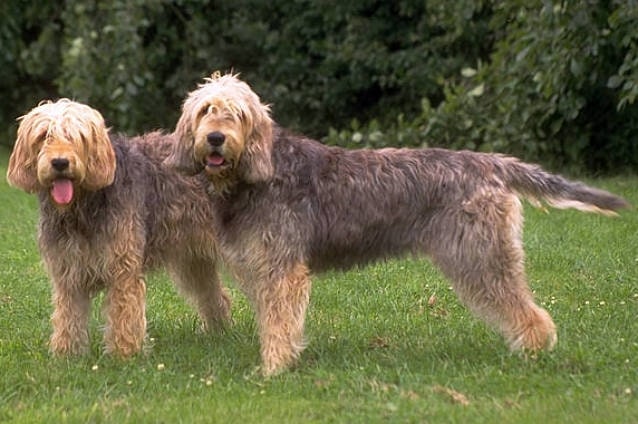
The Otterhound is a British dog breed. It is a scent hound and is currently recognized by the Kennel Club as a Vulnerable Native Breed with around 600 animals worldwide.
Read More About Otterhound / Source
Kuvasz
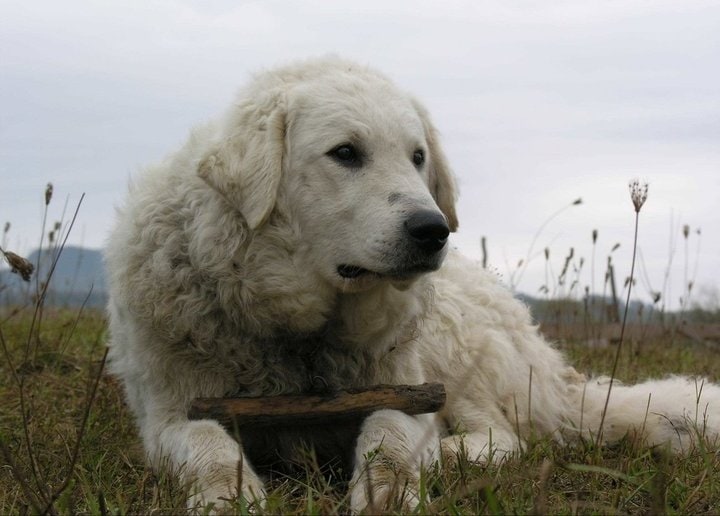
The Kuvasz is a traditional Hungarian breed of flock guardian dog. Mention of the breed can be found in old Hungarian texts. They have historically been royal guard dogs, or guarded livestock, but have been increasingly found in homes as pets over the last seventy years. The American Kennel Club includes the breed in the working dog group.
Read More About Kuvasz / Source
Komondor
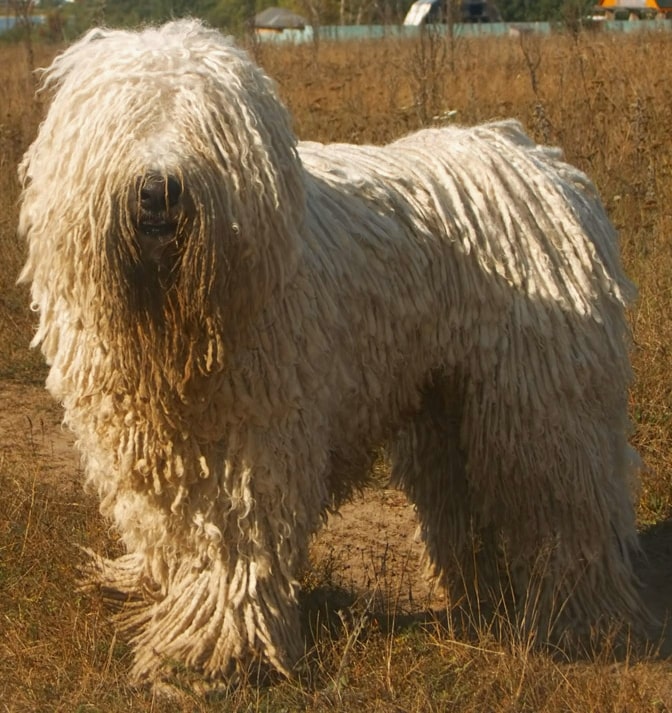
The Komondor (), also known as the Hungarian sheepdog, is a large, white-coloured Hungarian breed of livestock guardian dog with a long, corded coat.Sometimes referred to as ‘mop dogs’, the Komondor is a long-established dog breed commonly employed to guard livestock and other property. The Komondor was brought to Europe by the Cumans and the oldest known mention of it is in a Hungarian codex from 1544. The Komondor breed has been declared one of Hungary’s national treasures, to be preserved and protected from modification.
Read More About Komondor / Source
Cirneco dell'Etna
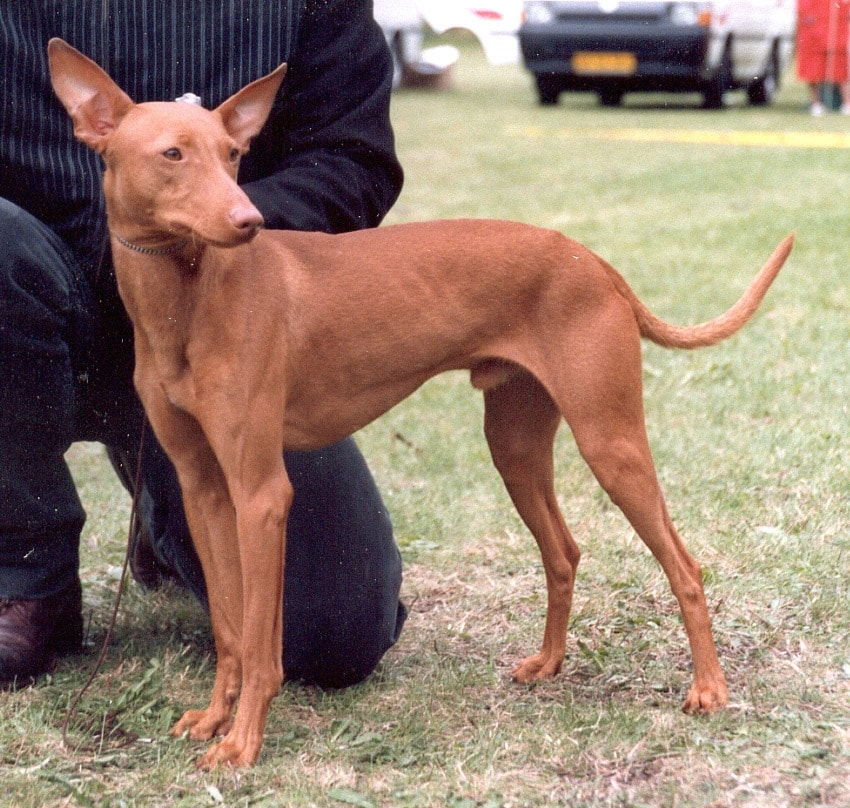
The Cirneco dell’Etna is an Italian breed of hunting dog from the Mediterranean island of Sicily. It is named for the Etna volcano in eastern Sicily. It has a keen sense of smell, and is used to hunt small game, particularly rabbits, for which there are specific field trials [1].
Read More About Cirneco dell'Etna / Source
Pharaoh Hound

The Pharaoh Hound or Kelb tal-Fenek is a Maltese breed of hunting dog. It is traditionally used for rabbit-hunting in the rocky terrain of the islands; the Maltese name means “rabbit dog”.
It is classified by the Fédération Cynologique Internationale in its “Spitz and primitive” group, and shows similarities to other Mediterranean breeds in that group such as the Cirneco dell’Etna, the Podenco Andaluz, the Podenco Canario, the Podenco Ibicenco and the Portuguese Podengo. It is the only Maltese dog breed with international recognition.
Read More About Pharaoh Hound / Source
Pyrenean Sheepdog

The Pyrenean Sheepdog, the Chien de Berger des Pyrénées in French, is a small to medium-sized breed of herding dog from the Pyrenees Mountains region of France. It is found herding flocks of sheep throughout the Pyrenees alongside the much larger Pyrenean Mountain Dog which is kept as a flock guardian.
The Pyrenean Sheepdog is found in three coat types, the long-haired and goat-haired (together called the Chien de Berger des Pyrénées À Poil Long) as well as the smooth-faced (called the Chien de Berger des Pyrénées À Face Rase); the latter is recognised as a separate breed from the former two by the Société Centrale Canine.
Read More About Pyrenean Sheepdog / Source
Skye Terrier
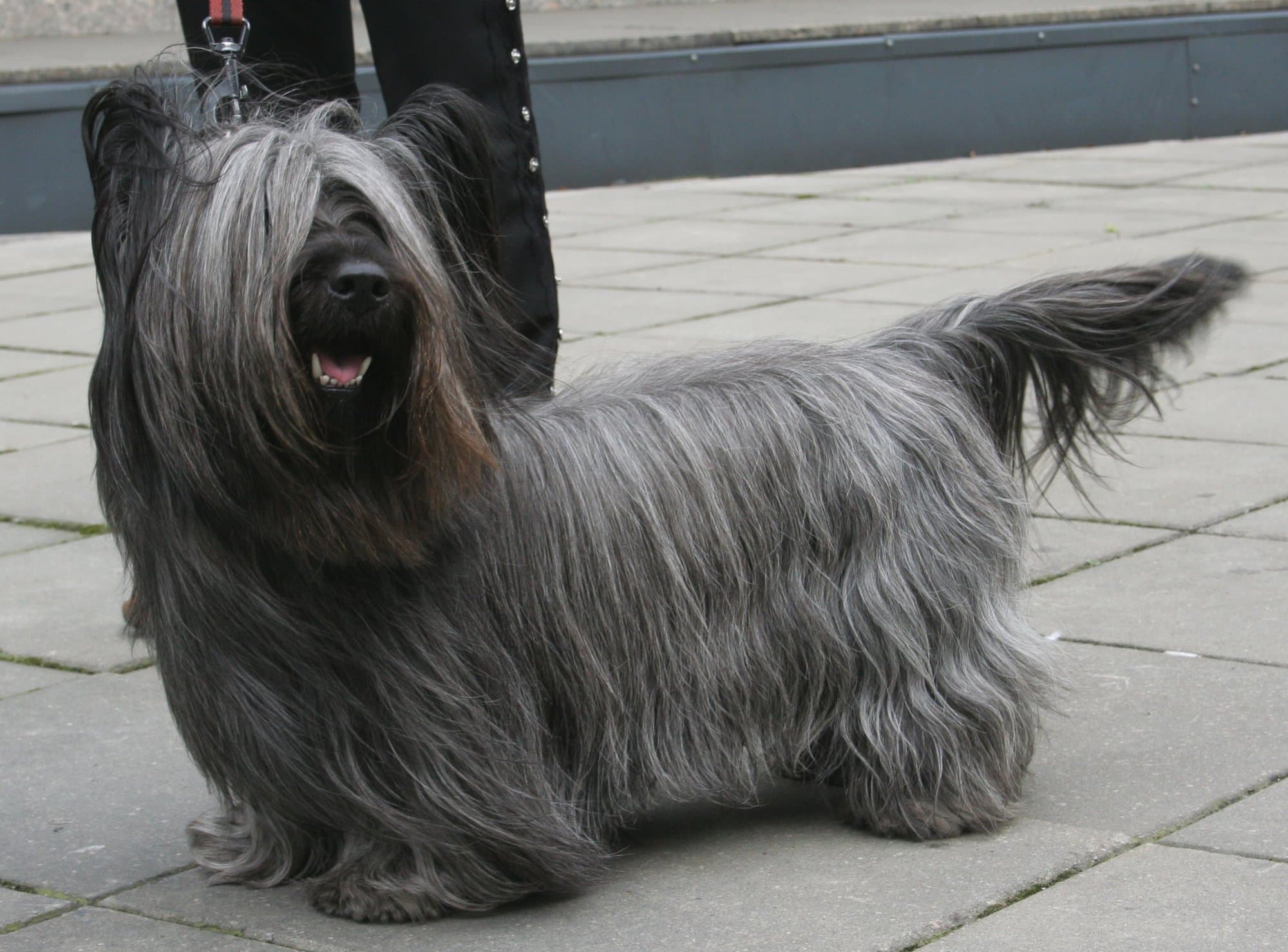
The Skye Terrier is a breed of dog that is a long, low, hardy terrier and “one of the most endangered native dog breeds in the United Kingdom” according to The Kennel Club.
Read More About Skye Terrier / Source
Canaan (Dog)
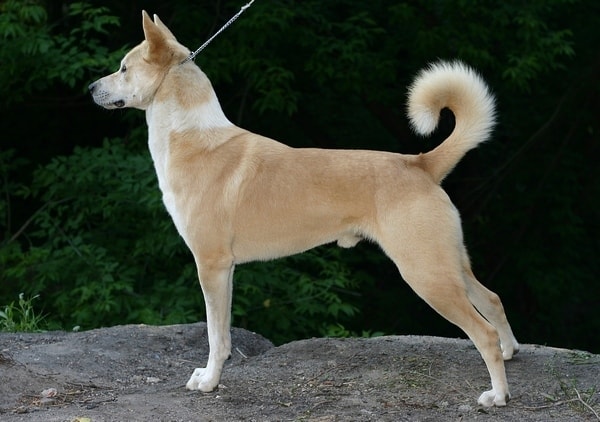
The Canaan Dog is a breed of pariah dog abundant across the Middle East. It can be found in Israel, Palestine, Jordan, Lebanon and the Sinai Peninsula, and these or dogs very similar are also found in Iraq and Syria. It is the national dog of Israel. As of 2012, there were 2,000 to 3,000 Canaan Dogs across the world.
Read More About Canaan (Dog) / Source
American English Coonhound

The English Coonhound, also referred to as the American English Coonhound (by the American Kennel Club only) or the Redtick Coonhound, is a breed of coonhound that originated in and is typically bred in the Southern United States. It is descended from hunting hounds, especially foxhounds, brought to America by settlers during the 17th and 18th centuries. The breed’s first recognition came from the United Kennel Club in 1905 as the English Fox and Coonhound. Further recognition has been granted in recent years by the American Kennel Club, first in the Foundation Stock Service and in 2011 as a fully recognized member of the hound group.
The breed is of medium height and proportionate weight, and their coats come predominantly in three types: redtick, bluetick, and a tricolor tick pattern. The English Coonhound has a high prey drive and, while it is typically used in ‘coon hunting’, it is also skilled in treeing. This breed is generally a healthy one, but it is recommended that prospective owners learn to recognize symptoms of bloat, as its large size and deep chest put them at risk of this condition.
Read More About American English Coonhound / Source
Chinook (Dog)

The Chinook is a breed of sled dog, developed in the state of New Hampshire during the early 20th century. The Chinook is New Hampshire’s official state dog.
Read More About Chinook (Dog) / Source
Finnish Spitz
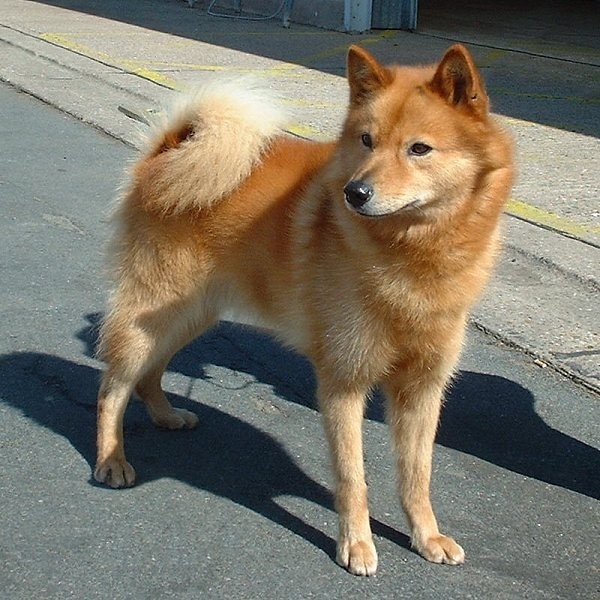
The Finnish Spitz (Finnish: suomenpystykorva) is a breed of dog originating in Finland. The breed was originally trained to hunt all types of game from squirrels and other rodents to bears. It is a “bark pointer”, indicating the position of game by barking, and drawing the game animal’s attention to itself, allowing an easier approach for the hunter. Its original game hunting purpose was to point to game that fled into trees, such as grouse, and capercaillies, but it also serves well for hunting elk. Some individuals have even been known to go after a bear. In its native country, the breed is still mostly used as a hunting dog. The breed is friendly and in general loves children, so it is suitable for domestic life. The Finnish Spitz has been the national dog of Finland since 1979.
Read More About Finnish Spitz / Source
Grand Basset Griffon Vendéen

The Grand Basset Griffon Vendéen or GBGV is a dog breed from France.
Read More About Grand Basset Griffon Vendéen / Source
Sloughi
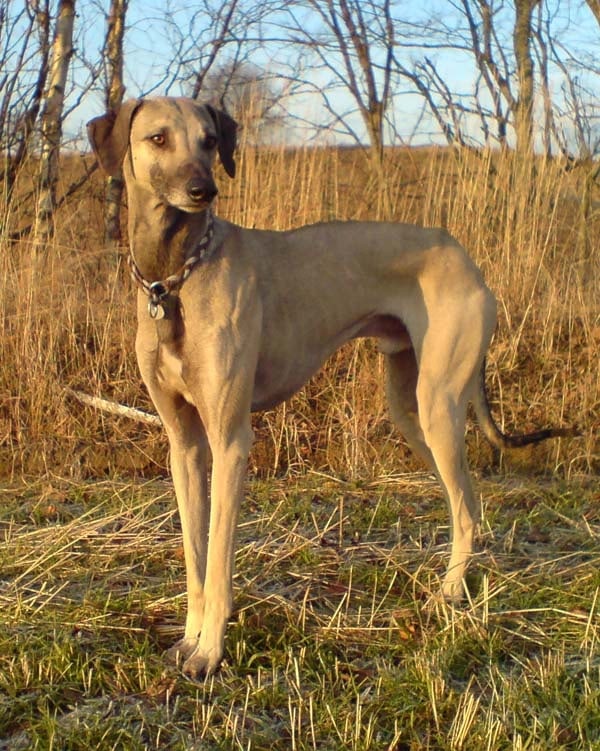
The Sloughi , or Arabian Greyhound (Arabic: سْلُوڭِي), is an ancient breed of domesticated dog, specifically a member of the sighthound family. It originates from North Africa and is found in Algeria, Tunisia, Morocco and Libya.
Read More About Sloughi / Source
American Foxhound
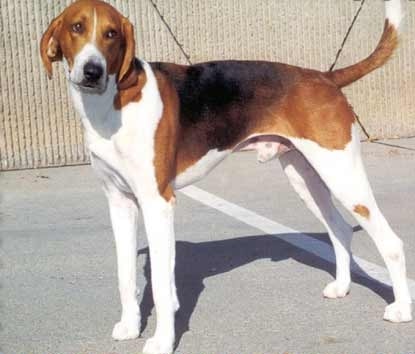
The American Foxhound is a breed of dog that is a cousin of the English Foxhound. They are scent hounds, bred to hunt foxes by scent.
Read More About American Foxhound / Source
Norwegian Lundehund
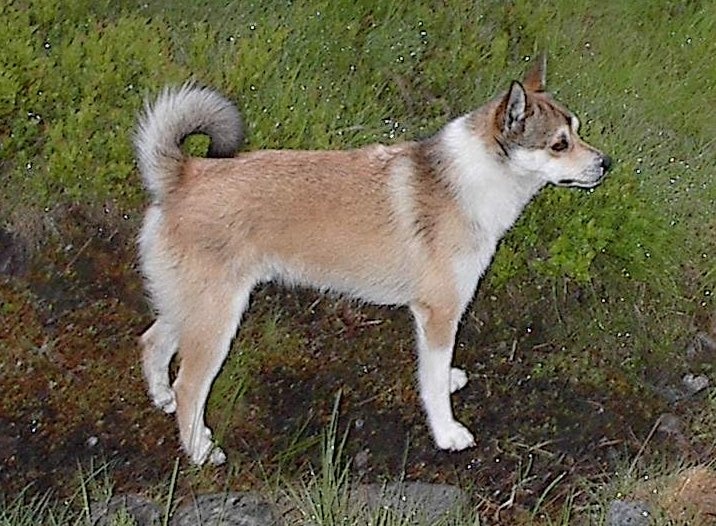
The Norwegian Lundehund (Norsk lundehund) is a small dog breed of the Spitz type that originates from Norway. Its name is a compound noun composed of the elements lunde, meaning puffin (Norwegian lunde, “puffin”, or lundefugl, “puffin bird”), and hund, meaning dog. The breed was originally developed for the hunting of puffins and their eggs on inaccessible nesting places in caves and on cliffs.
Read More About Norwegian Lundehund / Source
English Foxhound
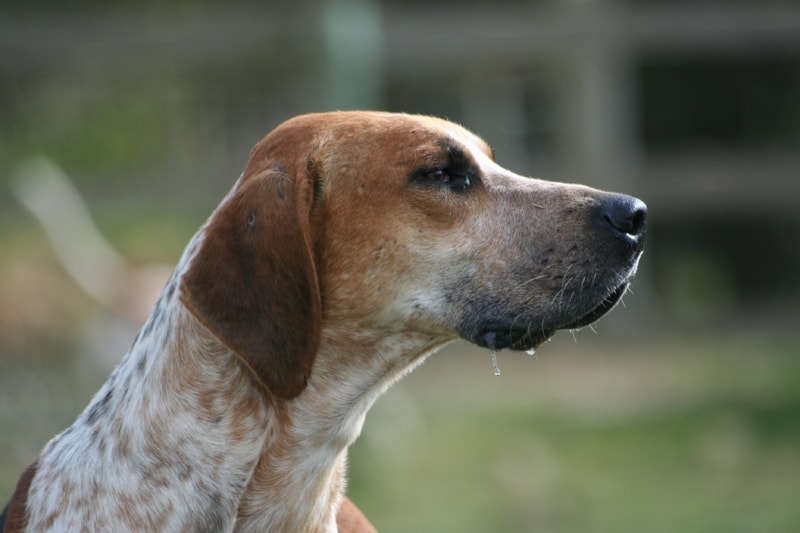
The English Foxhound is one of the four foxhound breeds of dog. It is a cousin of the American Foxhound. They are scent hounds, bred to hunt foxes by scent.
Read More About English Foxhound / Source




